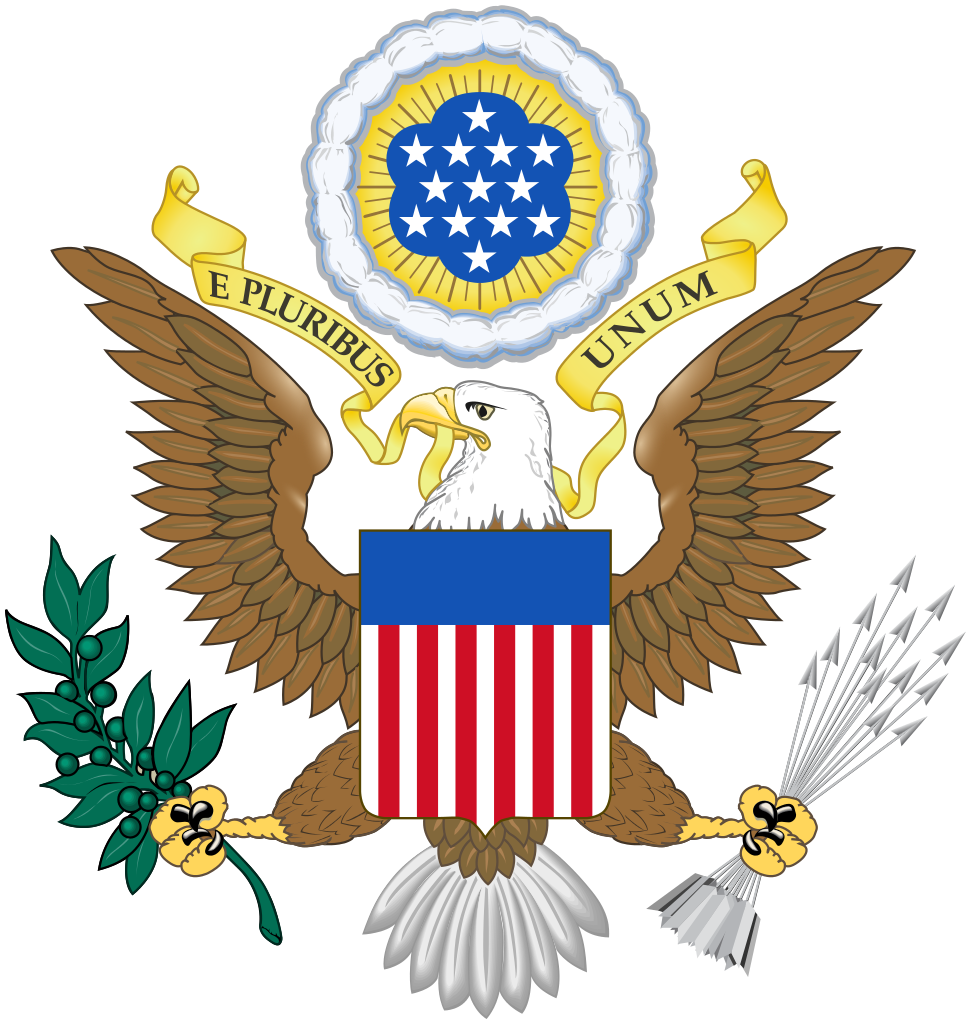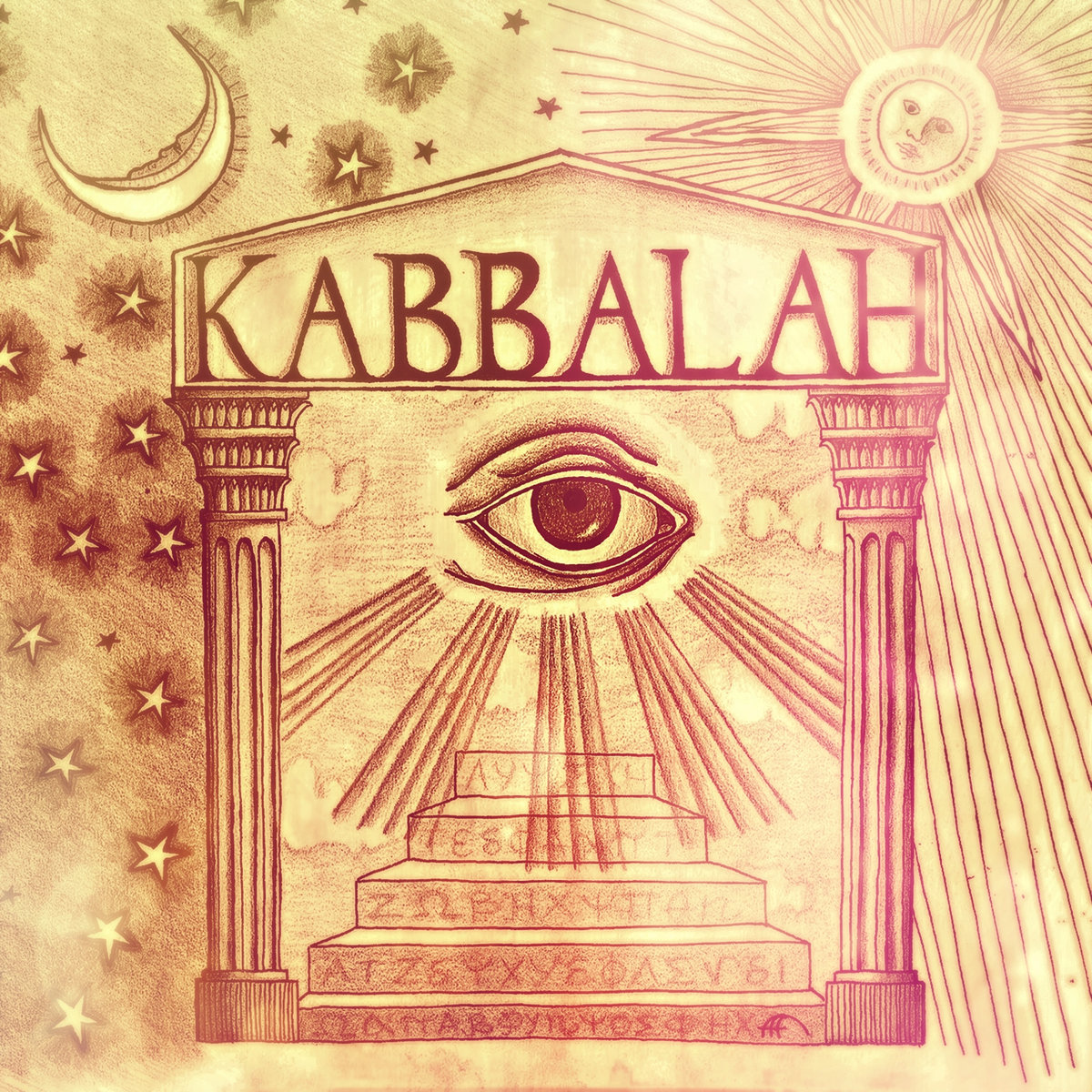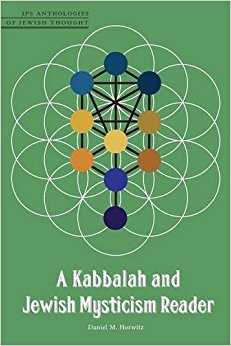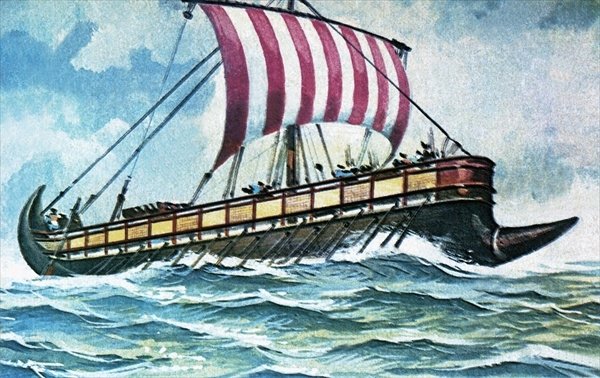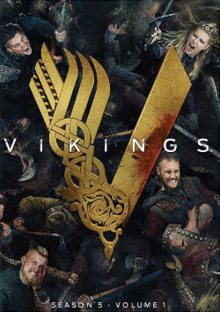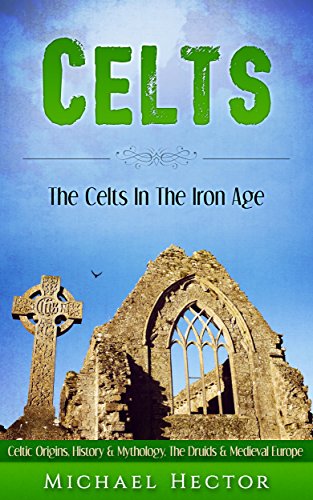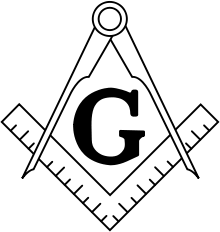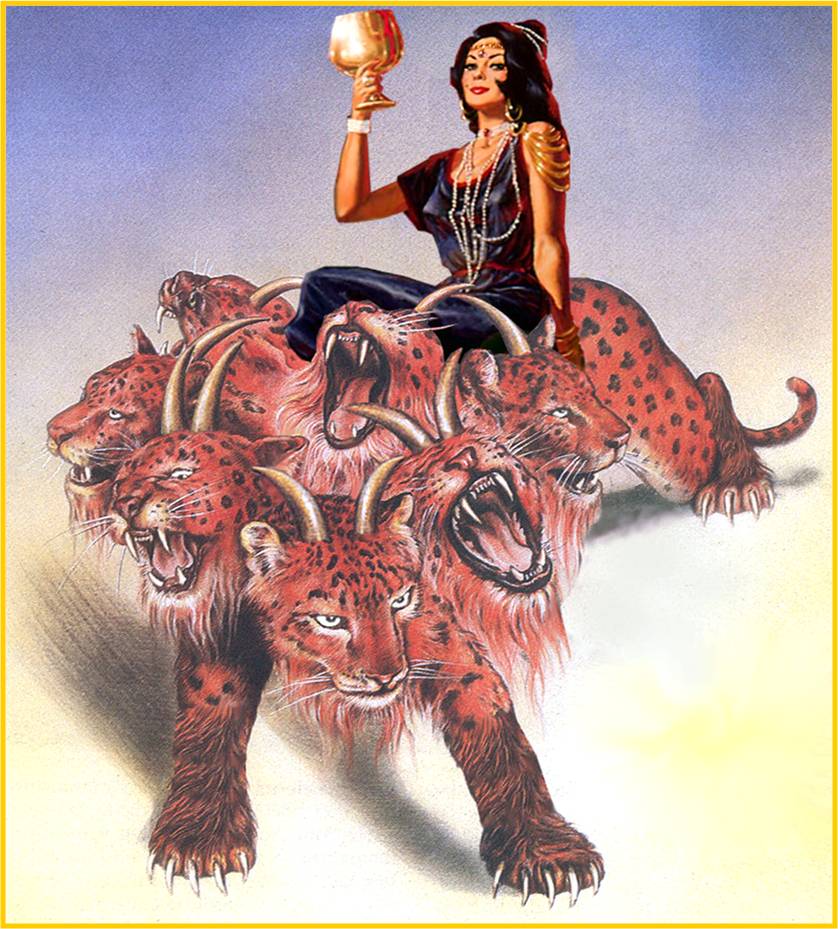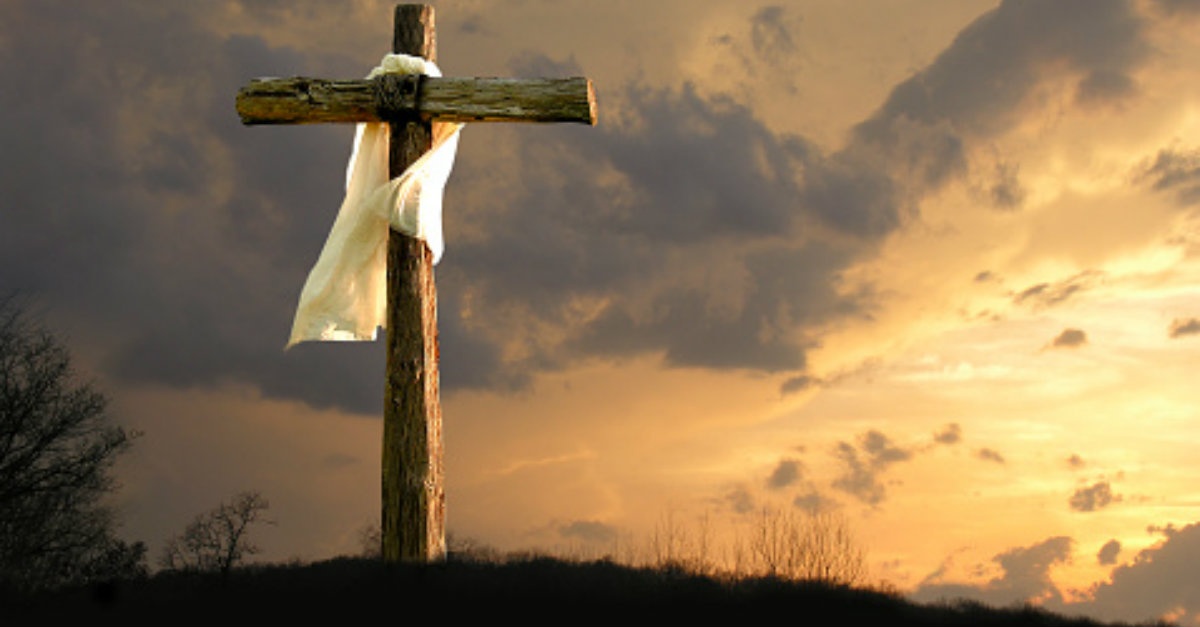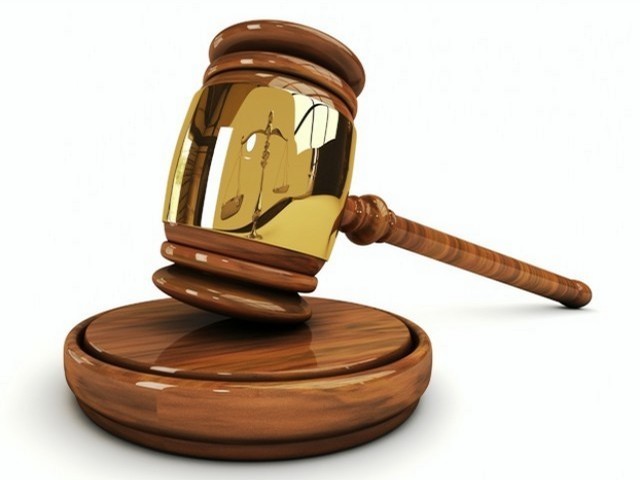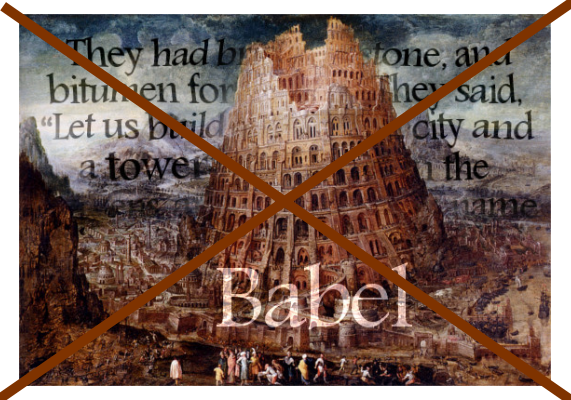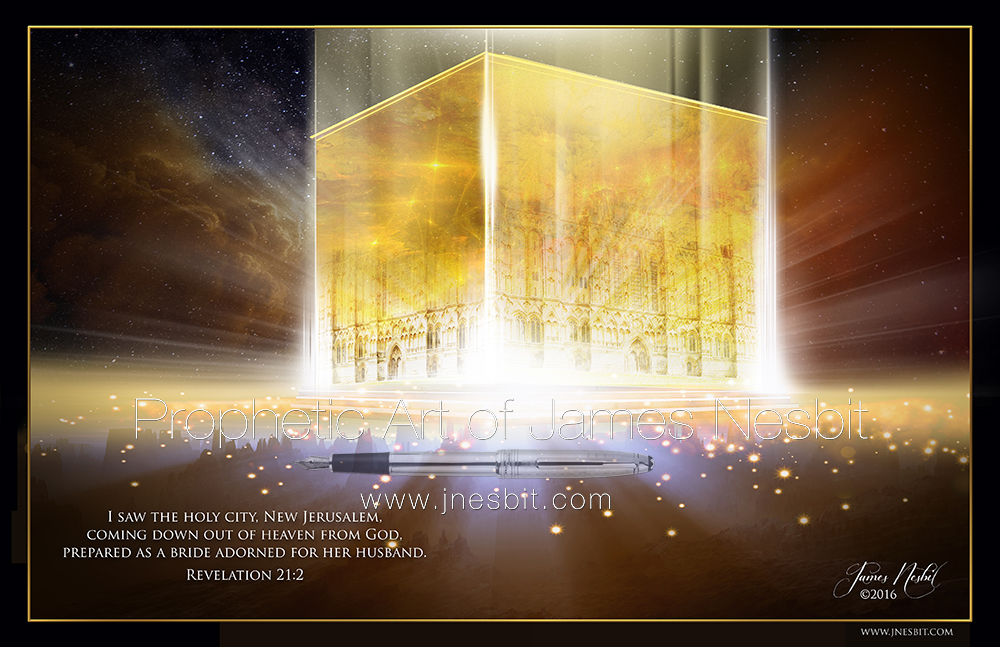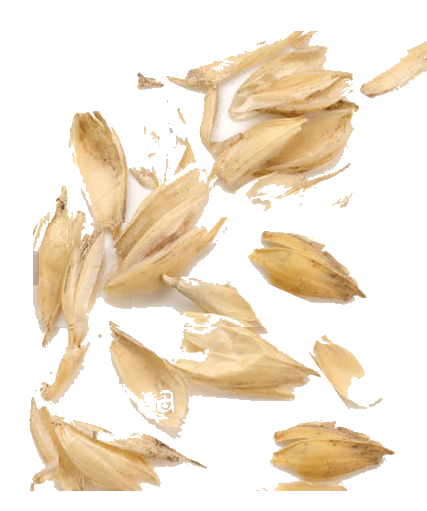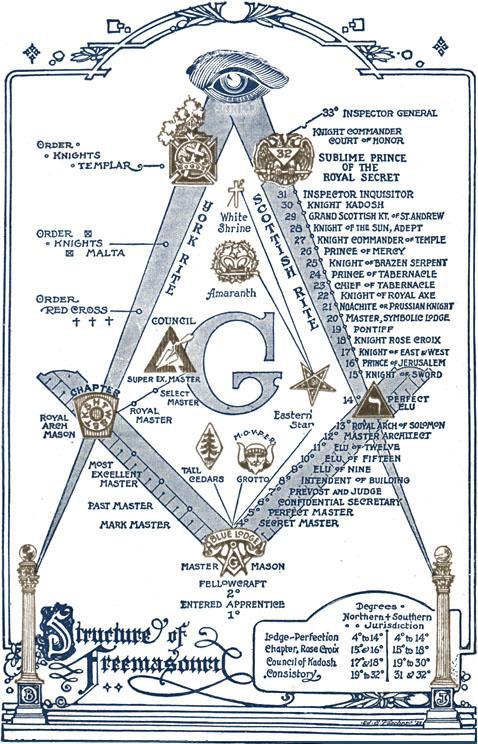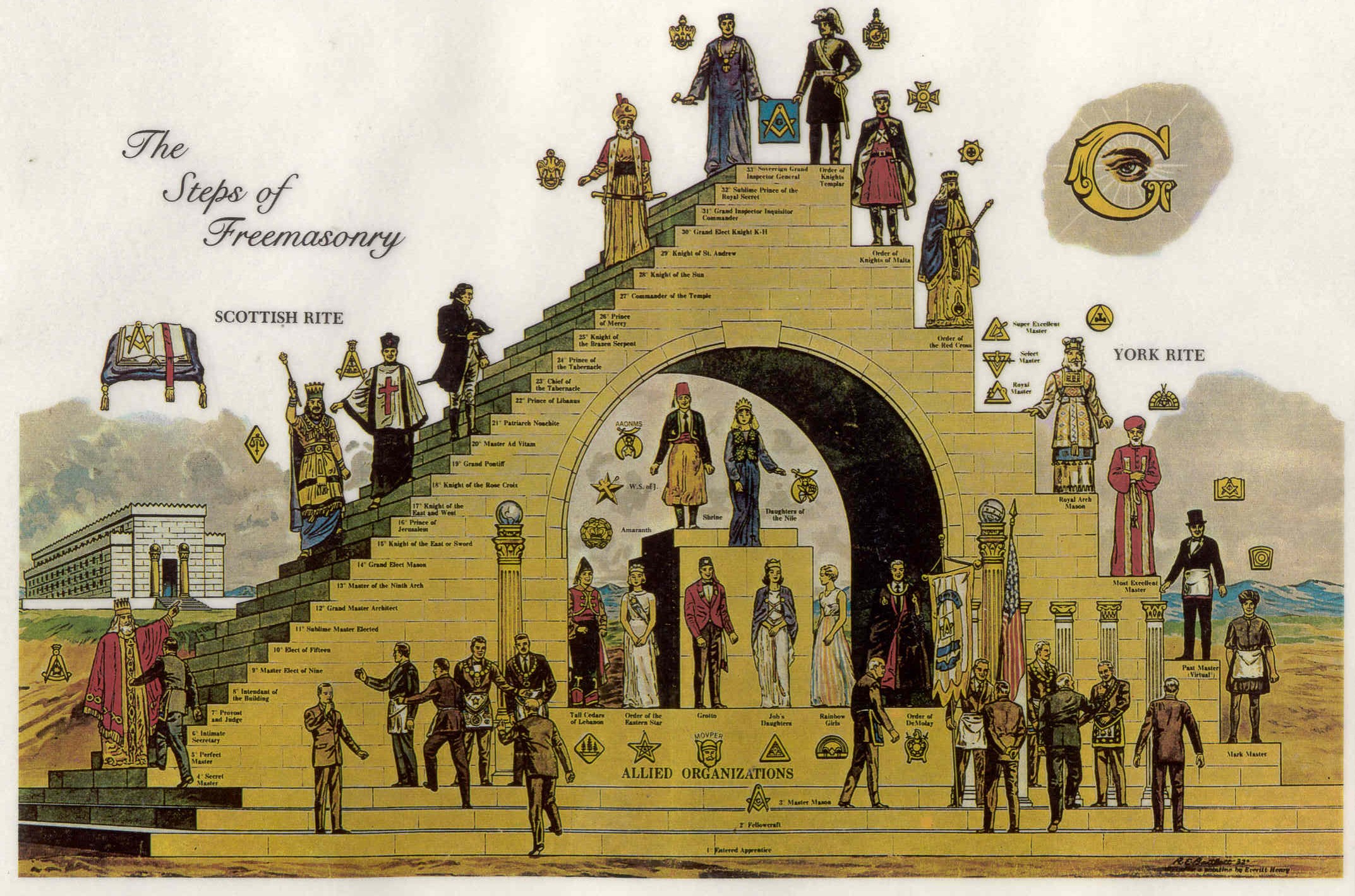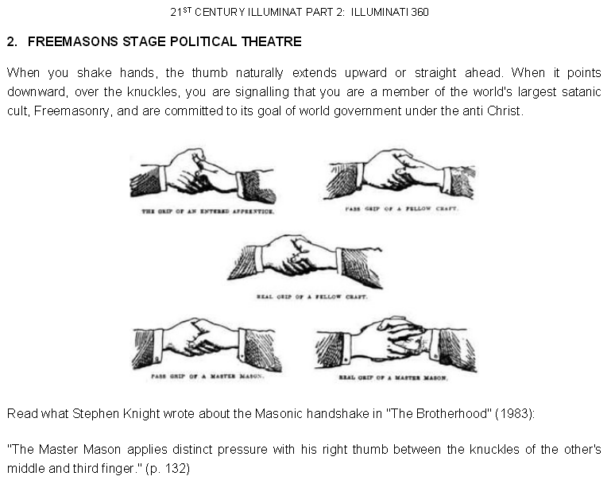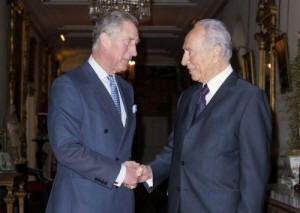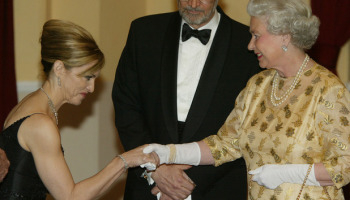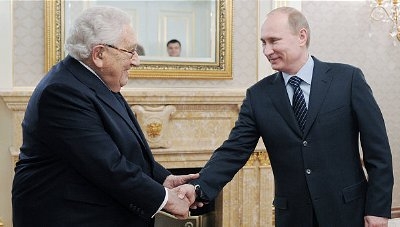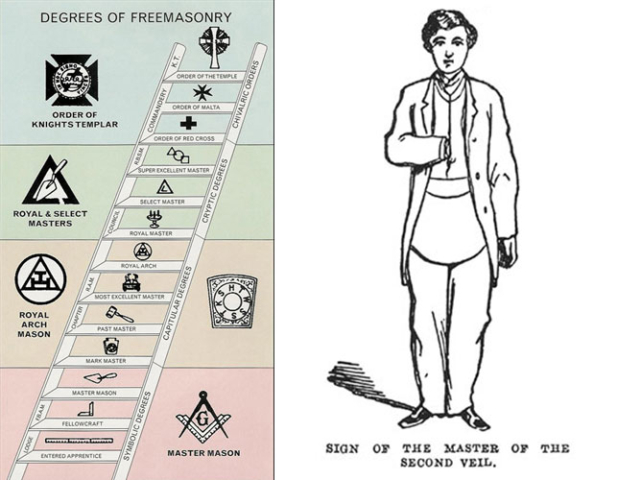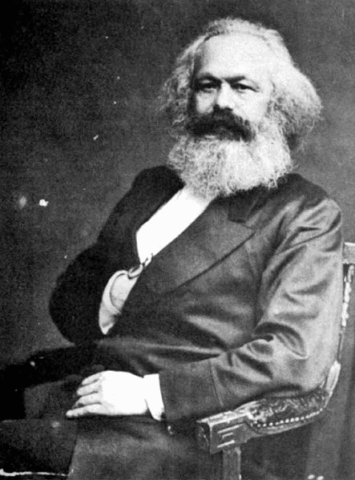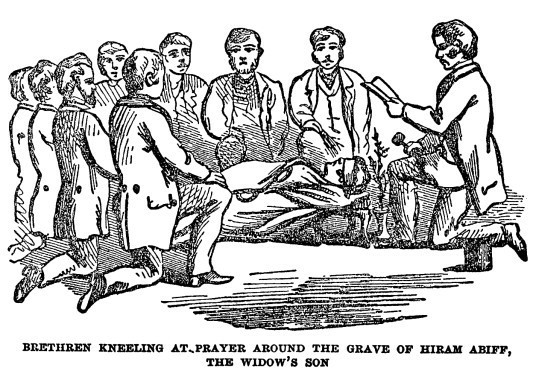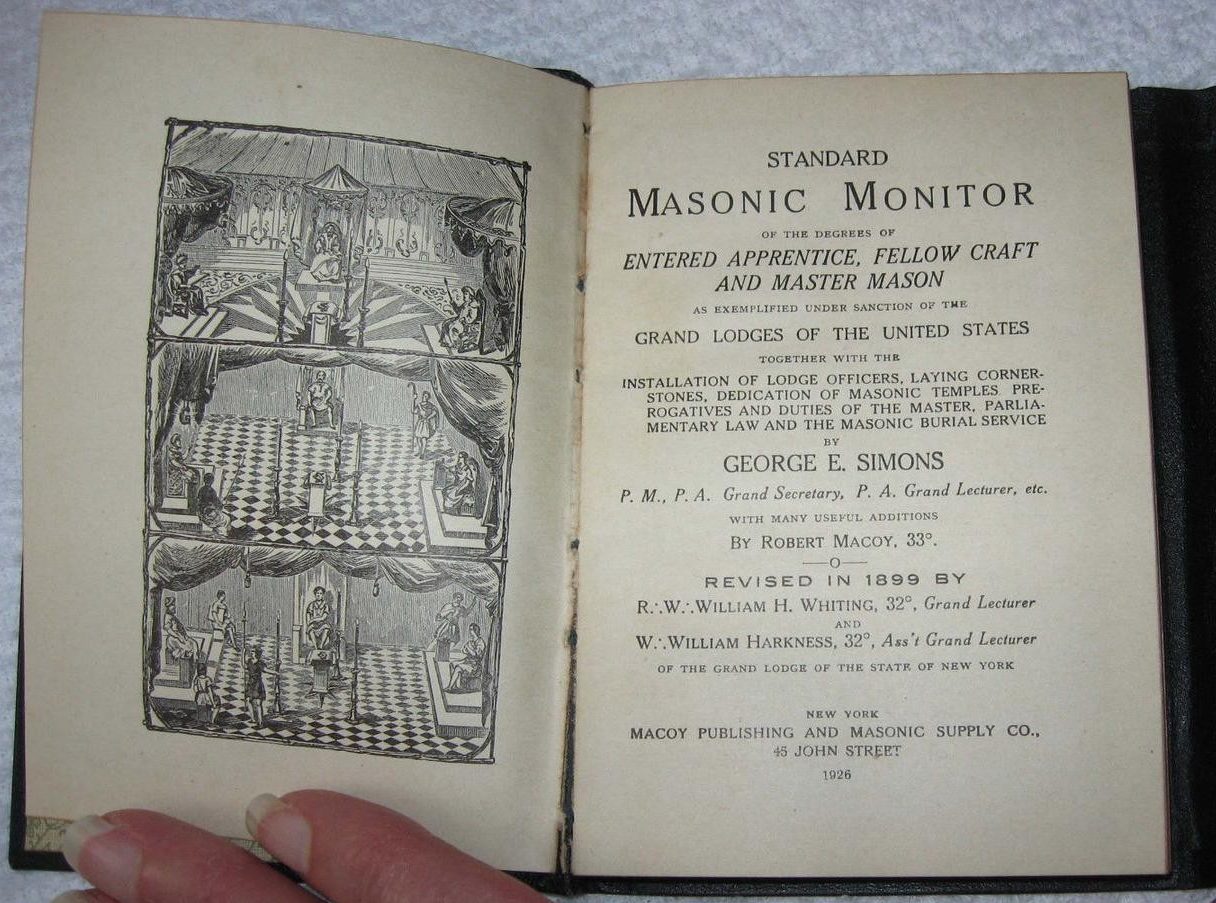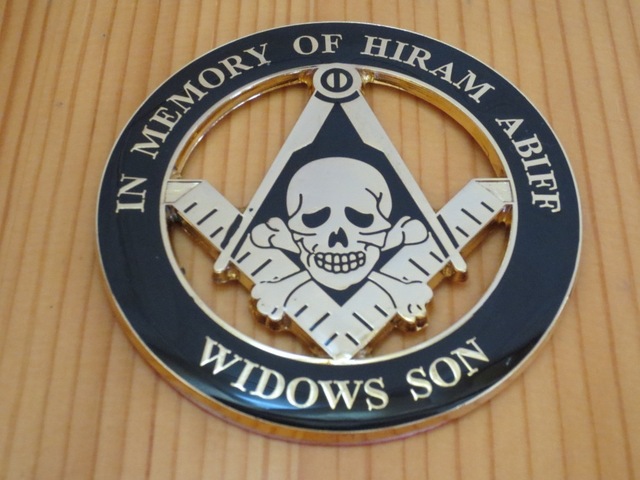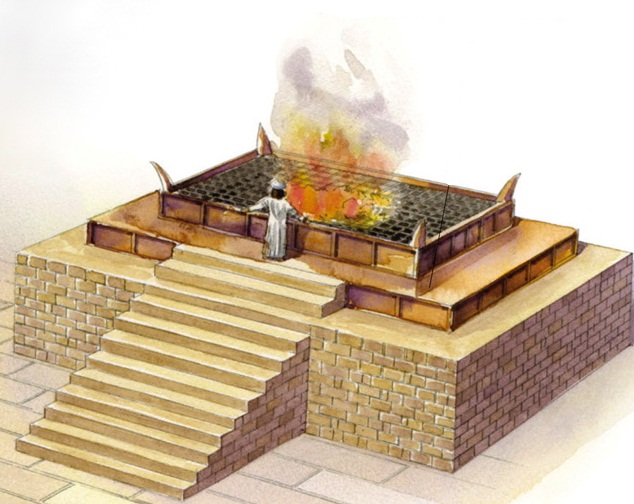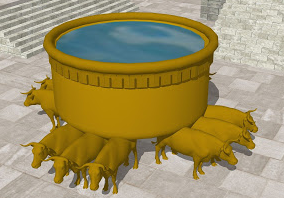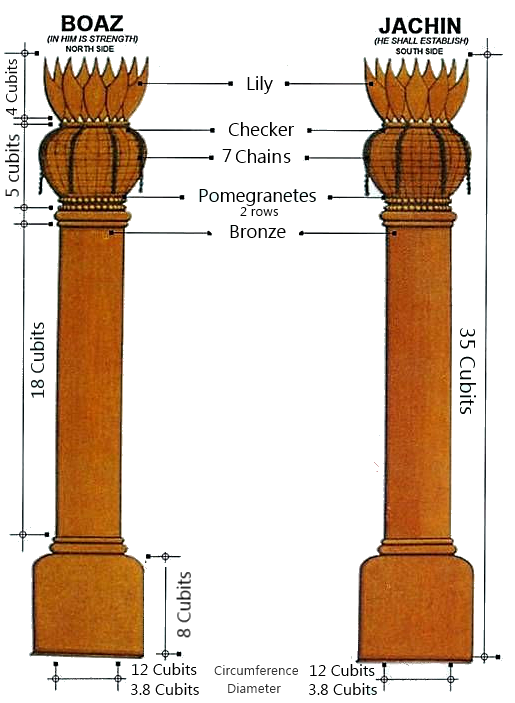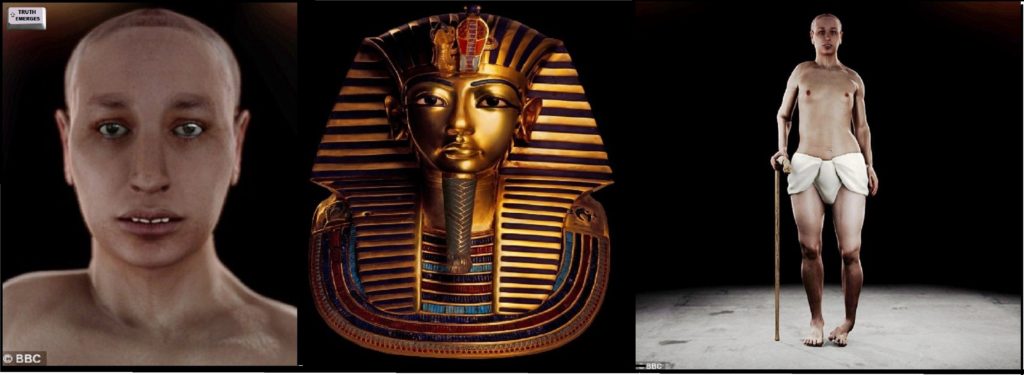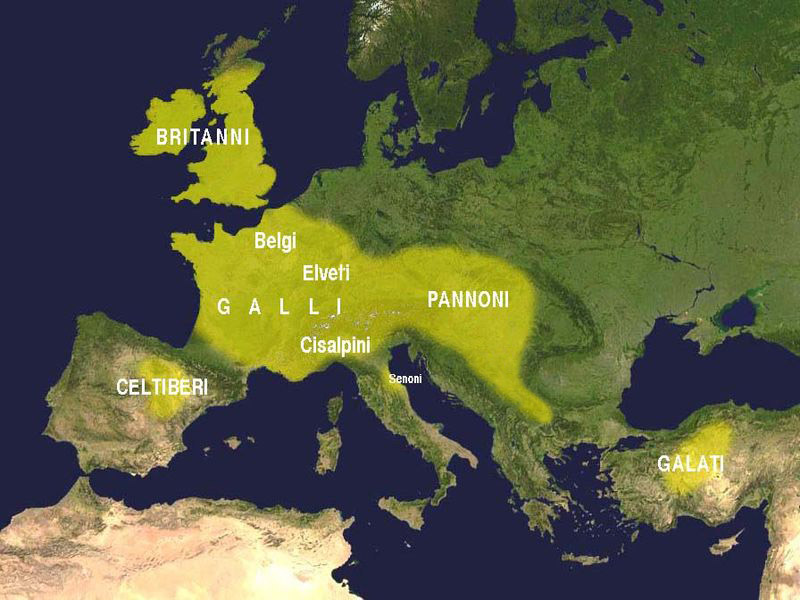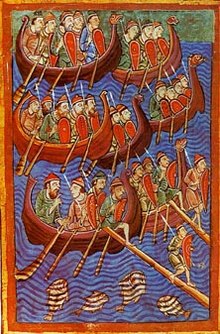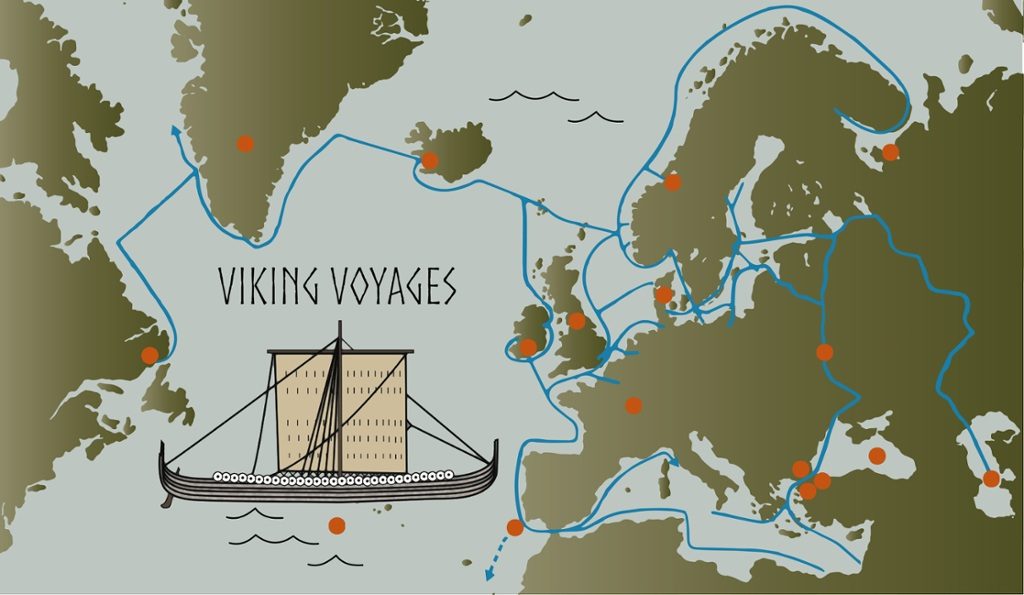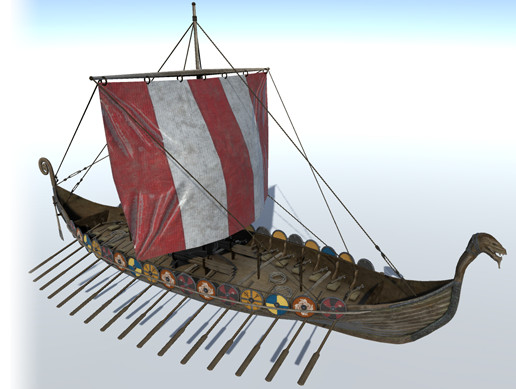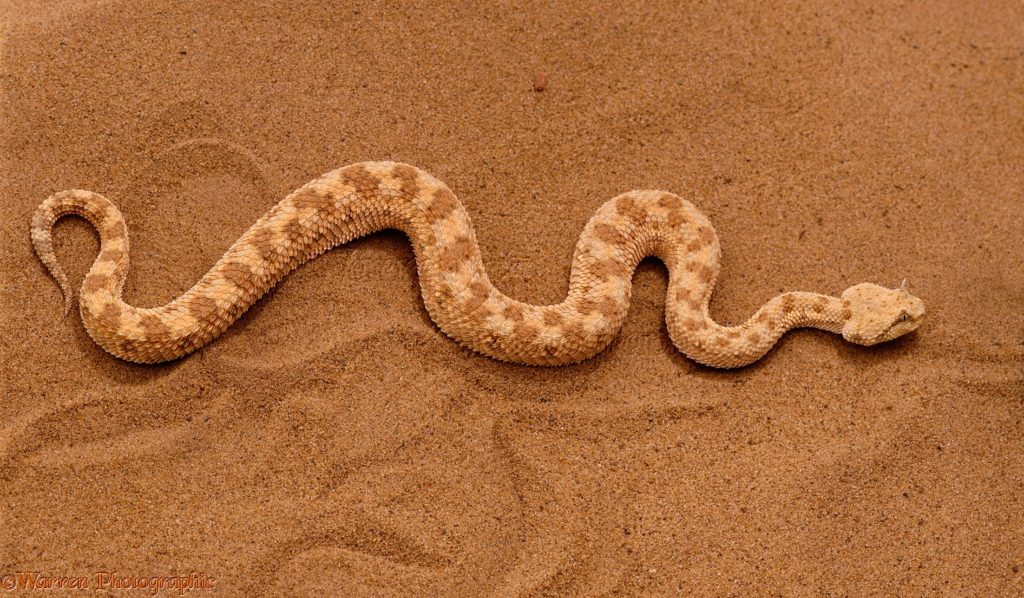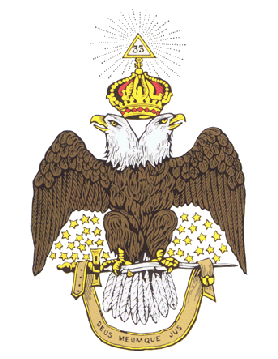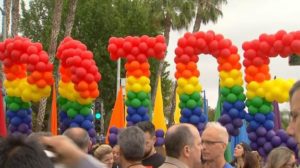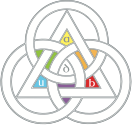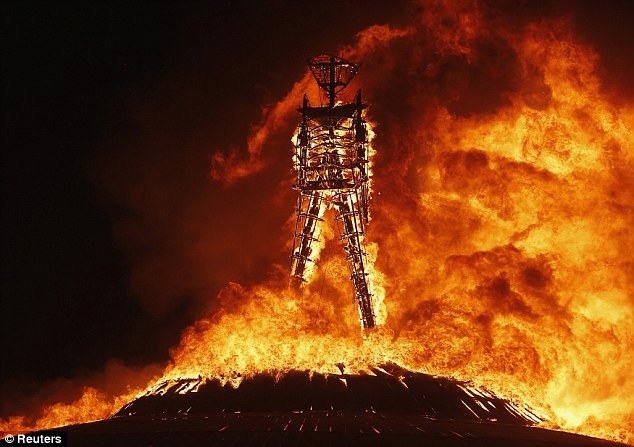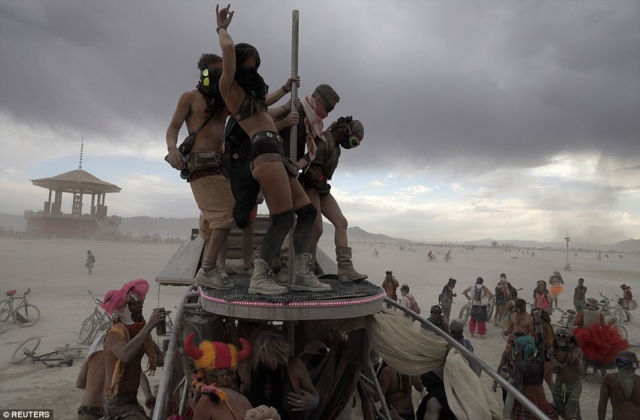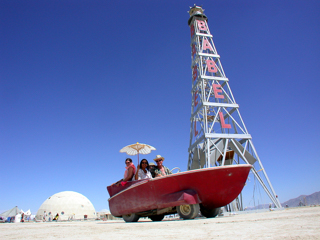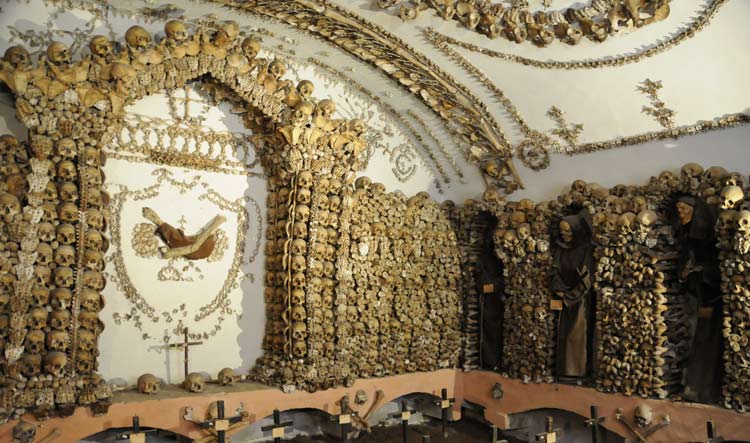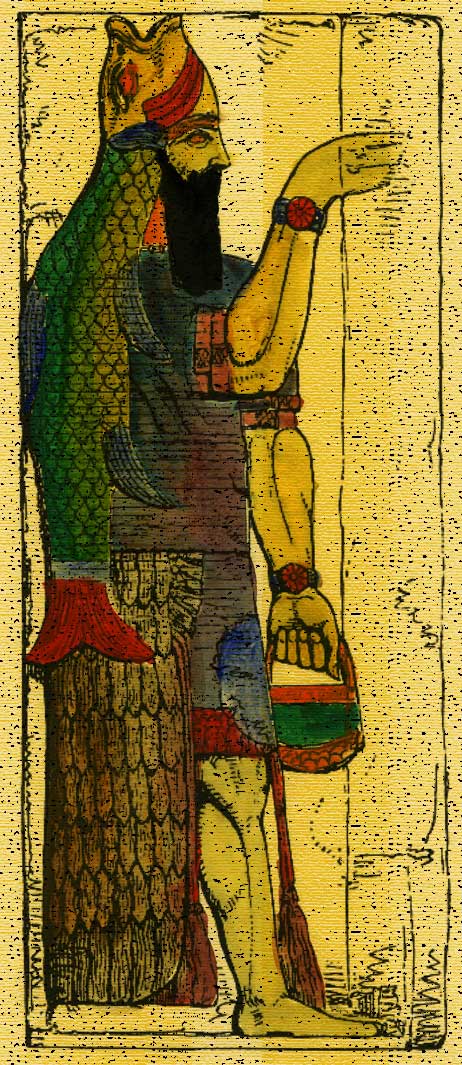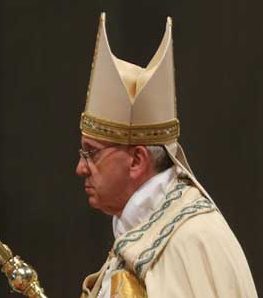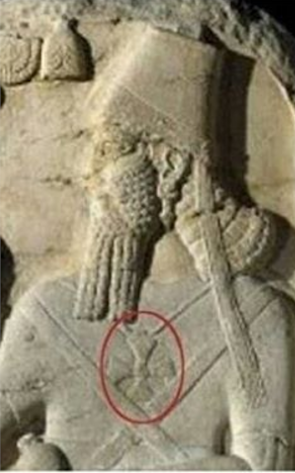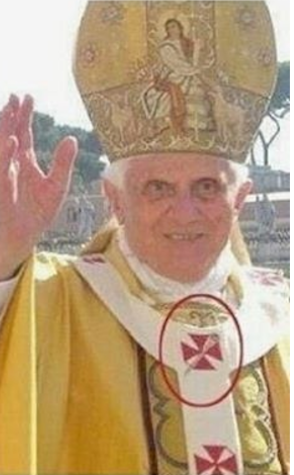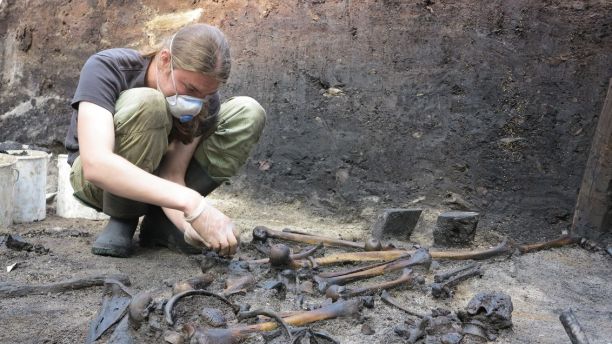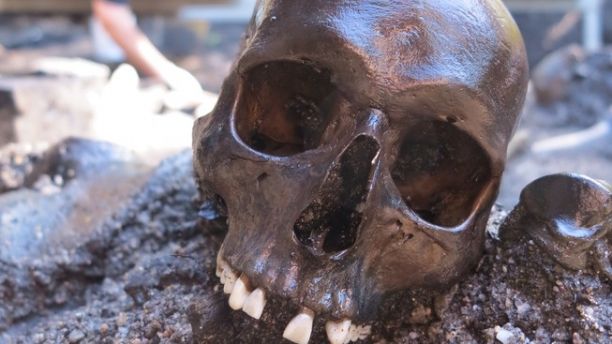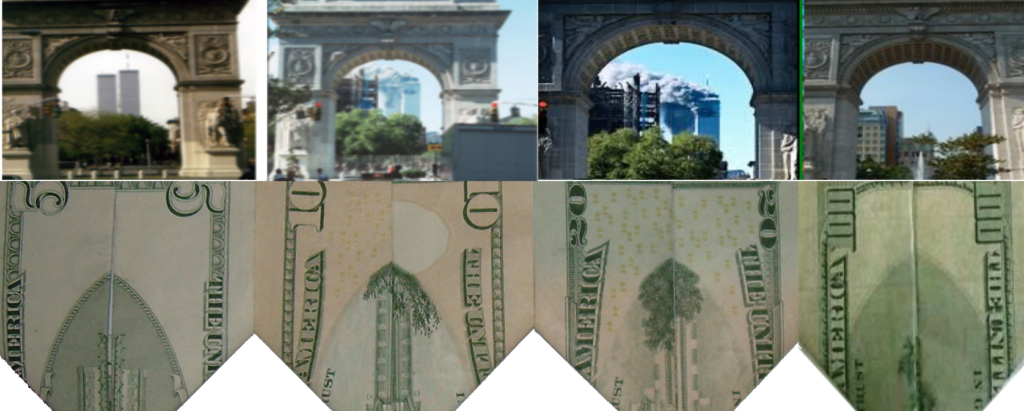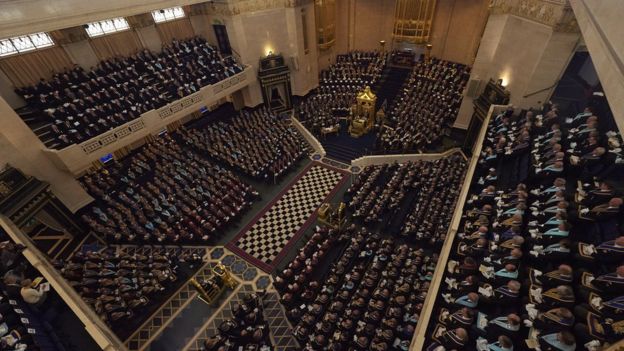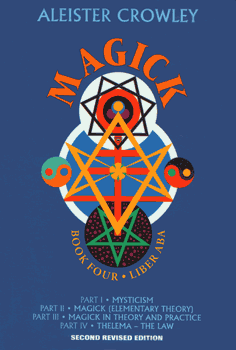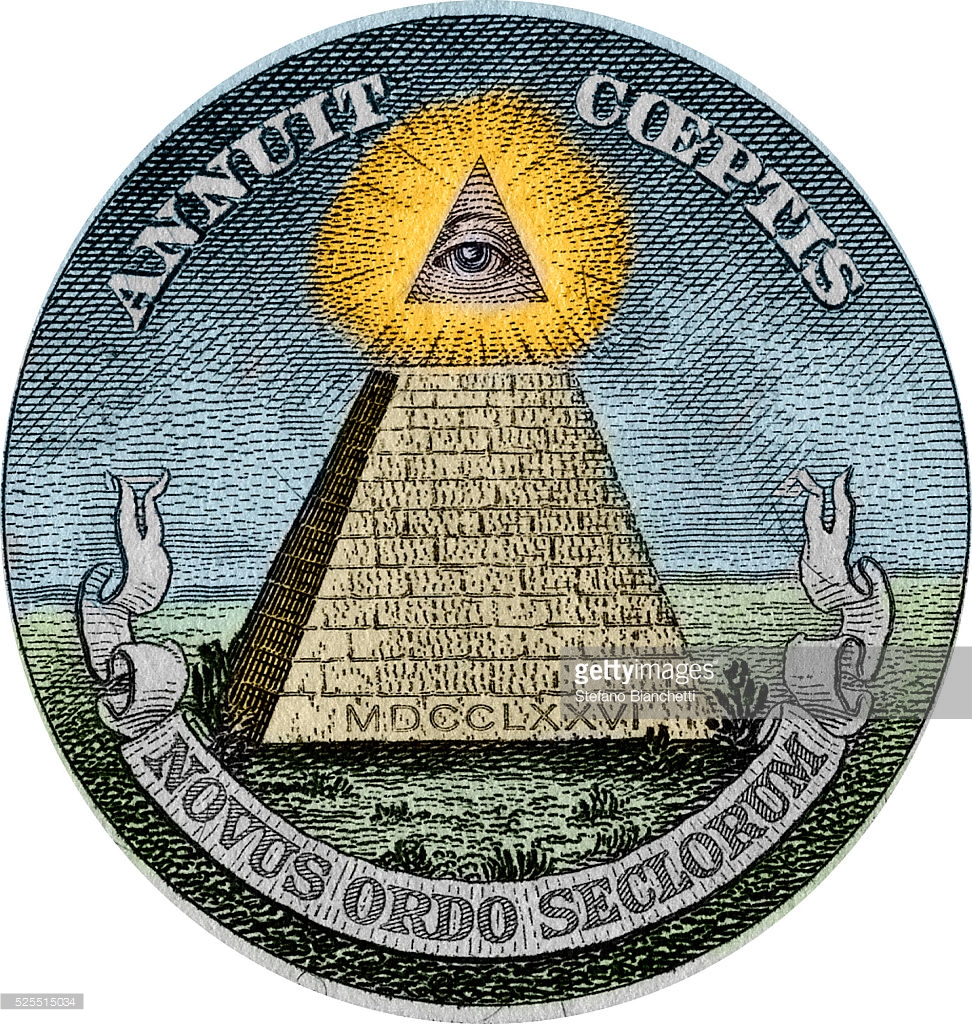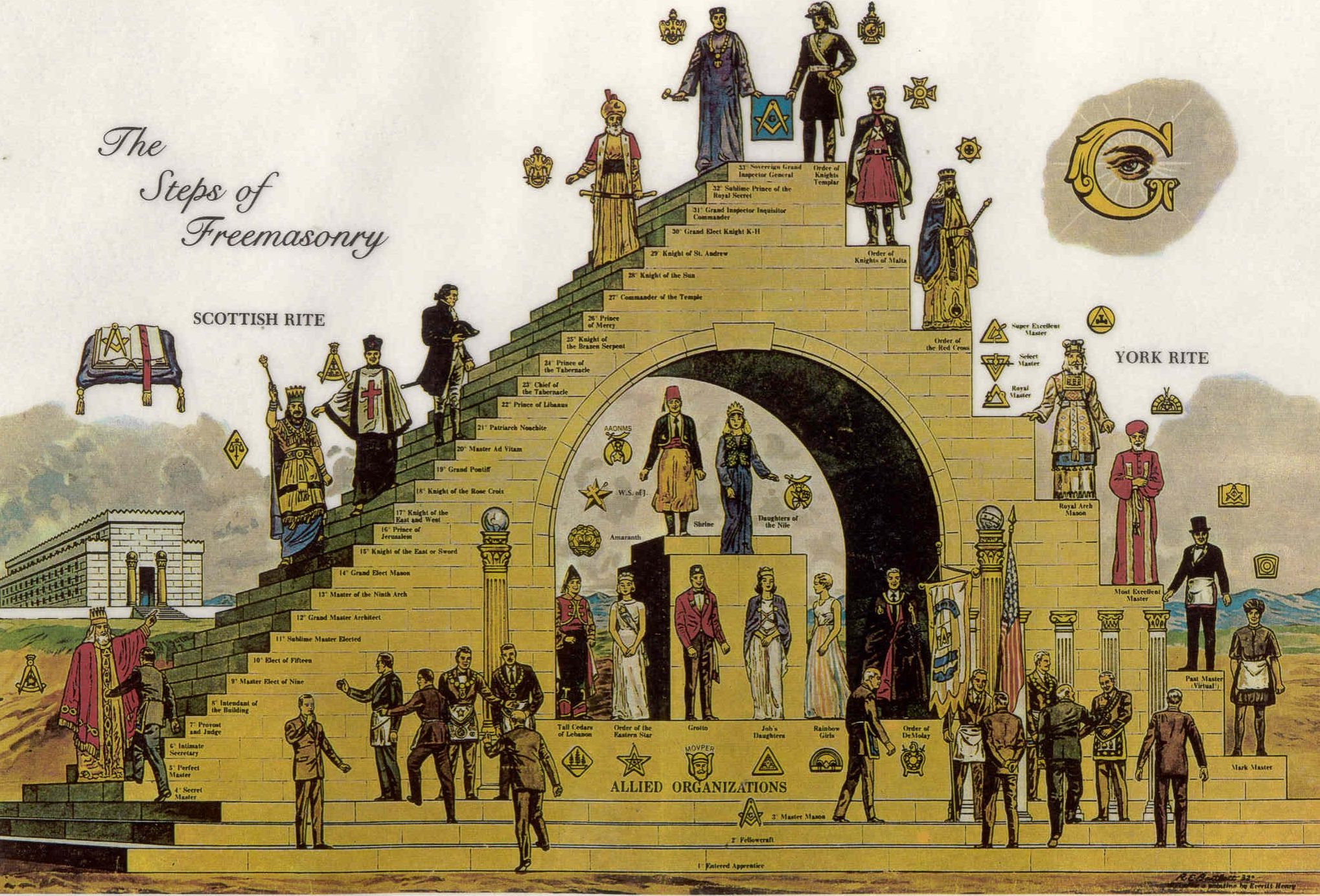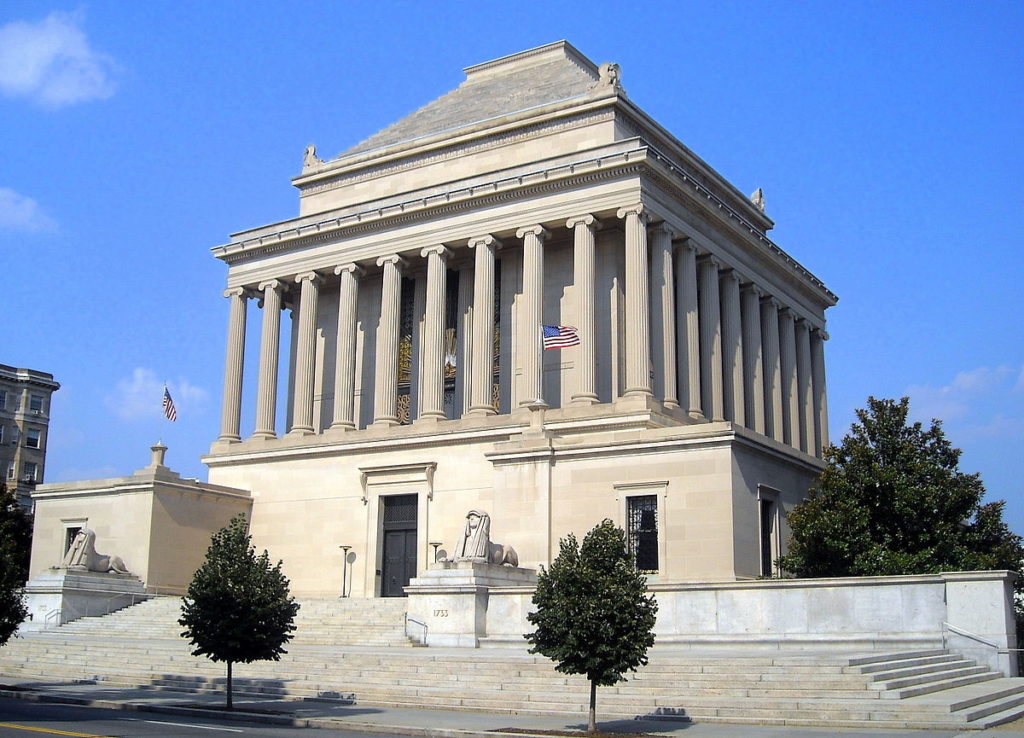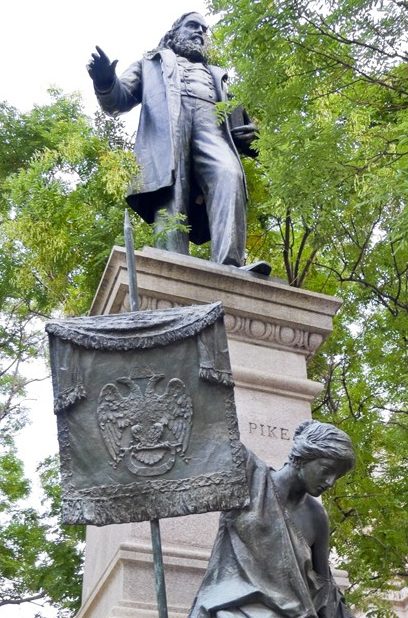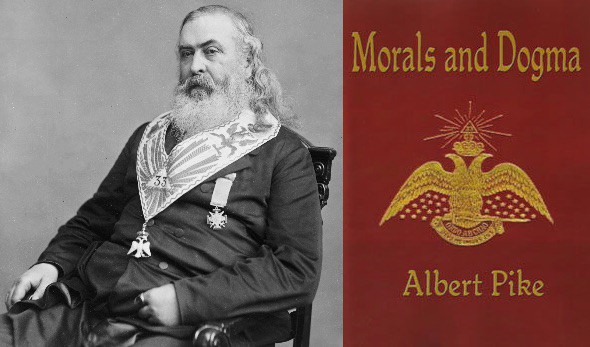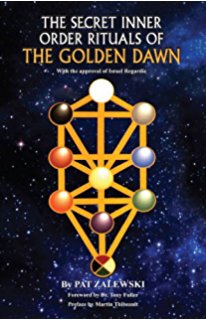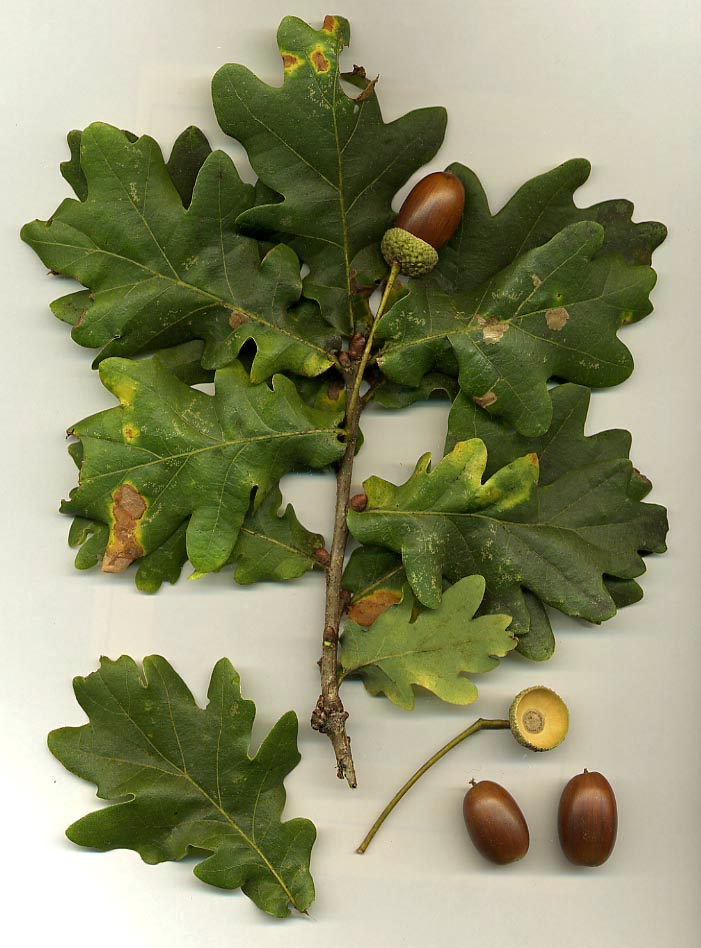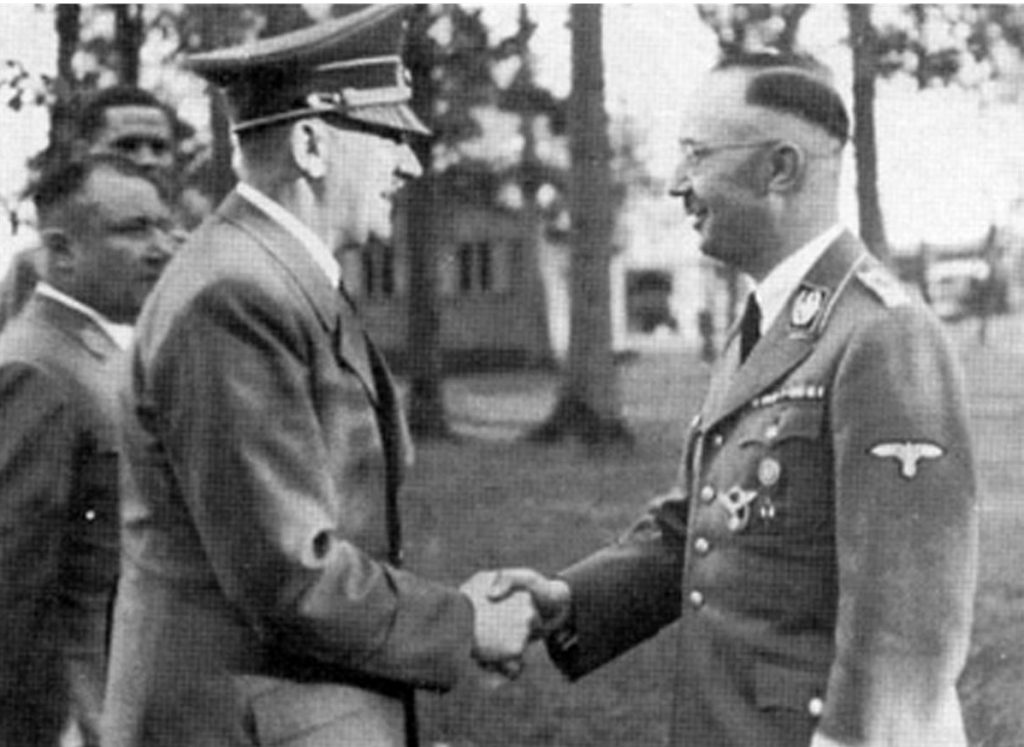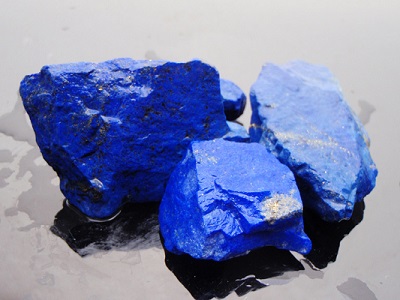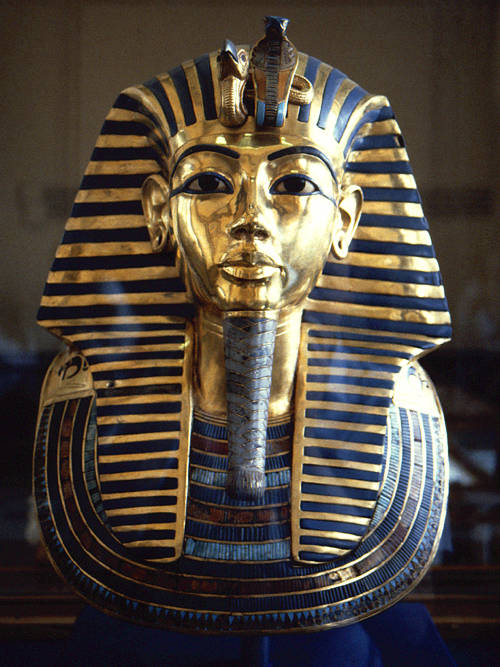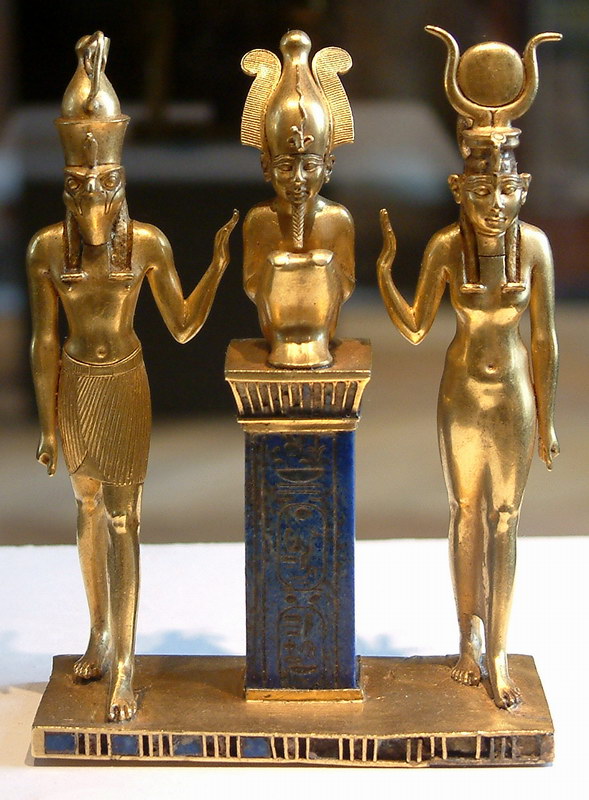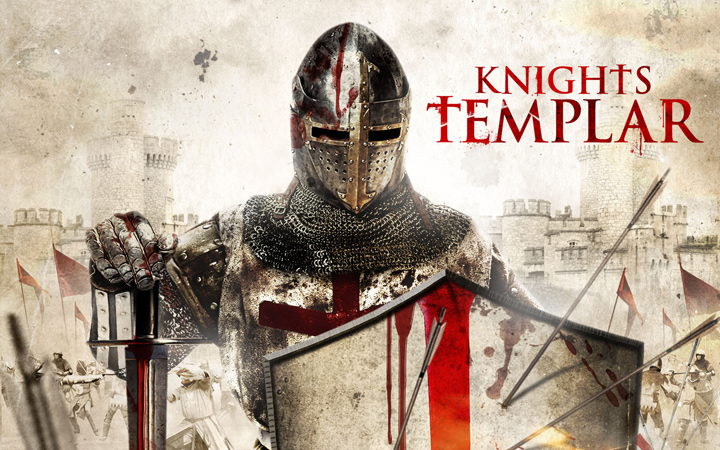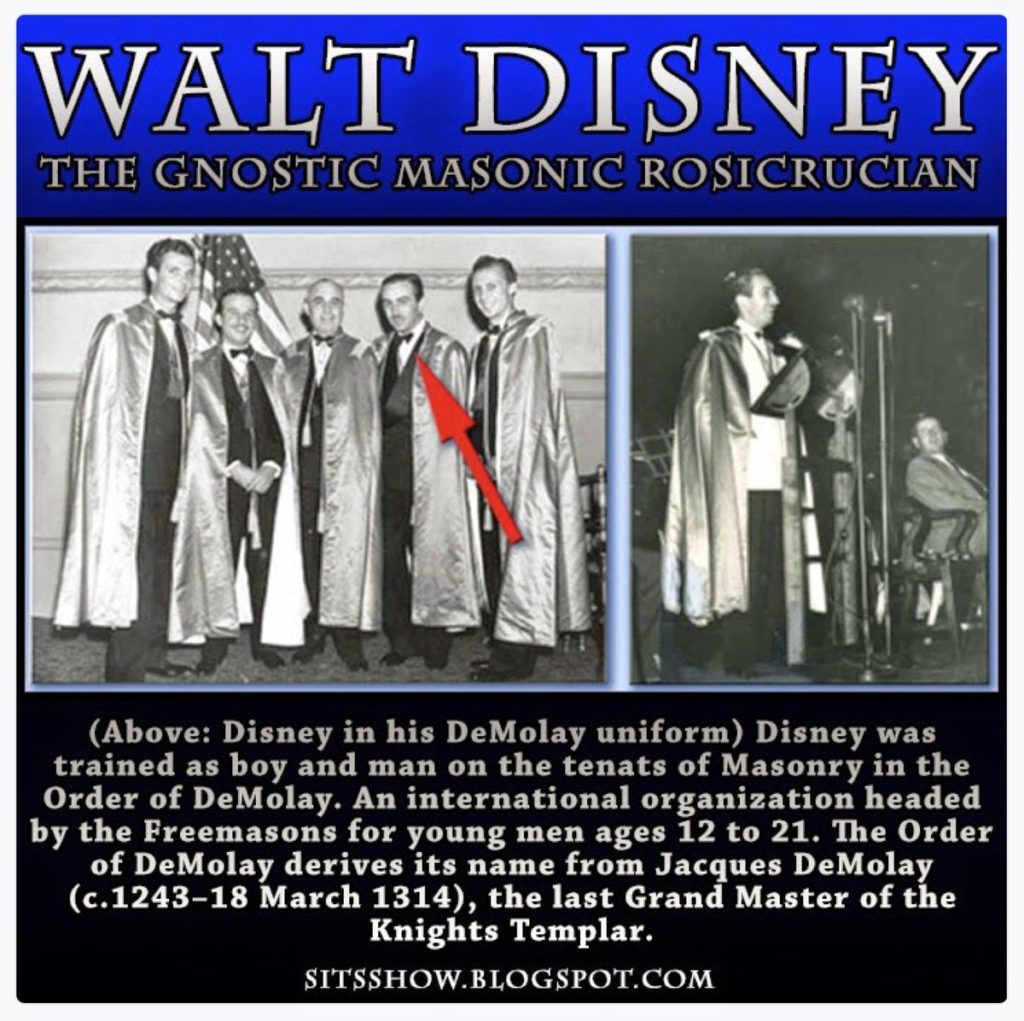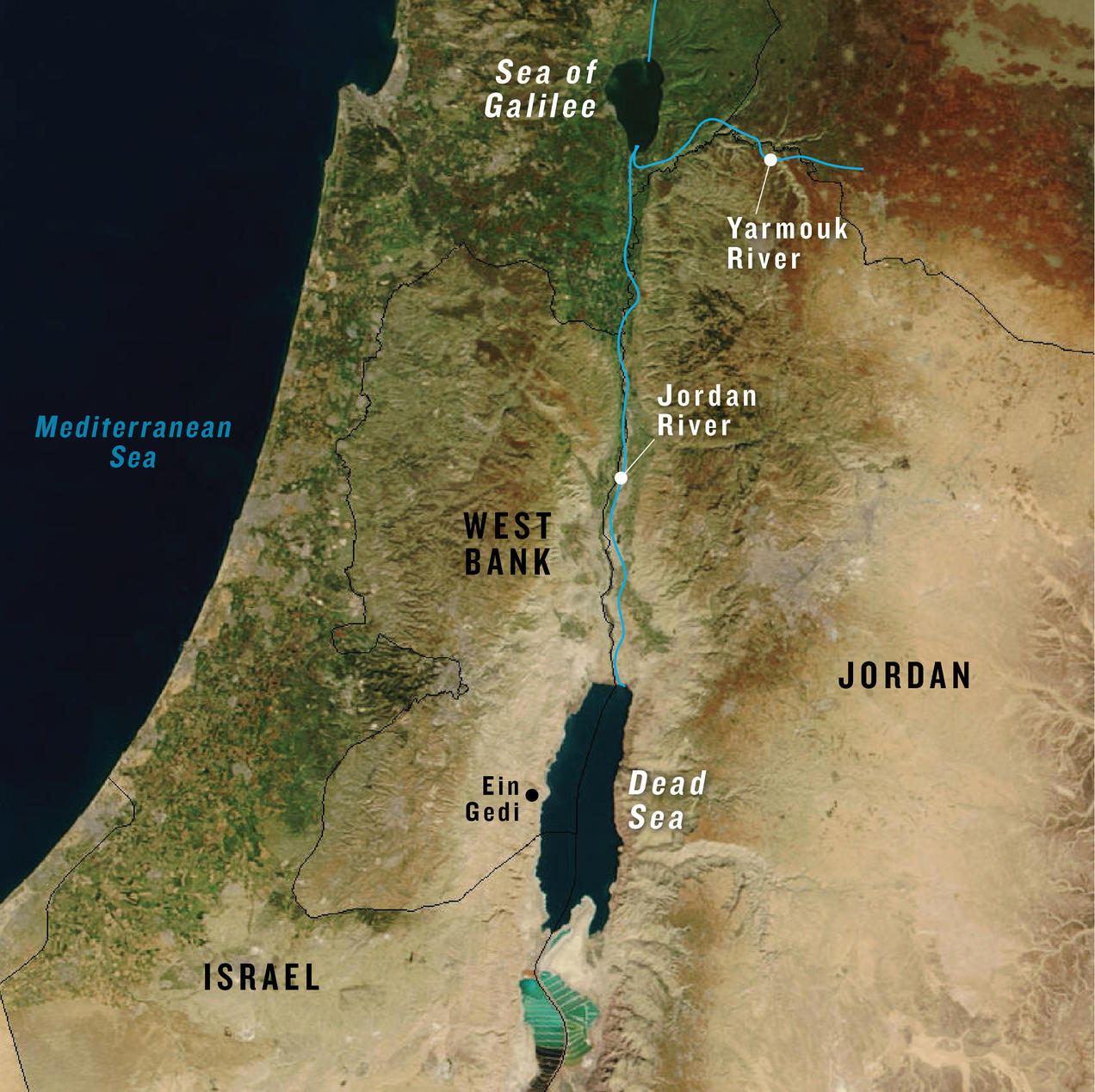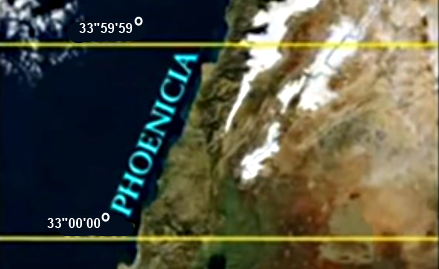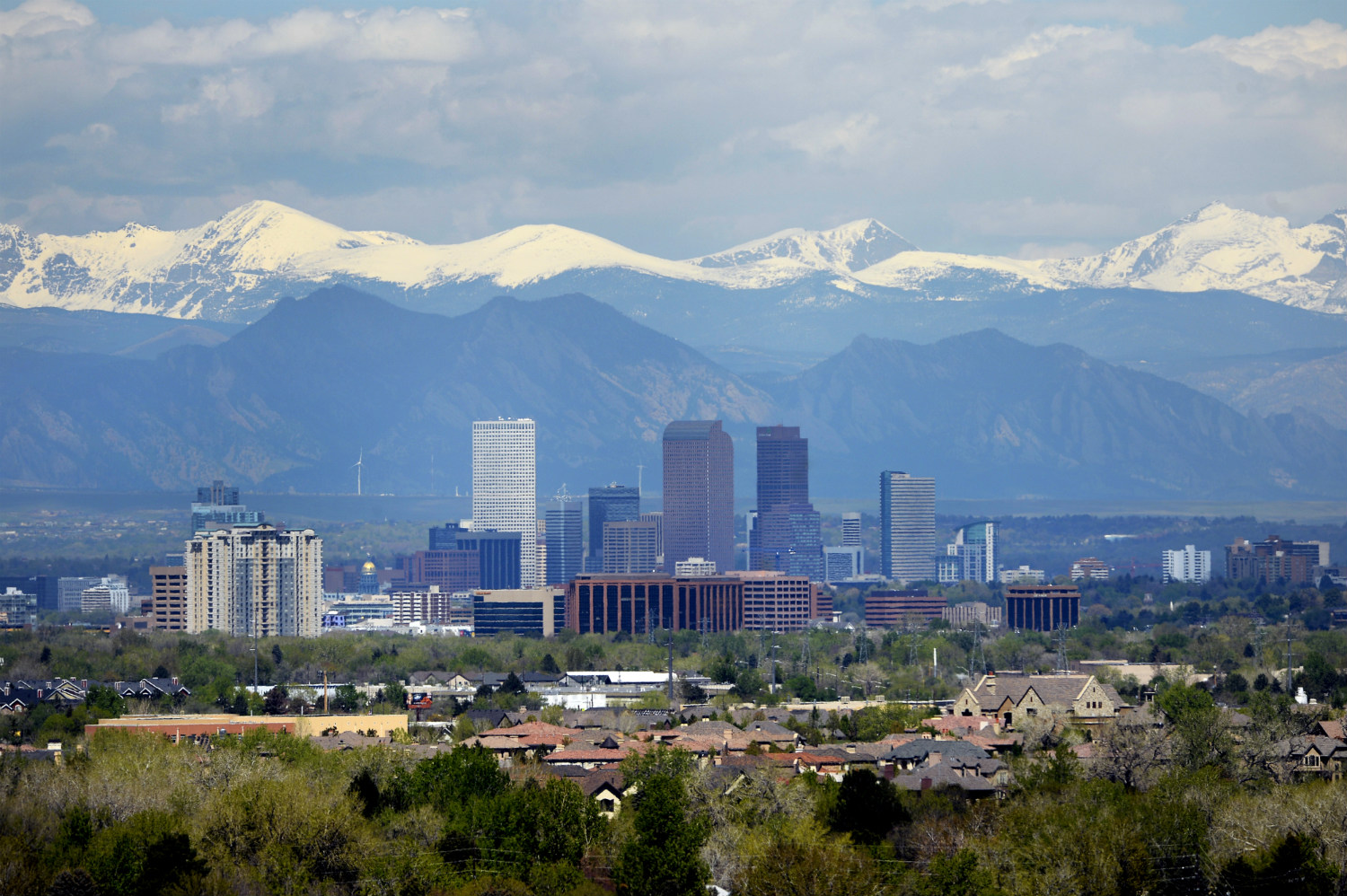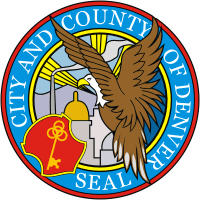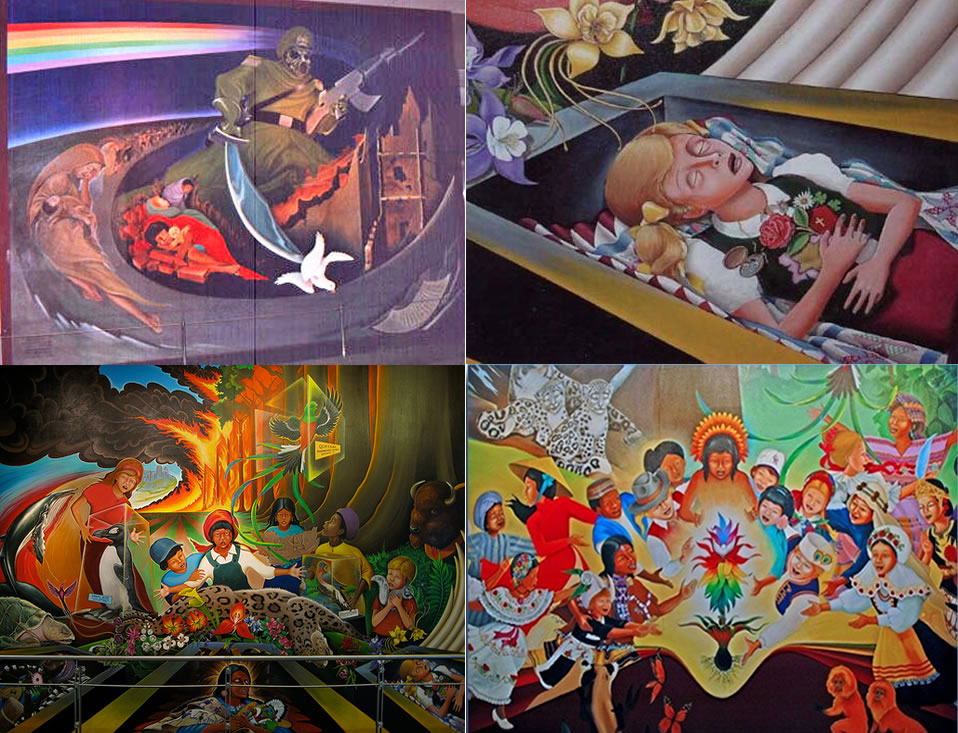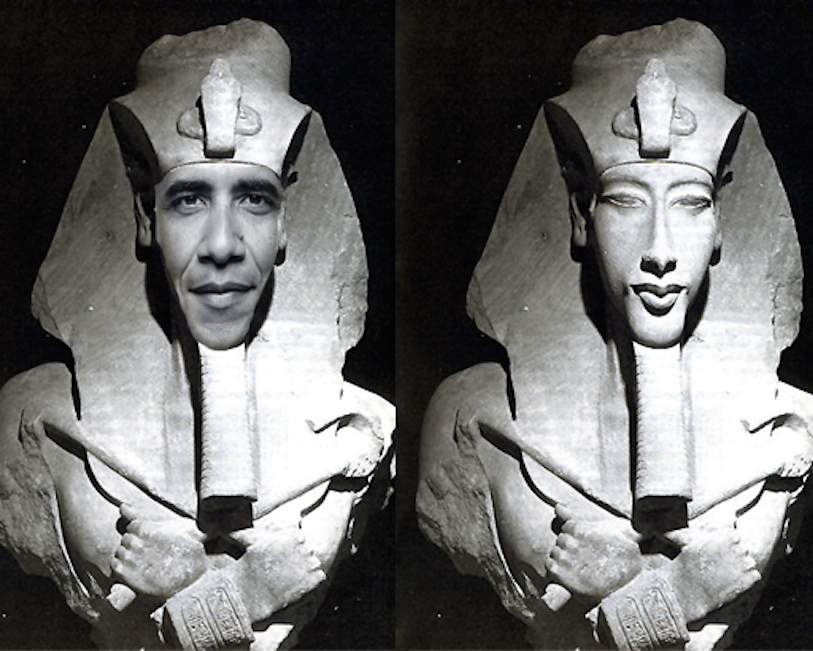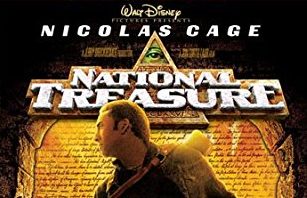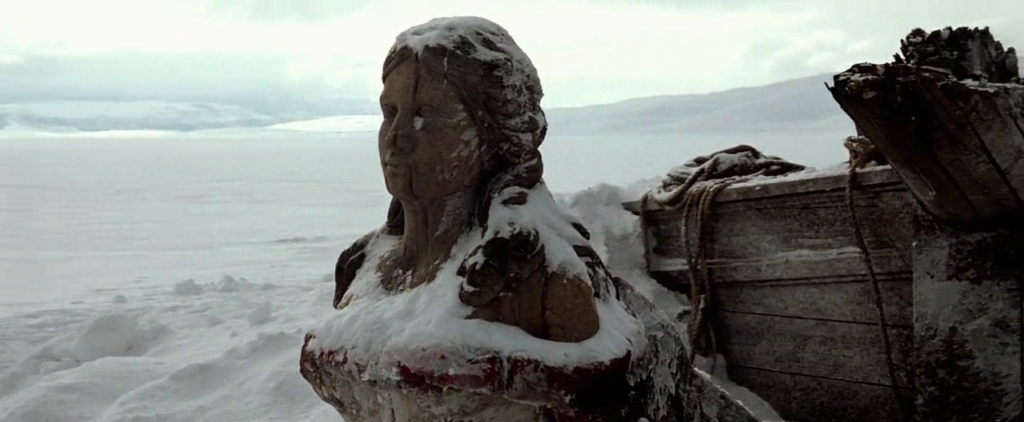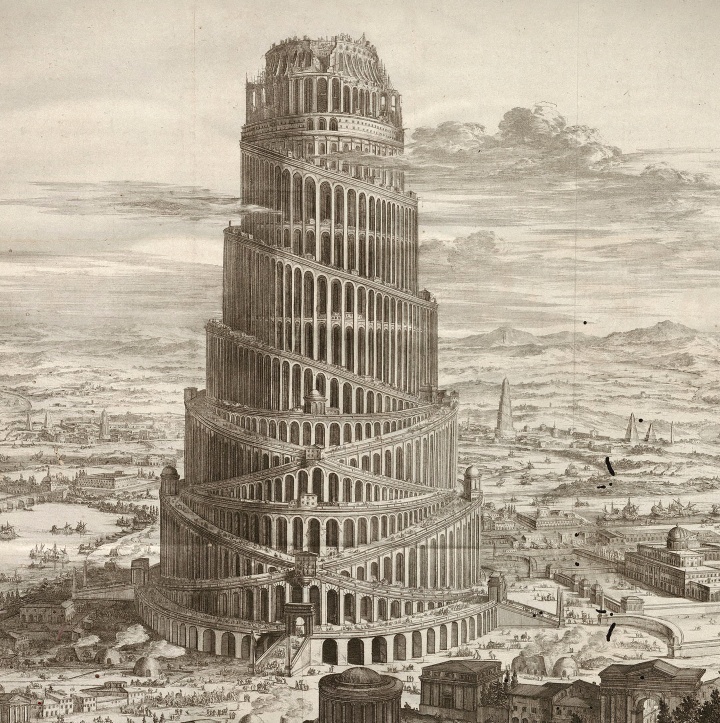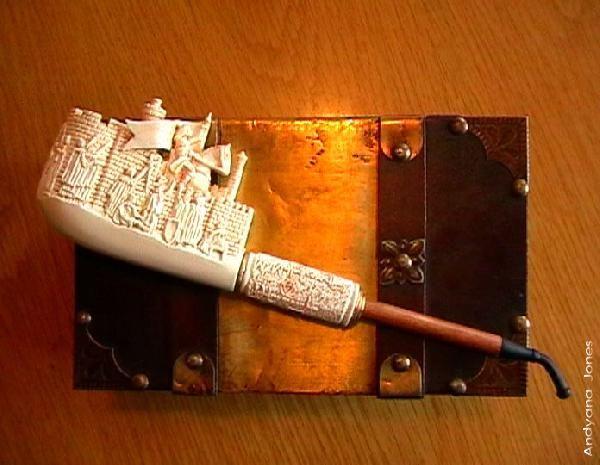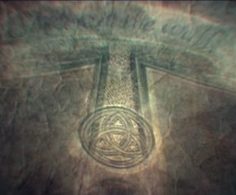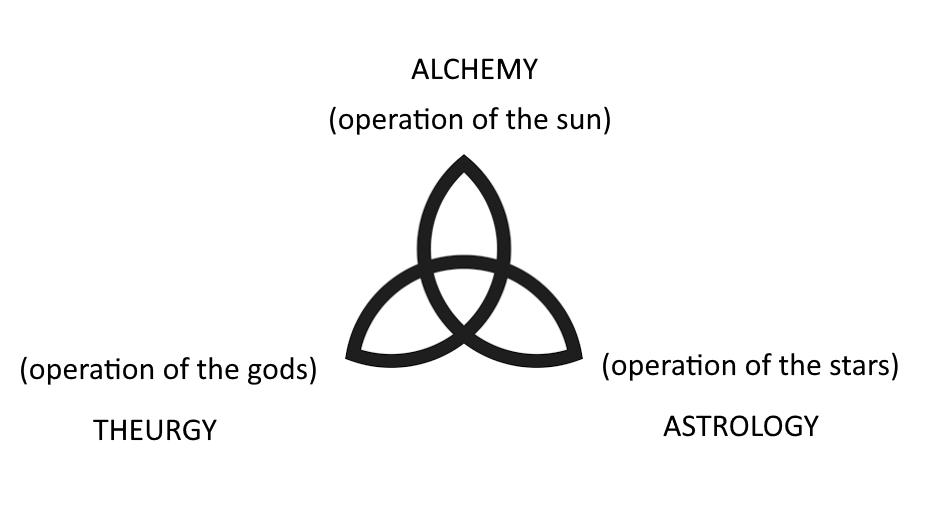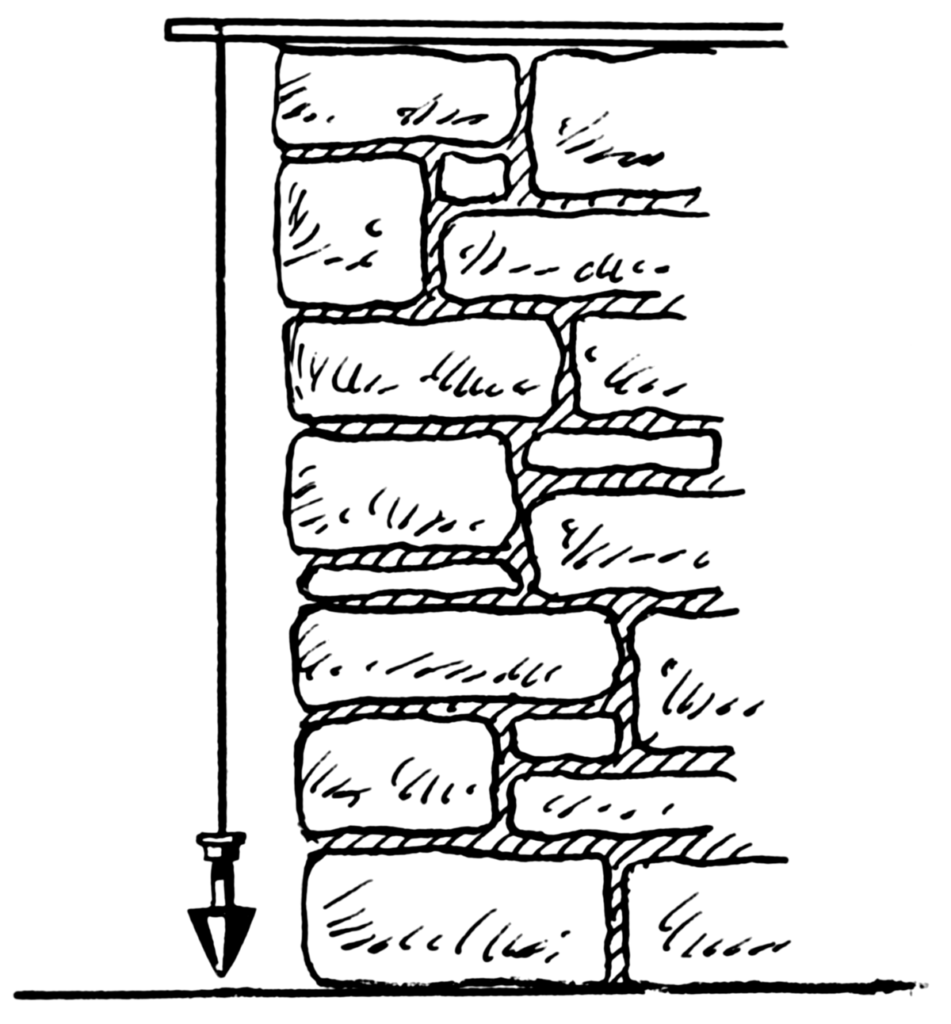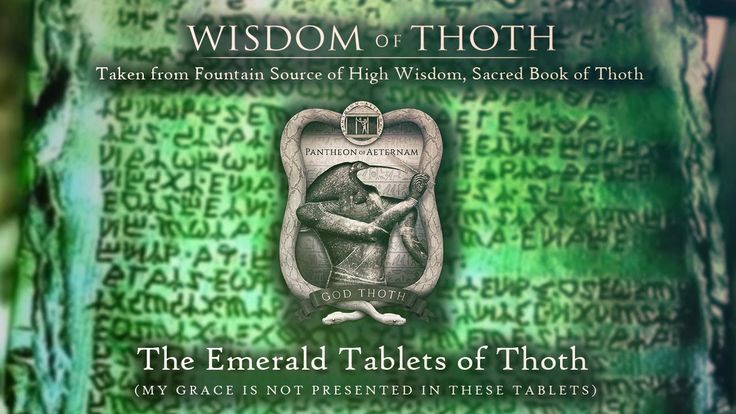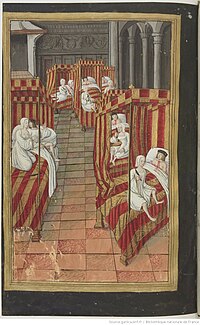DANITES
THE TRIBE OF DAN
Dan, the 1st born of Bilhah, Rachel’s Handmaid,
who adopted and practiced the ancient Babylonian,
Canaanite, Egyptian Pagan Fertility Religion
and who worship the Serpent, Satan, Dragon, Lucifer.
The “JUDGES”
“The RULERS OF DARKNESS” of the this world
The “Sons of Belial”…worthless
The JEWISH MYSTICS and GNOSTIC PHILOSOPHERS
who practice HERMETIC ALCHEMY and KABALLAH
The “SYNAGOGUE OF SATAN, who say they are Jews but do lie”
The “CHILDREN OF THE DEVIL”
They are who John the baptist
described as a “GENERATION OF VIPERS”
The “PHOENICIAN / CANAANITE CRAFTSMAN MERCHANTS”
that have deceived the whole earth
who have gone “THE WAY OF CAIN”
THE DANES – THE NORDICS – VIKINGS
GAULS – CELTICS – SCOTS
THE DRUIDS
The Prophet Isaiah described them as
“THE SONS OF THE SORCERESS”
(WIZARDS, SORCERERS, WITCHES & MAGICIANS)
THE NAZI’S
The “FREE-MASONS”
The GOATS
The “Builders” that rejected Christ,
the true Cornerstone, and seek to rebuild the world
God destroyed with the flood which they call “ATLANTIS”
aka
The “Adulterer, the Whore of Babylon”
(that great city that rules over the kings of the earth)
Dan [h6327]דָּן Dân, dawn;occurs 71 in 64
- Dan = “a judge”
from H1777; a primitive root; Judge (strife) [h1777]dîyn, deen;occurs 24 in 24
- to rule;
- by implication to judge (as umpire); also to strive (as at law):
- —contend contend execute (judgment)
- judge minister judgment plead (the cause) at strife strive.
The “Sanhedrin” were a ruling body of 71 Judges with the High Priest as the chief officer. The number of times “Dan” is mentioned in bible. They are called the “council of the elders” in the gospels.
SANHEDRIN
UN SECURITY COUNCIL
Security Council meeting. Maintenance of international peace and security Vote
Dan was born from Rachel’s handmaid Bilhah. Rachel was not able to conceive and she became envious of Leah who had given birth to Judah, so she gave Jacob her handmaid Bilhah to conceive for her.
GENESIS 30 : DAN AND JOSEPH
1And when Rachel saw that she bore Jacob no children, Rachel envied[H7065]her sister; and said to Jacob, Give me children, or else I die. 2And Jacob’s anger was kindled against Rachel: and he said, Am I in God’s stead, who has withheld from you the fruit of the womb? 3And she said, Behold my maid Bilhah, go in to her; and she shall bear on my knees, that I may also have children by her.
THE BIRTH OF DAN
4And she gave him Bilhah her handmaid to wife: and Jacob went in to her. 5And Bilhah conceived, and bore Jacob a son. 6And Rachel said, God has judged me, and has also heard my voice, and has given me a son: therefore called she his name Dan.
THE BIRTH OF JOSEPH
22And God remembered Rachel, and God listened to her, and opened her womb. 23And she conceived, and bore a son; and said, God has taken away my reproach: 24And she called his name Joseph; and said, The LORD shall add to me another son.
GENESIS 49 : JACOB BLESSES HIS SONS (TRIBES)
1And Jacob called to his sons, and said, Gather yourselves together, that I may tell you that which shall befall you in the last days. ….
PROPHECY OF DAN
16Dan shall judge his people, as one of the tribes of Israel. 17Dan shall be a serpent by the way, an adder [H8207] in the path, that bites the horse heels, so that his rider shall fall backward. 18I have waited for your salvation, O LORD.
Adder [H8207] שְׁפִיפֹן shᵉphîyphôn
- adder= “horned snake, viper”;
- a kind of serpent (as snapping), cerastes or horned adder:
- Marked with black and white spots
PROPHECY OF JOSEPH
22Joseph is a fruitful bough, even a fruitful bough by a well; whose branches run over the wall: 23The archers have sorely grieved him, and shot at him, and hated him: 24But his bow stayed in strength, and the arms of his hands were made strong by the hands of the mighty God of Jacob; (from there is the shepherd, the stone of Israel:) 25Even by the God of your father, who shall help you; and by the Almighty, who shall bless you with blessings of heaven above, blessings of the deep that lies under, blessings of the breasts, and of the womb: 26The blessings of your father have prevailed above the blessings of my progenitors to the utmost bound of the everlasting hills: they shall be on the head of Joseph, and on the crown of the head of him that was separate from his brothers.
When Joseph was tending the flock with Dan, Naphtali, Gad, and Asher, the handmaids of Rachel and Leah in Canaan, Joseph told Jacob they were doing evil. Jacob loved Joseph the most of his sons and this aroused great jealousy among the brothers, and they hated him for this.
Joseph then told them of his dream that they were binding sheaves of grain in the field and their sheaves bowed down to his signifying that Joseph would rule over them.
Genesis 37 : Joseph’s Dreams
1Now Jacob lived in the land where his father had resided, the land of Canaan. 2This is the account of Jacob. When Joseph was 17 years old, he was tending the flock with his brothers, the sons of Bilhah and Zilpah, his father’s wives, and he brought their father a evil report about them. 3Now Israel loved Joseph more than his other sons, because Joseph had been born to him in his old age; so he made him a robe of many colors.a 4When Joseph’s brothers saw that their father loved him more than any of them, they hated him and could not speak a kind word to him. 5Then Joseph had a dream, and when he told it to his brothers, they hated him all the more. 6He said to them, “Listen to this dream I had: 7We were binding sheaves of grain in the field, and suddenly my sheaf rose and stood upright, while your sheaves gathered around and bowed down to mine.” 8“Do you intend to reign over us?” his brothers asked. “Will you actually rule us?” So they hated him even more because of his dream and his statements. 9Then Joseph had another dream and told it to his brothers. “Look,” he said, “I had another dream, and this time the sun and moon and eleven stars were bowing down to me.” 10He told his father and brothers, but his father rebuked him. “What is this dream that you have had?” he said. “Will your mother and brothers and I actually come and bow down to the ground before you?” 11And his brothers were jealous of him, but his father kept in mind what he had said.
Metophorically speaking, the Fruit of the works of their hands, inventions and technological innovations, from knowledge provided from the serpent, would bow down and serve the Fruit of Joseph’s, which are his two sons Ephraim and Manassah, which bear the fruit of His Holy spirit and the work of God’s hands.
In Revelation 3, the church of Philadelphia which means “brotherly love”…ie Ephraim and Manassah, the sons of Joseph, they come and bow down at their feet.
REvelation 3 : Message to Philadelphia (BROTHERLY LOVE)
7“And to the angel of the church in Philadelphia write: He who is holy, who is true, who has the key of David, who opens and no one will shut, and who shuts and no one opens, says this:8‘I know your deeds. Behold, I have put before you an open door which no one can shut, because you have a little power, and have kept My word, and have not denied My name. 9‘Behold, I will cause those of the synagogue of Satan, who say that they are Jews and are not, but lie—I will make them come and bow down at your feet, and make them know that I have loved you
Matthew 19 :
That you which have followed me, in the regeneration when the Son of man shall sit in the throne of his glory, you also shall sit on twelve thrones, judging the twelve tribes of Israel.
There are 2 TRIBES NOT MENTIONED in RevelationDAN and EPHRAIM (Joseph’s Son).
DAN
because they are
THE SYNAGOGUE OF SATAN
and
THE WHORE OF BABYLON
EPHRAIM
because they are
ISRAEL
and
THE BRIDE OF CHRIST
PROVERBS 30:
19 The way of an eagle in the air;
the way of a serpent upon a rock;
the way of a ship in the midst of the sea;
and the way of a man with a maid.
20 Such [is] the way of an adulterous woman; she eateth, and wipeth her mouth, and saith, I have done no wickedness
THE TRIBE OF DAN
where personified as an EAGLE
Prophecied to be a
SERPENT BY THE WAY
JUDGES 5:17
why did Dan remain in ships?
Son’s of Rachel’s HANDMAID
Such is the way of an ADULTEROUS WOMAN
There were 2 GOLDEN CALVES made by Jeroboam (from tribe of Ephraim),
when he was given control of the NORTHERN KINGDOM OF ISRAEL
One in DAN
One in BETHEL
1 Kings 12 : Jeroboam’s Idolatry
25Then Jeroboam built Shechem in mount Ephraim, and dwelled therein; and went out from there, and built Penuel. 26And Jeroboam said in his heart, Now shall the kingdom return to the house of David: 27If this people go up to do sacrifice in the house of the LORD at Jerusalem, then shall the heart of this people turn again to their lord, even to Rehoboam king of Judah, and they shall kill me, and go again to Rehoboam king of Judah. 28Whereupon the king took counsel, and made two calves of gold, and said to them, It is too much for you to go up to Jerusalem: behold your gods, O Israel, which brought you up out of the land of Egypt. 29And he set the one in Bethel, and the other put he in Dan. 30And this thing became a sin: for the people went to worship before the one, even to Dan.
DAN = “Judge”
Dan, who judged and rejected Christ will be “Judged” by the one they pierced on the last day.
BETHEL= “House of God”,
Ephraim, the Adulterous Woman, whose sins have been forgiven by Christ on the cross will dwell in the “House of God”. Bethel was a city Ephraim inherited in Canaan. It was where Jacob’s Ladder was and the Gate of Heaven. He anointed Pillar here right before meeting Rachel.
JOHN 8 : JESUS DELIVERS THE ADULTEROUS WOMAN
1Jesus went to the mount of Olives. 2And early in the morning he came again into the temple, and all the people came to him; and he sat down, and taught them. 3And the scribes and Pharisees brought to him a woman taken in adultery; and when they had set her in the middle,4They say to him, Master, this woman was taken in adultery, in the very act. 5Now Moses in the law commanded us, that such should be stoned: but what say you? 6This they said, tempting him, that they might have to accuse him. But Jesus stooped down, and with his finger wrote on the ground, as though he heard them not. 7So when they continued asking him, he lifted up himself, and said to them, He that is without sin among you, let him first cast a stone at her. 8And again he stooped down, and wrote on the ground. 9And they which heard it, being convicted by their own conscience, went out one by one, beginning at the oldest, even to the last: and Jesus was left alone, and the woman standing in the middle. 10When Jesus had lifted up himself, and saw none but the woman, he said to her, Woman, where are those your accusers? has no man condemned you? 11She said, No man, Lord. And Jesus said to her, Neither do I condemn you: go, and sin no more.
JESUS THE LIGHT OF THE WORLD (1 John 1:5-10)
12Then spoke Jesus again to them, saying, I am the light of the world: he that follows me shall not walk in darkness, but shall have the light of life. 13The Pharisees therefore said to him, You bore record of yourself; your record is not true. 14Jesus answered and said to them, Though I bear record of myself, yet my record is true: for I know from where I came, and where I go; but you cannot tell from where I come, and where I go. 15You judge after the flesh; I judge no man. 16And yet if I judge, my judgment is true: for I am not alone, but I and the Father that sent me. 17It is also written in your law, that the testimony of two men is true. 18I am one that bear witness of myself, and the Father that sent me bears witness of me. 19Then said they to him, Where is your Father? Jesus answered, You neither know me, nor my Father: if you had known me, you should have known my Father also. 20These words spoke Jesus in the treasury, as he taught in the temple: and no man laid hands on him; for his hour was not yet come.
21Then said Jesus again to them, I go my way, and you shall seek me, and shall die in your sins: where I go, you cannot come.22Then said the Jews, Will he kill himself? because he said, Where I go, you cannot come. 23And he said to them, You are from beneath; I am from above: you are of this world; I am not of this world. 24I said therefore to you, that you shall die in your sins: for if you believe not that I am he, you shall die in your sins. 25Then said they to him, Who are you? And Jesus said to them, Even the same that I said to you from the beginning. 26I have many things to say and to judge of you: but he that sent me is true; and I speak to the world those things which I have heard of him. 27They understood not that he spoke to them of the Father. 28Then said Jesus to them, When you have lifted up the Son of man, then shall you know that I am he, and that I do nothing of myself; but as my Father has taught me, I speak these things. 29And he that sent me is with me: the Father has not left me alone; for I do always those things that please him. 30As he spoke these words, many believed on him.
THE TRUTH WILL SET YOU FREE(2 John 1:4-6)
31Then said Jesus to those Jews which believed on him, If you continue in my word, then are you my disciples indeed; 32And you shall know the truth, and the truth shall make you free. 33They answered him, We be Abraham’s seed, and were never in bondage to any man: how say you, You shall be made free?
34Jesus answered them, Truly, truly, I say to you, Whoever commits sin is the servant of sin. 35And the servant stays not in the house for ever: but the Son stays ever. 36If the Son therefore shall make you free, you shall be free indeed. 37I know that you are Abraham’s seed; but you seek to kill me, because my word has no place in you. 38I speak that which I have seen with my Father: and you do that which you have seen with your father.
39They answered and said to him, Abraham is our father. Jesus said to them, If you were Abraham’s children, you would do the works of Abraham. 40But now you seek to kill me, a man that has told you the truth, which I have heard of God: this did not Abraham. 41You do the deeds of your father. Then said they to him, We be not born of fornication; we have one Father, even God.
THE CHILDREN OF THE DEVIL
42Jesus said to them, If God were your Father, you would love me: for I proceeded forth and came from God; neither came I of myself, but he sent me. 43Why do you not understand my speech? even because you cannot hear my word. 44You are of your father the devil, and the lusts of your father you will do. He was a murderer from the beginning, and stayed not in the truth, because there is no truth in him. When he speaks a lie, he speaks of his own: for he is a liar, and the father of it. 45And because I tell you the truth, you believe me not. 46Which of you convinces me of sin? And if I say the truth, why do you not believe me? 47He that is of God hears God’s words: you therefore hear them not, because you are not of God.
DAN = “Judge”. The Scribes and Pharisees judged after the flesh and their father is the devil, Cain.
Psalm 58 : Unjust judges
1Do you indeed speak righteousness, O congregation? do you judge uprightly, O you sons of men? 2Yes, in heart you work wickedness; you weigh the violence of your hands in the earth. 3The wicked are estranged from the womb: they go astray as soon as they be born, speaking lies. 4Their poison is like the poison of a serpent: they are like the deaf adder [H8207]that stops her ear; 5Which will not listen to the voice of charmers, charming never so wisely. 6Break their teeth, O God, in their mouth: break out the great teeth of the young lions, O LORD.
MATTHEW 7 : DO NOT JUDGE
1Judge not, that you be not judged. 2For with what judgment you judge, you shall be judged: and with what measure you mete, it shall be measured to you again. 3And why behold you the mote that is in your brother’s eye, but consider not the beam that is in your own eye? 4Or how will you say to your brother, Let me pull out the mote out of your eye; and, behold, a beam is in your own eye? 5You hypocrite, first cast out the beam out of your own eye; and then shall you see clearly to cast out the mote out of your brother’s eye.
Dan the Unjust judges and rulers of Earth who pierced Him with an iron spear, judged and rejected Christ. They in turn, will be Judged in Righteousness and Ruled with a Rod of Iron and rejected by The King of Kings.
John 12 : Some Believe in Jesus
47And if any man hear my words, and believe not, I judge him not: for I came not to judge the world, but to save the world. 48He that rejects me, and receives not my words, has one that judges him: the word that I have spoken, the same shall judge him in the last day.
Jesus did not came to judge the world but to “save his lost sheep”,
through his death and resurrection on the cross
and he went to go prepare a place for us.
Upon His return He comes to Judge the Judges, Kings, & Rulers
of Earth who have built Babylon
Revelation 17 : The Woman on the Beast
I will show to you the judgment of the great whore that sits on many waters
The Earthly City of Babylon is destroyed
New Jerusalem comes down from Heaven for His Bride
JOHN 14 : JESUS COMFORTS THE DISCIPLES
1Let not your heart be troubled: you believe in God, believe also in me. In my Father’s house are many mansions: if it were not so, I would have told you. I go to prepare a place for you.
Blasphemy
Jesus said all sin would be forgiven except BLASPHEMY against the Holy Spirit and then refers to Pharisees, the Vipers (serpents). Every tree is known by its fruit which hearkens back to the Tree of Life -vs- and the Tree of the knowledge of Good and Evil.
Matthew 12 : The Unpardonable Sin (Mark 3:28-30)
31Why I say to you, All manner of sin and blasphemy shall be forgiven to men: but the blasphemy against the Holy Ghost shall not be forgiven to men. 32And whoever speaks a word against the Son of man, it shall be forgiven him: but whoever speaks against the Holy Ghost, it shall not be forgiven him, neither in this world, neither in the world to come.
A TREE RECONGNIZED BY ITS FRUIT (Matthew 7:15-23; Luke 6:43-45)
33Either make the tree good, and his fruit good; or else make the tree corrupt, and his fruit corrupt: for the tree is known by his fruit. 34O generation of vipers, how can you, being evil, speak good things? for out of the abundance of the heart the mouth speaks. 35A good man out of the good treasure of the heart brings forth good things: and an evil man out of the evil treasure brings forth evil things. 36But I say to you, That every idle word that men shall speak, they shall give account thereof in the day of judgment. 37For by your words you shall be justified, and by your words you shall be condemned.
The Pharisees charged Jesus with BLASPHEMY in JOHN 10 and Jesus said you are not of my sheep.
John 10 : The Unbelief of the Jews
22And it was at Jerusalem the feast of the dedication, and it was winter. 23And Jesus walked in the temple in Solomon’s porch. 24Then came the Jews round about him, and said to him, How long do you make us to doubt? If you be the Christ, tell us plainly. 25Jesus answered them, I told you, and you believed not: the works that I do in my Father’s name, they bear witness of me. 26But you believe not, because you are not of my sheep, as I said to you. 27My sheep hear my voice, and I know them, and they follow me: 28And I give to them eternal life; and they shall never perish, neither shall any man pluck them out of my hand. 29My Father, which gave them me, is greater than all; and no man is able to pluck them out of my Father’s hand. 30I and my Father are one. 31Then the Jews took up stones again to stone him. 32Jesus answered them, Many good works have I showed you from my Father; for which of those works do you stone me? 33The Jews answered him, saying, For a good work we stone you not; but for blasphemy; and because that you, being a man, make yourself God. 34Jesus answered them, Is it not written in your law, I said, You are gods? 35If he called them gods, to whom the word of God came, and the scripture cannot be broken; 36Say you of him, whom the Father has sanctified, and sent into the world, You blaspheme; because I said, I am the Son of God? 37If I do not the works of my Father, believe me not. 38But if I do, though you believe not me, believe the works: that you may know, and believe, that the Father is in me, and I in him. 39Therefore they sought again to take him: but he escaped out of their hand,
The only occurrence of the CHARGE OF BLASPHEMY in Moses Law occurs by member of the TRIBE OF DAN in Leviticus 24.
Leviticus 24 : SHELOMITH’S SON BLASPHEMES
10And the son of an Israelitish woman, whose father was an Egyptian, went out among the children of Israel: and this son of the Israelitish woman and a man of Israel strove together in the camp; 11And the Israelitish woman’s son blasphemed the name of the Lord, and cursed. And they brought him to Moses: (and his mother’s name was Shelomith, the daughter of Dibri, of the tribe of Dan:)
The Beast the woman sits on in Revelation is full of names of BLASPHEMY
Revelation 17 : The Woman on the Beast
1And there came one of the seven angels which had the seven vials, and talked with me, saying to me, Come here; I will show to you the judgment of the great whore that sits on many waters: 2With whom the kings of the earth have committed fornication, and the inhabitants of the earth have been made drunk with the wine of her fornication. 3So he carried me away in the spirit into the wilderness: and I saw a woman sit on a scarlet colored beast, full of names of blasphemy, having seven heads and ten horns.
THE STONE THE BUILDERS REJECTED
The members of the Tribe of Dan were the cunning craftsman and artificer’s that were assigned with the metal work of Solomon’s Temple and Moses Tabernacle.
MOSES TABERNACLE
constructed by 2 people:
Oholiab of DAN
Bezeleel of JUDAH
Exodus 31 : Bezaleel and Oholiab the Craftsmen (Exodus 35:30-35)
1And the LORD spoke to Moses, saying, 2See, I have called by name Bezaleel the son of Uri, the son of Hur, of the tribe of Judah: 3And I have filled him with the spirit of God, in wisdom, and in understanding, and in knowledge, and in all manner of workmanship, 4To devise cunning works, to work in gold, and in silver, and in brass, 5And in cutting of stones, to set them, and in carving of timber, to work in all manner of workmanship. 6And I, behold, I have given with him Aholiab, the son of Ahisamach, of the tribe of Dan: and in the hearts of all that are wise hearted I have put wisdom, that they may make all that I have commanded you; 7The tabernacle of the congregation, and the ark of the testimony, and the mercy seat that is thereupon, and all the furniture of the tabernacle, 8And the table and his furniture, and the pure candlestick with all his furniture, and the altar of incense, 9And the altar of burnt offering with all his furniture, and the laver and his foot, 10And the cloths of service, and the holy garments for Aaron the priest, and the garments of his sons, to minister in the priest’s office, 11And the anointing oil, and sweet incense for the holy place: according to all that I have commanded you shall they do.
The interwoven story of THE TRIBE OF DAN versus the THE TRIBE OF JUDAH is also important to understand and discern between their similarities.
THE TRIBE OF DAN
the kings judges hear on earth and judge after the flesh, and who have built the earthly kingdom of Babylon through the works of their own hands from knowledge of the serpent…
-vs-
THE TRIBE OF JUDAH
from whom the shepherd of the sheep came, and who is the king of Kings, who will come to judge in Righteousness through his Holy Spirit, and who has prepared his heavenly kingdom for his bride (the sheep), who abide in him through faith, and not by sight, and keep his commandments), is the underlying theme throughout the bible.
Moses refers to DAN
as a “LION’S WHELP
DUET 33: Moses Blesses 12 Tribes
Dan he said, Dan is a lion’s whelp:
he shall leap from Bashan.
-vs-
Jacob refers to JUDAH
as a “LION’S WHELP
Genesis 49 : Jacob blesses 12 Tribes
9Judah is a lion’s whelp: from the prey, my son, you are gone up: he stooped down, he couched as a lion, and as an old lion; who shall rouse him up?
DAN are Judges
and Kings of Earth
-vs-
From JUDAH comes the King of Kings who judges the rulers on earth
Samson from DAN
took the Nazarite Vow
-vs-
Jesus from JUDAH
took the Nazarite Vow
Members of DAN built
OUTSIDE SHELL
of Solomon’s Temple
-vs-
Solomon from JUDAH
built INSIDE & VESSELS
of Solomon’s Temple
SOLOMON’S TEMPLEconstructed by 2 people:
Hiram of DAN
constructed
“the outside”
“The Shell”
Solomon of JUDAH
constructed
“the inside”
“The Vessels”
2 Chronicles 2 : Huram Agrees to Assist
11Then Huram the king of Tyre answered in writing, which he sent to Solomon, Because the LORD has loved his people, he has made you king over them. 12Huram said moreover, Blessed be the LORD God of Israel, that made heaven and earth, who has given to David the king a wise son, endued with prudence and understanding, that might build an house for the LORD, and an house for his kingdom.13And now I have sent a cunning man, endued with understanding, of Huram my father’s, 14The son of a woman of the daughters of Dan, and his father was a man of Tyre, skillful to work in gold, and in silver, in brass, in iron, in stone, and in timber, in purple, in blue, and in fine linen, and in crimson; also to grave any manner of engraving, and to find out every device which shall be put to him, with your cunning men, and with the cunning men of my lord David your father. 15Now therefore the wheat, and the barley, the oil, and the wine, which my lord has spoken of, let him send to his servants: 16And we will cut wood out of Lebanon, as much as you shall need: and we will bring it to you in floats by sea to Joppa; and you shall carry it up to Jerusalem.
This is why the Tribe of Dan rejected Him, and why they are enemies of the cross, and why He was the stone the Builders rejected. They are the craftsman masons who trust in their inventions and work of their own hands through knowledge of “tree of good and evil” from serpent.
Their fruit is works they have crafted and images they have made, that will be rejected by God.
The New Temple constructed by Jesus from Tribe of Judah, built the inside of the temple through the holy spirit and we (Ephraim/Joseph) are the spiritual stones that construct the outside of the new temple and bear to Him the fruits of the spirit through faith.
We are the work of His hands, whose image He crafts in us through His son’s Holy Spirit.
Matthew 24 : Temple Destruction Foretold (Mark 13:1-9; Luke 21:5-9)
1And Jesus went out, and departed from the temple:and his disciples came to him for to show him the buildings of the temple. 2And Jesus said to them, See you not all these things? truly I say to you, There shall not be left here one stone on another, that shall not be thrown down. 3And as he sat on the mount of Olives, the disciples came to him privately, saying, Tell us, when shall these things be? and what shall be the sign of your coming, and of the end of the world?
The Return of the Son of Man (Mark 13:24-27; Luke 21:25-28)
26Why if they shall say to you, Behold, he is in the desert; go not forth: behold, he is in the secret chambers; believe it not.27For as the lightning comes out of the east, and shines even to the west; so shall also the coming of the Son of man be. 28For wherever the carcass is, there will the eagles be gathered together.
29Immediately after the tribulation of those days shall the sun be darkened, and the moon shall not give her light, and the stars shall fall from heaven, and the powers of the heavens shall be shaken: 30And then shall appear the sign of the Son of man in heaven: and then shall all the tribes of the earth mourn, and they shall see the Son of man coming in the clouds of heaven with power and great glory. 31And he shall send his angels with a great sound of a trumpet, and they shall gather together his elect from the four winds, from one end of heaven to the other.
SAMSON from DAN put forth a RIDDLE.
“MASONS” is an anagram of “SAMSON”
FREEMASONRY or MASONRY consists of fraternal organisations that trace their origins to the local fraternities of stonemasons, which from the end of the fourteenth century regulated the qualifications of stonemasons and their interaction with authorities and clients.
Freemasonry describes itself as a “‘beautiful system of morality, veiled in allegory and illustrated by symbols”.[34] The symbolism is mainly, but not exclusively, drawn from the manual tools of stonemasons – the square and compasses, the level and plumb rule, the trowel, among others. A moral lesson is attached to each of these tools, although the assignment is by no means consistent. The meaning of the symbolism is taught and explored through ritual.[11]
All Freemasons begin their journey in the “craft” by being progressively initiated, passed and raised into the three degrees of Craft, or Blue Lodge Masonry. During these three rituals, the candidate is progressively taught the meanings of the Lodge symbols, and entrusted with grips, signs and words to signify to other Masons that he has been so initiated. The initiations are part allegory and part lecture, and revolve around the construction of the Temple of Solomon, and the artistry and death of his chief architect, Hiram Abiff. The degrees are those of Entered apprentice, Fellowcraft and Master Mason. While many different versions of these rituals exist, with at least two different lodge layouts and versions of the Hiram myth, each version is recognizable to any Freemason from any jurisdiction.[11]
INITIATION
-vs-
GRACE
Revelation 18 : The Saints Rejoice
20Rejoice over her, you heaven, and you holy apostles and prophets; for God has avenged you on her. 21And a mighty angel took up a stone like a great millstone, and cast it into the sea, saying, Thus with violence shall that great city Babylon be thrown down, and shall be found no more at all. 22And the voice of harpers, and musicians, and of pipers, and trumpeters, shall be heard no more at all in you; and no craftsman, of whatever craft he be, shall be found any more in you; and the sound of a millstone shall be heard no more at all in you;
The bulk of Masonic ritual consists of degree ceremonies. Candidates for Freemasonry are progressively initiated into Freemasonry, first in the degree of Entered Apprentice. Some time later, in a separate ceremony, they will be passed to the degree of Fellowcraft, and finally they will be raised to the degree of Master Mason.
PSALM 62 : WAITING ON GOD
9Surely men of low degree are vanity, and men of high degree are a lie: to be laid in the balance, they are altogether lighter than vanity.
In all of these ceremonies, the candidate is entrusted with passwords, signs and grips (secret handshakes) peculiar to his new rank.[5] Another ceremony is the annual installation of the Master and officers of the Lodge.[2] In some jurisdictions Installed Master is valued as a separate rank, with its own secrets to distinguish its members.[6] In other jurisdictions, the grade is not recognized, and no inner ceremony conveys new secrets during the installation of a new Master of the Lodge.[7]
In some jurisdictions, the main themes of each degree are illustrated by tracing boards. These painted depictions of Masonic themes are exhibited in the lodge according to which degree is being worked, and are explained to the candidate to illustrate the legend and symbolism of each degree.[35]
Masonic Lodges are accompanied by “Black and White” Tresselboards
Just as “adders” are marked with “black and white” spots
Freemasonry INITIATIONS are part allegory and part lecture, and revolve around the construction of the TEMPLE OF SOLOMON, and the artistry and death of his chief architect, HIRAM ABIFF.
Hiram Abiff ( the Widow’s son) is the central character of an allegory presented to all candidates during the third degree in Freemasonry. Hiram is presented as the chief architect of King Solomon’s Temple, who is murdered in the Temple he designed by three ruffians as they unsuccessfully attempt to force him to divulge the Master Masons’ secret passwords. The themes of the allegory are the importance of fidelity, and the certainty of death.
The most official thing a mason can hold in his hands as far as official Masonic literature is
THE MASONIC MONITOR: THE RITUAL WORKBOOK
THE MONITOR of the state of Tennessee in 1946 had this statement in it.
“The Hindus have Vishnu & Krisha, The Jews have Moses, The Christians have Jesus, The Masons have Hiram.”
Hiram is the messiah of the masonic lodge. The core ritual in the Masonic Blue Lodge is “The Hiramic Legend”. This forms the main body of what a Master Mason goes through. Every Mason is made to go through a ritual ordeal, acting as Hiram Abiff. They blindfold him and tell him that he will take part of the greatest mason, if not the greatest man who ever lived.
“ABIFF” means “his father”.
Hiram Abiff is a reference to Hiram, from the tribe of DAN,
who was the father of HIRAM, from the tribe of NAPHTALI.
Both Dan and Naphtali were born to Bilhah, Rachel’s Handmaid.
In the narrative of building Solomon’s Temple in 1 KINGS and 2 CHRONICLES there are 4 different HIRAM’S of TYRE mentioned.
2 KINGS OF TYRE, called HIRAM, are mentioned.
2 ARTISANS OF TYRE, called HIRAM, are also mentioned.
HIRAM : THE 2 KINGS of TYRE
- THE 1st HIRAM was the 1st King of Tyre who built the House of David, mentioned in 2 SAMUEL 5,
THE 2nd HIRAM (his son), the 2nd King of Tyre was the chief architect of Solomon’s Temple who furnished Solomon with: the Cedar, Fir, and Algum Trees from Lebanon and the Gold from Parvaim.
The HIRAM who sent masons and carpenters to build a house for David, and the Hiram who, 54 years after that event, refused the 26 cities offered to him by king Solomon; were not the same, but were both kings of Tyre; of the same name, and, probably, father and son.
HIRAM : THE 2 CRAFTSMAN ARTIFICERS
THE 1st HIRAM from THE TRIBE OF DAN, sent by Hiram, King of Tyre (mentioned in 2 CHRONICLES)
- He was a worker in all metals, carpentry, purple, blue, linen, and crimson who took part and superintended the first stage of building.
- He oversaw the construction and masonry for shell of the building.
- He also made the instruments with bright (malleable) brass and cast in the clay ground between Succoth and Zeredathah that were used at the ALTER OF SACRIFICE which included: the pots, basins, shovels and fleshhooks
2 Chronicles 2 : Solomon’s Temple
13And now I have sent a cunning man, endued with understanding, of Huram my father’s, 14The son of a woman of the daughters of Dan, and his father was a man of Tyre, skillful to work in gold, and in silver, in brass, in iron, in stone, and in timber, in purple, in blue, and in fine linen, and in crimson; also to grave any manner of engraving, and to find out every device which shall be put to him, with your cunning men, and with the cunning men of my lord David your father
Everything, except the molten brass-work, had been done but the 1st Hiram died so Solomon sent and fetched out the 2nd Hiram
The 2nd HIRAM from THE TRIBE OF NAPHTALI, Fetched by Solomon ( mentioned in 1 KINGS)
- He was a brass worker and he was a son of a widow, because his father, Hiram of Dan, had died.
- He made: the 10 bases w/their 10 Lavers, 1 Sea with their 12 Oxen, 2 Pillars for Porch
1 Kings 7 : Solomon’s Temple
13And king Solomon sent and fetched Hiram out of Tyre. 14He was a widow’s son of the tribe of Naphtali, and his father was a man of Tyre, a worker in brass: and he was filled with wisdom, and understanding, and cunning to work all works in brass. And he came to king Solomon, and worked all his work
Building Phases of Solomn’s Temple:
- 1st Part : Mason Work – the shell of the building
- 2nd Part : Carpentry Work of Roof and the Side Chambers
- 3rd Part : Decorations the gold plating and gilding
- 4th Part : Internal fittings and carvings of the house, and the building of the inner court, and the whole
Matthew 23 : WOES TO SCRIBES AND PHARISEES
1Then spoke Jesus to the multitude, and to his disciples, 2Saying The scribes and the Pharisees sit in Moses’ seat: 3All therefore whatever they bid you observe, that observe and do; but do not you after their works: for they say, and do not. 4For they bind heavy burdens and grievous to be borne, and lay them on men’s shoulders; but they themselves will not move them with one of their fingers. 5But all their works they do for to be seen of men: they make broad their phylacteries, and enlarge the borders of their garments, 6And love the uppermost rooms at feasts, and the chief seats in the synagogues, 7And greetings in the markets, and to be called of men, Rabbi, Rabbi.
8But be not you called Rabbi: for one is your Master, even Christ; and all you are brothers.
9And call no man your father on the earth: for one is your Father, which is in heaven.
10Neither be you called masters: for one is your Master, even Christ.
A new Mason initiate blindfolded and bowing
at the altar of Baal in front of his “worshipful master”
11But he that is greatest among you shall be your servant. 12And whoever shall exalt himself shall be abased; and he that shall humble himself shall be exalted.
13But woe to you, scribes and Pharisees, hypocrites! for you shut up the kingdom of heaven against men: for you neither go in yourselves, neither suffer you them that are entering to go in. 14Woe to you, scribes and Pharisees, hypocrites! for you devour widows’ houses, and for a pretense make long prayer: therefore you shall receive the greater damnation.
15Woe to you, scribes and Pharisees, hypocrites! for you compass sea and land to make one proselyte, and when he is made, you make him twofold more the child of hell than yourselves.
16Woe to you, you blind guides, which say, Whoever shall swear by the temple, it is nothing; but whoever shall swear by the gold of the temple, he is a debtor! 17You fools and blind: for whether is greater, the gold, or the temple that sanctifies the gold?18And, Whoever shall swear by the altar, it is nothing; but whoever swears by the gift that is on it, he is guilty. 19You fools and blind: for whether is greater, the gift, or the altar that sanctifies the gift? 20Whoever therefore shall swear by the altar, swears by it, and by all things thereon.
21And whoever shall swear by the temple, swears by it, and by him that dwells therein. 22And he that shall swear by heaven, swears by the throne of God, and by him that sits thereon. 23Woe to you, scribes and Pharisees, hypocrites! for you pay tithe of mint and anise and cummin, and have omitted the weightier matters of the law, judgment, mercy, and faith: these ought you to have done, and not to leave the other undone.24You blind guides, which strain at a gnat, and swallow a camel 25Woe to you, scribes and Pharisees, hypocrites! for you make clean the outside of the cup and of the platter, but within they are full of extortion and excess.
The Pharoah King Tut Tutankhamun had a glorious tomb but was a hobbled, weak teenager with a cleft palate, buck teeth and club foot who needed a cane.
26You blind Pharisee, cleanse first that which is within the cup and platter, that the outside of them may be clean also. 27Woe to you, scribes and Pharisees, hypocrites! for you are like to white washed sepulchers, which indeed appear beautiful outward, but are within full of dead men’s bones, and of all uncleanness. 28Even so you also outwardly appear righteous to men, but within you are full of hypocrisy and iniquity.
Hiram from the Tribe of Dan built the Altar and shell of the temple which the pharisees swore by. They compassed land and sea. The Compass and Square is the Masonic Symbol.
After Solomon’s Temple was destroyed,
the Tribe of Dan migrated into the Nordic regions and North America.
THE VIKINGS
the Nordic sea-faring DANES
who established DANELAW
over much of eastern and northern England;
Vikings were Norse seafarers, mainly speaking the Old Norse language, who raided and traded from their Northern European homelands across wide areas of northern, central, eastern and western Europe, during the late 8th to late 11th centuries
Facilitated by advanced sailing and navigational skills, and characterised by the longship, Viking activities at times also extended into the Mediterranean littoral, North Africa, the Middle Eastand Central Asia. Following extended phases of (primarily sea- or river-borne) exploration, expansion and settlement, Viking (Norse) communities and polities were established in diverse areas of north-western Europe, European Russia, the North Atlantic islands and as far as the north-eastern coast of North America. This period of expansion witnessed the wider dissemination of Norse culture, while simultaneously introducing strong foreign cultural influences into Scandinavia itself, with profound developmental implications in both directions.
Popular, modern conceptions of the Vikings—the term frequently applied casually to their modern descendants and the inhabitants of modern Scandinavia—often strongly differ from the complex picture that emerges from archaeology and historical sources. A romanticised picture of Vikings as noble savages began to emerge in the 18th century; this developed and became widely propagated during the 19th-century Viking revival. Perceived views of the Vikings as alternatively violent, piratical heathens or as intrepid adventurers owe much to conflicting varieties of the modern Viking myth that had taken shape by the early 20th century.
They were the ones that invented ships and traveled about much more extensively than the other German tribes. The Norse criss-crossed half the world in their long ships.
Artifacts discovered in Newfoundland Canada during the 1960’s prove the Vikings were the first Europeans to set foot in North America, 500 years before Christopher Columbus.
The ship has become the symbol of the viking age. Those who have sailed replica Viking ships have made comments on how incredibly sea worthy and fast these ships were. There ships allowed them to travel over these long distances. They were the ones that perfected the KEEL, which prevented the boat from tipping over when crossing the Atlantic.
They had a very solid understanding of hydro-dynamics. In some of the ships were found advanced metallurgy, smelting, different types of alloys that they were using. This is all out of context from other cultures they seemed to be interacting with.
Researchers remained baffled how they became so socially, politically, and technologically advanced, especially while living in the cold harsh environment of the north.
The Mayan and Egyptians never wondered far from their homeland, even the Greeks, but the Vikings were everywhere. Were they just curious people? What motivated them to go to these extraordinary lengths to explore the world.
Joshua 19 : Dan’s Territory
40And the seventh lot came out for the tribe of the children of Dan according to their families. 41And the coast of their inheritance was Zorah, and Eshtaol, and Irshemesh, 42And Shaalabbin, and Ajalon, and Jethlah,43And Elon, and Thimnathah, and Ekron, 44And Eltekeh, and Gibbethon, and Baalath, 45And Jehud, and Beneberak, and Gathrimmon, 46And Mejarkon, and Rakkon, with the border before Japho. 47And the coast of the children of Dan went out too little for them: therefore the children of Dan went up to fight against Leshem, and took it, and smote it with the edge of the sword, and possessed it, and dwelled therein, and called Leshem, Dan, after the name of Dan their father. 48This is the inheritance of the tribe of the children of Dan according to their families, these cities with their villages.
The DANITES were not content with the situation assigned to them in the Promised Land by the Lord and were looking for something better. They had earlier captured the cites of Zorah and Eshtaol, on the border between their territiory and that of Judah, but they had been unable to conquer the rest of the territory allotted to them in Josh 19:40-48. Instead of seeking the Lord’s help in their struggle, they sent out spies in a reenactment of NUmbers 13-14, seeking a new land for themselves.
Judges 18 : THE DANITES SEEK NEW LAND
1In those days there was no king in Israel: and in those days the tribe of the Danites sought them an inheritance to dwell in; for to that day all their inheritance had not fallen to them among the tribes of Israel.2And the children of Dan sent of their family five men from their coasts, men of valor, from Zorah, and from Eshtaol, to spy out the land, and to search it; and they said to them, Go, search the land: who when they came to mount Ephraim, to the house of Micah, they lodged there. 3When they were by the house of Micah, they knew the voice of the young man the Levite: and they turned in thither, and said to him, Who brought you here? and what make you in this place? and what have you here? 4And he said to them, Thus and thus deals Micah with me, and has hired me, and I am his priest. 5And they said to him, Ask counsel, we pray you, of God, that we may know whether our way which we go shall be prosperous. 6And the priest said to them, Go in peace: before the LORD is your way wherein you go.
7Then the five men departed, and came to Laish, and saw the people that were therein, how they dwelled careless, after the manner of the Zidonians, quiet and secure; and there was no magistrate in the land, that might put them to shame in any thing; and they were far from the Zidonians, and had no business with any man. 8And they came to their brothers to Zorah and Eshtaol: and their brothers said to them, What say you?9And they said, Arise, that we may go up against them: for we have seen the land, and, behold, it is very good: and are you still? be not slothful to go, and to enter to possess the land. 10When you go, you shall come to a people secure, and to a large land: for God has given it into your hands; a place where there is no want of any thing that is in the earth.
11And there went from there of the family of the Danites, out of Zorah and out of Eshtaol, six hundred men appointed with weapons of war. 12And they went up, and pitched in Kirjathjearim, in Judah: why they called that place Mahanehdan to this day: behold, it is behind Kirjathjearim. 13And they passed there to mount Ephraim, and came to the house of Micah.
DANITES TAKE MICAH”S IDOLS
14Then answered the five men that went to spy out the country of Laish, and said to their brothers, Do you know that there is in these houses an ephod, and teraphim, and a graven image, and a molten image? now therefore consider what you have to do. 15And they turned thitherward, and came to the house of the young man the Levite, even to the house of Micah, and saluted him. 16And the six hundred men appointed with their weapons of war, which were of the children of Dan, stood by the entering of the gate. 17And the five men that went to spy out the land went up, and came in thither, and took the graven image, and the ephod, and the teraphim, and the molten image: and the priest stood in the entering of the gate with the six hundred men that were appointed with weapons of war. 18And these went into Micah’s house, and fetched the carved image, the ephod, and the teraphim, and the molten image. Then said the priest to them, What do you? 19And they said to him, Hold your peace, lay your hand on your mouth, and go with us, and be to us a father and a priest: is it better for you to be a priest to the house of one man, or that you be a priest to a tribe and a family in Israel? 20And the priest’s heart was glad, and he took the ephod, and the teraphim, and the graven image, and went in the middle of the people.
21So they turned and departed, and put the little ones and the cattle and the carriage before them. 22And when they were a good way from the house of Micah, the men that were in the houses near to Micah’s house were gathered together, and overtook the children of Dan. 23And they cried to the children of Dan. And they turned their faces, and said to Micah, What ails you, that you come with such a company? 24And he said, You have taken away my gods which I made, and the priest, and you are gone away: and what have I more? and what is this that you say to me, What ails you? 25And the children of Dan said to him, Let not your voice be heard among us, lest angry fellows run on you, and you lose your life, with the lives of your household. 26And the children of Dan went their way: and when Micah saw that they were too strong for him, he turned and went back to his house.
27And they took the things which Micah had made, and the priest which he had, and came to Laish, to a people that were at quiet and secure: and they smote them with the edge of the sword, and burnt the city with fire. 28And there was no deliverer, because it was far from Zidon, and they had no business with any man; and it was in the valley that lies by Bethrehob. And they built a city, and dwelled therein. 29And they called the name of the city Dan, after the name of Dan their father, who was born to Israel: however, the name of the city was Laish at the first. 30And the children of Dan set up the graven image: and Jonathan, the son of Gershom, the son of Manasseh, he and his sons were priests to the tribe of Dan until the day of the captivity of the land. 31And they set them up Micah’s graven image, which he made, all the time that the house of God was in Shiloh.
Just as an “adder” leaves a trail in the sand every where it goes,
so does the Tribe of Dan by incorporating their name
into the names of Cities and Countries,
just as they did when entering the Promised Land
Lon – DON DEN – Mark Swe – DEN DEN – ver Jor – DAN
“Scotland” comes from Scoti, the Latin name for “the Gaels”.
The Late Latin word Scotia (“land of the Gaels”) was initially used to refer to Ireland
The Main Body of Freemasonry is the “Scottish Rite” whose symbol is a double headed eagle
Hellenistic folk etymology connected the name of the Galatians to the Gaels.
The Book of Galatians is where Paul, the builder of the first churches, established the distinction of the Flesh and Spirit.
Galatians 5 : Living by the Spirit (Romans 8:9-11)
16This I say then, Walk in the Spirit, and you shall not fulfill the lust of the flesh. 17For the flesh lusts against the Spirit, and the Spirit against the flesh: and these are contrary the one to the other: so that you cannot do the things that you would. 18But if you be led of the Spirit, you are not under the law.
Works of the flesh
19Now the works of the flesh are manifest, which are these;
- Adultery,
- fornication,
- uncleanness,
- lasciviousness,
- Idolatry,
- witchcraft,
- hatred,
- variance,
- jealousies,
- wrath,
- strife,
- seditions,
- heresies,
- Contentions,
- murders,
- drunkenness,
- revelings,
and such like: of the which I tell you before, as I have also told you in time past, that they which do such things shall not inherit the kingdom of God.
-vs-
THE GALLIC CELTICS
The Irish word galldid originally mean “a Gaul”, i.e. an inhabitant of Gaul, but its meaning was later widened to “foreigner”, to describe the Vikings, and later still the Normans. As adjectives, English has the two variants: Gaulish and Gallic.
- The Galliof Gallia Celtica were reported to refer to themselves as Celtaeby Caesar.
- Hellenistic folk etymology connected the name of the Galatians (Γαλάται, Galátai) to the supposedly “milk-white” skin (γάλα, gála “milk”) of the Gauls.
- Modern researchers say it is related to Welsh gallu, Cornish galloes, “capacity, power”, thus meaning “powerful people”.
The first recorded use of the name of Celts—as Κελτοί—to refer to an ethnic group was by Hecataeus of Miletus, the Greek geographer, in 517 BC,[12] when writing about a people living near Massilia (modern Marseille).[13] In the fifth century BC, Herodotus referred to Keltoiliving around the head of the Danube and also in the far west of Europe.[14]
Several authors have supposed it to be Celtic in origin, while others view it as a name coined by Greeks. Linguist Patrizia De Bernardo Stempel falls in the latter group, and suggests the meaning “the tall ones”.[16]
In the 1st century BC, Julius Caesar reported that the people known to the Romans as Gauls (Galli) called themselves Celts,[17] which suggests that even if the name Keltoi was bestowed by the Greeks, it had been adopted to some extent as a collective name by the tribes of Gaul. The geographer Strabo, writing about Gaul towards the end of the first century BC, refers to the “race which is now called both Gallic and Galatic,” though he also uses the term Celticaas a synonym for Gaul, which is separated from Iberia by the Pyrenees. Yet he reports Celtic peoples in Iberia, and also uses the ethnic names Celtiberiand Celticifor peoples there, as distinct from Lusitani and Iberi.[18] Pliny the Elder cited the use of Celtici in Lusitania as a tribal surname,[19] which epigraphic findings have confirmed.[20][21]
According to Aristotle, most “belligerent nations” were strongly influenced by their women, but the Celts were unusual because their men openly preferred male lovers (Politics II 1269b).
MOCKING GOD’S COVENANT WITH NOAH
The Gauls practiced a form of animism, ascribing human characteristics to lakes, streams, mountains, and other natural features and granting them a quasi-divine status. Also, worship of animals was not uncommon; the animal most sacred to the Gauls was the boar[25] which can be found on many Gallic military standards, much like the Roman eagle.
Their system of gods and goddesses was loose, there being certain deities which virtually every Gallic person worshipped, as well as clan and household gods. Many of the major gods were related to Greek gods; the primary god worshipped at the time of the arrival of Caesar was Teutates, the Gallic equivalent of Mercury. The “ancestor god” of the Gauls was identified by Julius Caesar in his Commentarii de Bello Gallico with the Roman god Dis Pater.[26]
Perhaps the most intriguing facet of Gallic religion is the practice of the DRUIDS.
Druids were the high-ranking professional class in ancient Celtic cultures. The religious practices of druids were syncretic and borrowed from earlier pagan traditions, with probably indo-European roots. While perhaps best remembered as religious leaders, they were also legal authorities, adjudicators, lorekeepers, medical professionals and political advisors.
The druids presided over human or animal sacrifices that were made in wooded groves or crude temples. They also appear to have held the responsibility for preserving the annual agricultural calendar and instigating seasonal festivals which corresponded to key points of the lunar-solar calendar. There is no certainty concerning the origin of the druids, but it is clear that they vehemently guarded the secrets of their order and held sway over the people of Gaul.
Indeed, they claimed the right to determine questions of war and peace, and thereby held an “international” status. In addition, the Druids monitored the religion of ordinary Gauls and were in charge of educating the aristocracy. They also practiced a form of excommunication from the assembly of worshippers, which in ancient Gaul meant a separation from secular society as well. Thus the Druids were an important part of Gallic society.
The nearly complete and mysterious disappearance of the Celtic language from most of the territorial lands of ancient Gaul, with the exception of Brittany France, can be attributed to the fact that Celtic druids refused to allow the Celtic oral literature or traditional wisdom to be committed to the written letter.[27]
The Celts practiced headhunting as the head was believed to house a person’s soul. Ancient Romans and Greeks recorded the Celts’ habits of nailing heads of personal enemies to walls or dangling them from the necks of horses.[28]
The Druids were not the only political force in Gaul, however, and the early political system was complex, if ultimately fatal to the society as a whole. The fundamental unit of Gallic politics was the clan, which itself consisted of one or more of what Caesar called pagi. Each clan had a council of elders, and initially a king. Later, the executive was an annually-elected magistrate. Among the Aedui, a clan of Gaul, the executive held the title of Vergobret, a position much like a king, but his powers were held in check by rules laid down by the council.
While the druids are reported to have been literate, they are believed to have been prevented by doctrine from recording their knowledge in written form, thus they left no written accounts of themselves. They are however attested in some detail by their contemporaries from other cultures, such as the Romans and the Greeks. (***Oral Law of the Babylonian Talmud )
THE ADDER STONE was held in high esteem amongst the Druids. It was one of their distinguishing badges, and was accounted to possess the most extraordinary virtues. There is a passagein Pliny’s Natural History, book XXII, describing the nature and the properties of this amulet. The following is a translation of it:
NATURAL HISTORY, BOOK XXII, (By Pliny)
“There is a sort of egg in great repute among the Gauls, of which the Greek writers have made no mention. A vast number of serpents are twisted together in summer, and coiled up in an artificial knot by their saliva and slime; and this is called “the serpent’s egg”. The druids say that it is tossed in the air with hissings and must be caught in a cloak before it touches the earth. The person who thus intercepts it, flies on horseback; for the serpents will pursue him until prevented by intervening water. This egg, though bound in gold will swim against the stream. And the magi are cunning to conceal their frauds, they give out that this egg must be obtained at a certain age of the moon. I have seen that egg as large and as round as a common sized apple, in a chequered cartilaginous cover, and worn by the Druids. It is wonderfully extolled for gaining lawsuits, and access to kings. It is a badge which is worn with such ostentation, that I knew a Romanknight, a Vocontian, who was slain by the stupid emperor Claudius, merely because he wore it in his breast when a lawsuit was pending.”[3]
Huddleston’s edition of John Toland’s “HISTORY OF THE DRUIDS” gives some very ingenious conjectures on the subject of this very enigmatical Druids’ egg. The amulets of glass and stone, which are still preserved and used with implicit faith in many parts of Scottish Gaeldom, and are conveyed, for the cure of diseases to a great distance, seem to have their origin in this bauble of ancient priestcraft.[4]
An adder stone is a type of stone, usually glassy, with a naturally occurring hole through it. Such stones have been discovered by archaeologists in both Britain and Egypt. Commonly, they are found in Northern Germany at the coasts of the North and Baltic Seas.
- In Britain they are also called hag stones, witch stones, serpent’s eggs, snake’s eggs
- In Germany they are called Hühnergötter(“chicken gods”).
- In Egypt they are called aggry or aggri.
Adder stones were believed to have magical powers such as protection against eye diseases or evil charms, preventing nightmares, curing whooping cough, the ability to see through fairy or witch disguises and traps if looked at through the middle of the stone, and recovery from snakebite. According to popular conception, a true adder stone will float in water.
Three traditions exist as to the origins of adder stones. One holds that the stones are the hardened saliva of large numbers of serpents massing together, the perforations being caused by their tongues. The second claims that an adder stone comes from the head of a serpent or is made by the sting of an adder. The third is more modern (and much easier to attain). It details that the stone can be any rock with a hole bored through the middle by water. Human intervention (i.e., direction of water or placement of the stone) is not allowed.[2]
RITUAL SACRIFICE OF THE DRUIDS
Greek and Roman writers frequently made reference to the druids as practitioners of human sacrifice. According to Caesar, those who had been found guilty of theft or other criminal offences were considered preferable for use as sacrificial victims, but when criminals were in short supply, innocents would be acceptable. A form of sacrifice recorded by Caesar was the burning alive of victims in a large wooden effigy, now often known as a Wicker Man.
Burn baby burn! More than 70,000 revelers continue to brave soaring temperatures at the Burning Man Festival in Nevada desert as they strip off and pose with larger-than-life art installations. This year’s theme is Radical Ritual, where participants are asked to ‘create interactive rites, ritual processions, elaborate images, shrines, icons, temples and visions’
MATTHEW 23 : WOES TO SCRIBES AND PHARISEES (Luke 11:37-54)
29Woe to you, scribes and Pharisees, hypocrites! because you build the tombs of the prophets, and garn ish the sepulchers of the righteous, 30And say, If we had been in the days of our fathers, we would not have been partakers with them in the blood of the prophets. 31Why you be witnesses to yourselves, that you are the children of them which killed the prophets.32Fill you up then the measure of your fathers.33You serpents, you generation of vipers, how can you escape the damnation of hell?34Why, behold, I send to you prophets, and wise men, and scribes: and some of them you shall kill and crucify; and some of them shall you whip in your synagogues, and persecute them from city to city: 35That on you may come all the righteous blood shed on the earth, from the blood of righteous Abel to the blood of Zacharias son of Barachias, whom you slew between the temple and the altar. 36Truly I say to you, All these things shall come on this generation.
A differing account came from the 10th-century Commenta Bernensia, which claimed that sacrifices to the deities Teutates, Esus and Taranis were by drowning, hanging, and burning, respectively (see threefold death). Diodorus Siculus asserts that a sacrifice acceptable to the Celtic gods had to be attended by a druid, for they were the intermediaries between the people and the divinities. He remarked upon the importance of prophets in druidic ritual:
“These men predict the future by observing the flight and calls of birds and by the sacrifice of holy animals: all orders of society are in their power… and in very important matters they prepare a human victim, plunging a dagger into his chest; by observing the way his limbs convulse as he falls and the gushing of his blood, they are able to read the future.”
~Diodorus Siculus
Ancient Romans and Greeks recorded the Celts’ habits of nailing heads of personal enemies to walls.
Catacombs at the VATICAN w/heads fastened to wall.
After the Philistine’s killed Saul, then fastened his head in the temple of Dagon.
DAGON is the Philistine version of NIMROD or Baal.
Dagon Priest Fish Hat :: Catholic Pope Fish Hat
Nimrod with Celtic Cross :: Pope with Celtic Cross
There is archaeological evidence from western Europe that has been widely used to back up the idea that human sacrifice was performed by the Iron Age Celts. Mass graves found in a ritual context dating from this period have been unearthed in Gaul, at both Gournay-sur-Aronde and Ribemont-sur-Ancre in what was the region of the Belgae chiefdom.
The excavator of these sites, Jean-Louis Brunaux, interpreted them as areas of human sacrifice in devotion to a war god, although this view was criticized by another archaeologist, Martin Brown, who believed that the corpses might be those of honoured warriors buried in the sanctuary rather than sacrifices. Alexander Cornelius Polyhistor referred to the druids as philosophers and called their doctrine of the immortality of the soul and reincarnation or metempsychosis”Pythagorean”:
“The Pythagorean doctrine prevails among the Gauls’ teaching that the souls of men are immortal, and that after a fixed number of years they will enter into another body.”
~ Alexander Cornelius Polyhistor
“The principal point of their doctrine is that the soul does not die and that after death it passes from one body into another” (see metempsychosis).
~ Caesar
DE BELLO GALLICO, VI, 13 (by Julius Caesar)
With regard to their actual course of studies, the main object of all education is, in their opinion, to imbue their scholars with a firm belief in the indestructibility of the human soul, which, according to their belief, merely passes at death from one tenement to another; for by such doctrine alone, they say, which robs death of all its terrors, can the highest form of human courage be developed. Subsidiary to the teachings of this main principle, they hold various lectures and discussions on astronomy, on the extent and geographical distribution of the globe, on the different branches of natural philosophy, and on many problems connected with religion.
Diodorus Siculus, writing in 36 BCE, described how the druids followed “the Pythagorean doctrine”, that human souls “are immortal and after a prescribed number of years they commence a new life in a new body.”[29] In 1928, folklorist Donald A. Mackenzie speculated that Buddhist missionaries had been sent by the Indian king Ashoka.[30] Others have invoked common Indo-European parallels.[31]
Caesar noted the druidic doctrine of the original ancestor of the tribe, whom he referred to as Dispater, or Father Hades.
John 8 : The Children of the Devil
42Jesus said to them, If God were your Father, you would love me: for I proceeded forth and came from God; neither came I of myself, but he sent me. 43Why do you not understand my speech? even because you cannot hear my word. 44You are of your father the devil, and the lusts of your father you will do. He was a murderer from the beginning, and stayed not in the truth, because there is no truth in him. When he speaks a lie, he speaks of his own: for he is a liar, and the father of it. 45And because I tell you the truth, you believe me not. 46Which of you convinces me of sin? And if I say the truth, why do you not believe me? 47He that is of God hears God’s words: you therefore hear them not, because you are not of God.
Thousands of human bones discovered in DEN – mark
reveal gruesome ‘barbarian’ war rituals Link
Caesar described the druids as being concerned with “divine worship, the due performance of sacrifices, private or public, and the interpretation of ritual questions.” He claimed that they played an important part in Gaulish society, being one of the two respected classes along with the equites in Rome the name for members of a privileged class above the common people, but also “horsemen” and that they performed the function of judges
Genesis 49 : PROPHECY OF DAN
16Dan shall judge his people, as one of the tribes of Israel. 17Dan shall be a serpent by the way, an adder [H8207] in the path, that bites the horse heels, so that his rider shall fall backward. 18I have waited for your salvation, O LORD.
9/11 : WICKER MAN : RITUAL SACRIFICE
George Bush was reading “I PET GOAT”
as the towers were hit as a part
the ceremonial black magic ritual as the towers were being hit
3000 people were killed when SAMSON from the TRIBE OF DAN brought down 2 pillars
2997people were killed in NYC, DC, & outside of Shanksville on 9/11
It is Mockingly foretold on back of our US Currency by folding the money, as Jesus came to bring his lost sheep back into the fold and seen through the replica of the “Arch of Titus” which depicted the destruction and spoils of the “seige of Jerusalem”.
@ 25:00 mark::
“they serve something immaterial, prima materia, what they call Lucifer“
“I was called to participate in these sacrifices abroad, that was the breaking point…children“
RITUALISTIC BAAL WORSHIP(in sum, looked a little like this:) Adults would gather around the altar of Baal. Infants would then be burned alive as a sacrificial offering to the deity. Amid horrific screams and the stench of charred human flesh, congregants – men and women alike – would engage in bisexual orgies. The ritual of convenience was intended to produce economic prosperity by prompting Baal to bring rain for the fertility of “mother earth.” The natural consequences of such behavior – pregnancy and childbirth – and the associated financial burdens of “unplanned parenthood” were easily offset. One could either choose to engage in homosexual conduct or – with child sacrifice available on demand – could simply take part in another fertility ceremony to “terminate” the unwanted child. Modern liberalism deviates little from its ancient predecessor. While its macabre rituals have been sanitized with flowery and euphemistic terms of art, its core tenets and practices remain eerily similar.
Ross Nichols in ‘THE BOOK OF DRUIDRY’ wrote that MacGregor Reid told of a history in which John Toland, on the day of the Autumn Equinox 1716 at Primrose Hill, (where began the Welsh Gorsedd of Bards), called for Druids to meet at the Apple Tree Tavern, Covent Garden, London a year and a day later, and that the meeting which formed An Druidh Uileach Braithreachas i.e. The Druid Circle of the Universal Bond took place on 22 September 1717 with representatives from London, York, Oxford, Wales, Cornwall, The Isle of Man, Scotland, Anglesey, Ireland and Brittany.
The ANCIENT ORDER OF DRUIDS itself was founded in 1781, led by Henry Hurle and incorporating FREE-MASONIC IDEAS.
LON – DON the Financial Capital of the World
The first Masonic Grand Lodge was the Grand Lodge of London and Westminster was founded in 1717 , when 4 existing London Lodges met for a joint dinner. It is the mother of all other Masonic Lodges. All Lodges in the world extend from this one Lodge
There are 364 Masonic Buildings in the United states. Every leading occultist, witch, and magician of the 20th century were all Free-Masons, including the Forefathers of the United States. The Brotherhood of Free-Masonry transcends national loyalty as well as any other oaths you take.
THE STATUE OF LIBERTY was created by a Free-Mason in France and was a gift to the Free-Masons of America. The light she is holding is the “light of Lucifer”.
2 Peter 2 : Profane and Blasphemous Seducers
19While they promise them liberty, they themselves are the servants of corruption: for of whom a man is overcome, of the same is he brought in bondage
2 Corinthians 3 : Glory of the new covenant
17Now the Lord is that Spirit: and where the Spirit of the Lord is, there is liberty.
Aleister Crowley
born Edward Alexander Crowley; 12 October 1875 – 1 December 1947) was an English occultist, ceremonial magician, poet, painter, novelist, and mountaineer. He founded the religion of Thelema, identifying himself as the prophet entrusted with guiding humanity into the Æon of Horus in the early 20th century. He styled himself “the wickedest man alive”, and changed his name to where it would equal 666 in Gematria. He bragged about doing 150 child sacrifices a year.
He had so many Masonic degrees, he said that if he were to wear the jewelry they were required to wear from these, an elephant would creak under their weight
MAGICK Book 4 (by Aleiester Crowley)
This serpent, SATAN, is not the enemy of Man,
but He who made Gods of our race, knowing Good and Evil;
He bade ‘Know Thyself!’ and taught Initiation.
He is ‘The Devil’ of The Book of Thoth (Hermes)
His EMBLEM is BAPHOMET the Androgyne
who is the hieroglyph of arcane perfection…He is therefore Life, and Love.
But moreover his LETTER is עַיִן ʻayin,
THE EYE, so that he is Light;
His Zodiacal IMAGE is Capricornus,
that leaping GOAT whose attribute is Liberty.
Right after Shelomith’s son from Dan committed Blasphemy, Moses implements the Law of an “EYE for an EYE”
Leviticus 24 : SHELOMITH’S SON BLASPHEMES
10And the son of an Israelitish woman, whose father was an Egyptian, went out among the children of Israel: and this son of the Israelitish woman and a man of Israel strove together in the camp; 11And the Israelitish woman’s son blasphemed the name of the Lord, and cursed. And they brought him to Moses: (and his mother’s name was Shelomith, the daughter of Dibri, of the tribe of Dan:) 12And they put him in ward, that the mind of the LORD might be showed them.
13And the LORD spoke to Moses, saying, 14Bring forth him that has cursed without the camp; and let all that heard him lay their hands on his head, and let all the congregation stone him. 15And you shall speak to the children of Israel, saying, Whoever curses his God shall bear his sin. 16And he that blasphemes the name of the LORD, he shall surely be put to death, and all the congregation shall certainly stone him: as well the stranger, as he that is born in the land, when he blasphemes the name of the Lord, shall be put to death.
AN EYE FOR AN EYE (Matthew 5:38-48; Luke 6:27-36)
17And he that kills any man shall surely be put to death. 18And he that kills a beast shall make it good; beast for beast. 19And if a man cause a blemish in his neighbor; as he has done, so shall it be done to him; 20Breach for breach, eye[H5869]for eye[H5869], tooth for tooth: as he has caused a blemish in a man, so shall it be done to him again. 21And he that kills a beast, he shall restore it: and he that kills a man, he shall be put to death. 22You shall have one manner of law, as well for the stranger, as for one of your own country: for I am the LORD your God. 23And Moses spoke to the children of Israel, that they should bring forth him that had cursed out of the camp, and stone him with stones. And the children of Israel did as the LORD commanded Moses.
Eye [H5869] עַיִן ʻayin, ah’-yin;occurs 888 in 830
- an eye (literally or figuratively);
- by analogy, a fountain (as the eye of the landscape):
- —affliction, outward appearance,
WOE TO THEM, THEY HAVE GONE THE WAY OF CAIN
Jude 1 : God’s Judgment on the Ungodly (Genesis 4:1-7; Romans 2:1-16)
. 11Woe to them! for they have gone in the way of Cain, and ran greedily after the error of Balaam for reward, and perished in the gainsaying of Core. 12These are spots in your feasts of charity, when they feast with you, feeding themselves without fear: clouds they are without water, carried about of winds; trees whose fruit wither, without fruit, twice dead, plucked up by the roots; 13Raging waves of the sea, foaming out their own shame; wandering stars, to whom is reserved the blackness of darkness for ever. 14And Enoch also, the seventh from Adam, prophesied of these, saying, Behold, the Lord comes with ten thousands of his saints, 15To execute judgment on all, and to convince all that are ungodly among them of all their ungodly deeds which they have ungodly committed, and of all their hard speeches which ungodly sinners have spoken against him. 16These are murmurers, complainers, walking after their own lusts; and their mouth speaks great swelling words, having men’s persons in admiration because of advantage.
Genesis 4: THE DESCENDANTS OF CAIN
17And Cain[h7014] knew his wife; and she conceived, and bore Enoch[h2585]: and he built a city, and called the name of the city, after the name of his son, Enoch. 18And to Enoch was born Irad: and Irad begat Mehujael: and Mehujael begat Methusael: and Methusael begat Lamech. 19And Lamech took to him two wives: the name of the one was Adah, and the name of the other Zillah. 20And Adah bore Jabal: he was the father of such as dwell in tents, and of such as have cattle. 21And his brother’s name was Jubal: he was the father of all such as handle the harp and organ. 22And Zillah, she also bore Tubalcain, an instructor of every artificer in brass and iron: and the sister of Tubalcain[h8423] was Naamah.
Cain[h7014]קַיִן Qayin, kah’-yin occurs 18 in 15
- spear
- possession
Enoch [h2585]חֲנוֹךְ Chănôwk, khan-oke’
- initiated
- dedicated
- trained
TubalCain [h8423] תּוּבַל קַיִן Tûwbal Qayin
- the first metal worker
- artificer of brass & iron
Cain built a city and called the city Enoch after his son.
Enoch means “initiated”.
So in other words, Cain built the city of Initiation, ie BABYLON
CAIN TILLED & brought
the FRUIT of THE GROUND
-meaning-
METALS and BITUMEN
which he used to build his city
TUBALCAIN then instructed
and taught people
how to use and work
the metals to “conduct electricity”
GOD then flooded the earth
to cleanse it from wickedness
TUBAL CAIN was an instructor in BRASS & IRON
- Aholiab, from the Tribe of DAN who helped build Moses Tabernacle was a cunning metal worker and artificer.
- Hiram, from the Tribe of DAN who built the shell of Solomon’s Temple, was also a metal worker.
“TUBAL CAIN” is the password given
in the 3° of MASTER MASON
The Masonic lapel pin is “2 balls and a Cane”,
phonetically playing off TUBAL CAIN
It is also disguised in the logo of FACEBOOK
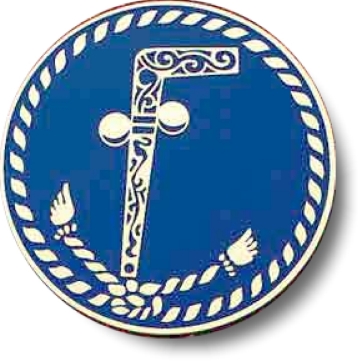
“Tubal Cain has been considered among
Masons as a symbol of worldly possessions.”
~Albert Gallatin Mackey ( A lexicon of freemasonry )
THE LOST KEYS OF FREEMASONRY
The day has come when Fellow Craftsman must know and apply their knowledge. The lost key to their grade is the mastery of emotion , which places the energy of the universe at their disposal. Man can only expect to be entrusted with great power by proving his ability to use it constructively and selflessly.
When the Mason learns that the key to the warrior on the block is the proper application of the dynamo of living power, he has learned the mystery of his Craft the seething energies of Lucifer are in his hands, and before he may step onward and upward, he must prove his ability to“properly apply energy”.
He must follow in the footsteps of his forefather, Tubal-Cain, who with the mighty strength of the war god hammered his sword into a plowshare.
ALBERT PIKE is the most honored Free-Mason in American history. He is one of only 2 people of having the honor of being buried in the THE HOUSE OF THE TEMPLE in Washington DC.
He was a confederate general and is noted for his atrocities against union troops and native Americans. He founded the Ku Klux Klan with Nathan Forest and had the title Chief Justice. The KKK is a Masonic body. He was the Sovereign Grand Commander of the Scottish Rite which meant he was the highest ranking Mason in America. He was also a Supreme Luciferian Pontiff which meant he was the highest ranking Satanist in the world. He was considered the greatest Masonic philosopher of the Western World. He is the only confederate general to be buried in the city limits of Washington DC.
He has a 50 foot statue erected in his honor in Washington.
That which we must say to a crowd is— We worship a God, but it is the God that one adores without superstition. To you, Sovereign Grand Inspectors General, we say this, that you may repeat it to the Brethren of the 32°, 31°, and 30° — The Masonic Religion should be, by all of us initiates of the high degrees, maintained in the purity of the Luciferian Doctrine. If Lucifer were not God, would Adonay whose deeds prove his cruelty, perdify and hatred of man, barbarism and repulsion for science, would Adonay and his priests, calumniate him?
~ Albert Pike 33° Free-Mason
He wrote MORALS AND DOGMA. It is a book of esoteric philosophy published by the Supreme Council, 33°, of the Scottish Rite, Southern Jurisdiction of the United States.
The Apocalypse is, to those who receive the nineteenth Degree, the Apotheosis of that Sublime Faith which aspires to God alone, and despises all the pomps and works of Lucifer. LUCIFER, the Light-bearer! Strange and mysterious name to give to the Spirit of Darkness! Lucifer, the Son of the Morning! Is it he who bears the Light, and with its splendors intolerable blinds feeble, sensual, or selfish Souls? Doubt it not! for traditions are full of Divine Revelations and Inspirations: and Inspiration is not of one Age nor of one Creed. Plato and Philo, also, were inspired.
~ Albert Pike 33° Free-Mason
Isaiah 14 : Triumphant Exultation over Babel
3And it shall come to pass in the day that the LORD shall give you rest from your sorrow, and from your fear, and from the hard bondage wherein you were made to serve, 4That you shall take up this proverb against the king of Babylon, and say, How has the oppressor ceased! the golden city ceased! 5The LORD has broken the staff of the wicked, and the scepter of the rulers. 6He who smote the people in wrath with a continual stroke, he that ruled the nations in anger, is persecuted, and none hinders. 7The whole earth is at rest, and is quiet: they break forth into singing. 8Yes, the fir trees rejoice at you, and the cedars of Lebanon, saying, Since you are laid down, no feller is come up against us. 9Hell from beneath is moved for you to meet you at your coming: it stirs up the dead for you, even all the chief ones of the earth; it has raised up from their thrones all the kings of the nations. 10All they shall speak and say to you, Are you also become weak as we? are you become like to us? 11Your pomp is brought down to the grave, and the noise of your viols: the worm is spread under you, and the worms cover you. 12How are you fallen from heaven, O Lucifer, son of the morning! how are you cut down to the ground, which did weaken the nations!
O Lucifer, son of the morning!
דָּן Dân, dawn;
Dan is pronounced DAWN ie. “morning”
HERMETIC ORDER OF THE GOLDEN DAWN
דָּן Dân, (pronounced) ‘dawn’
THE HERMETIC ORDER OF THE GOLDEN DAWN is an organization devoted to the study and practice of the occult, metaphysics, and paranormal activities during the late 19th and early 20th centuries. Known as a magical order, the Hermetic Order of the Golden Dawn was active in Great Britain and focused its practices on theurgy and spiritual development.
Many present-day concepts of ritual and magic that are at the centre of contemporary traditions, such as Wicca and Thelema, were inspired by the Golden Dawn, which became one of the largest single influences on 20th-century Western occultism. The three founders, William Robert Woodman, William Wynn Westcott, and Samuel Liddell MacGregor Mathers, were Freemasons and members of the Rosicrucians in Anglia Westcott appears to have been the initial driving force behind the establishment of the Golden Dawn.
The Golden Dawn system was based on hierarchy and initiation like the Masonic Lodges; however women were admitted on an equal basis with men.
The “Golden Dawn” was the first of three Orders, although all three are often collectively referred to as the “Golden Dawn”.
- The First Ordertaught the basics of : astrology, tarot divination, geomancy, esoteric philosophy based on the Hermetic Qabalah, and personal development through study and awareness of the 4 Classical Elements
- The Second or “Inner” Order (the Rosae Rubeae et Aureae Crucis (the Ruby Rose and Cross of Gold)) taught magic, including : scrying, astral travel,and alchemy.
- The Third Order was that of the “Secret Chiefs”, who were said to be highly skilled; they supposedly directed the activities of the lower two orders by spirit communication with the Chiefs of the Second Order.
DUETERONOMY 33 : MOSES BLESSES 12 TRIBES
Dan he said, Dan is a lion’s whelp: he shall leap from Bashan[h1316].
Bashan[h1316] בָּשָׁן Bâshân, baw-shawn’occurs 60 in 53
- “sandy soil”
BASHAN is known for its GREAT OAKS and for its fertility.
- The Sidion’s called it Sirion.
- The Amorite’s called it Shenir.
- Bashan was where Og, the king of the Amorite’s reigned.
- Bashan is a name for Mt. Hermon aka Caesaria Philippi, where the fallen angels fell during the days of Jared before the flood
DRUID = “OAK KNOWER”
- Oak leaves are traditionally an important part of German Army regalia.
- The Nazi party used the traditional German eagle, standing atop of a swastika inside a wreath of oak leaves.
- It is also known as the Iron Eagle.
- During the Third Reich of Nazi Germany, oak leaves were used for military valor decoration on the Knights Cross of the Iron Cross.
- They also symbolize rank in the United States Armed Forces.
Bashan = “sandy soil”
QUICKSAND (by David Bowie)
“I’m closer to the Golden Dawn
Immersed in Crowley’s uniform, Of imagery
I’m living in a silent film, Portraying Himmler’s
sacred realm, Of dream reality…
I’m torn between the light and dark, where others see their targets,
divine symmetry, should I kiss the vipers fang?
HEINRICH HIMMLER
believed that a major task of the SS should be “acting as the vanguard in overcoming Christianity and restoring a ‘Germanic’ way of living” as part of preparations for the coming conflict between “humans and subhumans”.[89] Himmler biographer Peter Longerich wrote that, while the Nazi movement as a whole launched itself against Jews and Communists, “by linking de-Christianisation with re-Germanization, Himmler had provided the SS with a goal and purpose all of its own”.[89] Himmler was vehemently opposed to Christian sexual morality and the “principle of Christian mercy”, both of which he saw as dangerous obstacles to his planned battle with “subhumans”.[89] In 1937, Himmler declared:
“We live in an era of the ultimate conflict with Christianity. It is part of the mission of the SS to give the German people in the next half century the non-Christian ideological foundations on which to lead and shape their lives. This task does not consist solely in overcoming an ideological opponent but must be accompanied at every step by a positive impetus: in this case that means the reconstruction of the German heritage in the widest and most comprehensive sense.
~ Himmler
Himmler was interested in mysticism and the occult from an early age. He tied this interest into his racist philosophy, looking for proof of Aryan and Nordic racial superiority from ancient times. He promoted a cult of ancestor worship, particularly among members of the SS, as a way to keep the race pure and provide immortality to the nation.
Viewing the SS as an “order” along the lines of the Teutonic Knights, he had them take over the Church of the Teutonic Order in Vienna in 1939. He began the process of replacing Christianity with a new moral code that rejected humanitarianism and challenged the Christian concept of marriage.[195] The Ahnenerbe, a research society founded by Himmler in 1935, conducted research all over the globe to look for proof of the superiority and ancient origins of the Germanic race.
All regalia and uniforms of Nazi Germany, particularly those of the SS, used symbolism in their designs. The stylised lightning bolt logo of the SS was chosen in 1932. The logo is a pair of runes from a set of 18 Armanen runes created by Guido von List in 1906. The ancient Sowilō rune originally symbolised the sun, but was renamed “Sig” (victory) in List’s iconography.[198]Himmler modified a variety of existing customs to emphasise the elitism and central role of the SS; an SS naming ceremony was to replace baptism, marriage ceremonies were to be altered, a separate SS funeral ceremony was to be held in addition to Christian ceremonies, and SS-centric celebrations of the summer and winter solstices were instituted.[199][200]
The Totenkopf(death’s head) symbol, used by German military units for hundreds of years, had been chosen for the SS by Schreck.[201] Himmler placed particular importance on the death’s-head rings; they were never to be sold, and were to be returned to him upon the death of the owner. He interpreted the deaths-head symbol to mean solidarity to the cause and a commitment unto death.[202]
Totenkopf(i.e. skull, literally dead’s head) is the German word for the skull and crossbones and death’s head symbols. The Totenkopf symbol is an old international symbol for death, the defiance of death, danger, or the dead, as well as piracy. It consists usually of the human skull with or without the mandible and often includes two crossed long-bones (femurs), most often depicted with the crossbones being behind some part of the skull.
George Bush’s grandfather, the late US senator Prescott Bush, was a director and shareholder of companies that profited from their involvement with the financial backers of Nazi Germany. The Guardian has obtained confirmation from newly discovered files in the US National Archives that a firm of which Prescott Bush was a director was involved with the financial architects of Nazism.
The Bushes were members of the Secret Society “Skull and Bones” at Yale
THE SKULL AND BONES HALL at Yale is otherwise known as the “TOMB” where initiates would perform the “raising of Osiris” ritual. Osiris is the “Egyptian God of the Dead” aka Baal or Nimrod
Members are assigned nicknames (e.g., “Long Devil”, the tallest member, and “Boaz”, a varsity football captain, or “Sherrife” prince of future).
Many of the chosen names are drawn from literature (e.g., “Hamlet“, “Uncle Remus“), religion, and myth. The banker Lewis Lapham passed on his nickname, “Sancho Panza”, to the political adviser Tex McCrary. Averell Harriman was “Thor”, Henry Luce was “Baal”, McGeorge Bundy was “Odin”, and George H. W. Bush was “Magog”.
George H Bush and his son George W Bush
are 33rd° Masons who attended Yale university
Yale’s Mascot Name: “Handsome Dan”
Dan [h6327] דָּן Dân, dawn;
This is why they are called “deen’s” at schools.
- Yale has graduated 5 U.S. Presidents,
- 19 U.S. Supreme Court Justices,
- 20 living billionaires,
- Heads of State,
- 100’s of members of Congress,
- High-level U.S. Diplomats,
- 58 Nobel laureates,
- 5 Fields Medalists,
- 78 MacArthur Fellows,
- 247 Rhodes Scholars,
- 119 Marshall Scholars have been affiliated with the university.
Yale’s Motto: “Urim and Thummin”
The “Urim and Thummin” was worn by the High Priest, Aaron,
in the “Breastplate of JUDGEment” when entering the Holy of Holies.
EXODUS 29 : BREASTPLATE OF JUDGEMENT
29And Aaron shall bear the names of the children of Israel in the breastplate of judgment on his heart, when he goes in to the holy place, for a memorial before the LORD continually. 30And you shall put in the breastplate of judgment the Urim and the Thummim; and they shall be on Aaron’s heart, when he goes in before the LORD: and Aaron shall bear the judgment of the children of Israel on his heart before the LORD continually.
Dan’s Stone on the
Breastplate of Judgement was “blue“
Yale’s color is “blue”
The degrees of freemasonry retain the three grades of medieval craft guilds,
those of Apprentice, Journeyman or fellow (now called Fellowcraft), and Master Mason.
These are the degrees offered by Craft (or “Blue” Lodge) Freemasonry.
The particular type of stone was the LAPIS LAZULI (aka SAPPHIRE)
on the 2nd row in the middle
Sapphire [h6327] סַפִּיר çappîyr, sap-peer’
- a gem (perhaps used for scratching other substances),
- probably the sapphire:—sapphire.
- lapis lazuli
from H5608; סָפַר çâphar, saw-far’;occurs 161 in 154
- a primitive root; properly, to score with a mark as a tally or record,
- i.e. (by implication) to inscribe, and also to enumerate;
- intensively, to recount,
The funeral mask of Tutankhamun (1341-1323 BC),
LAPIS LAZULI was used for the eyebrows of the young Pharaoh.
22nd dynasty; Isis and Horus protect Osiris, seated on a LAPIS LAZULI pillar
The Main Body of Freemasonry
is the “Scottish Rite” whose symbol is a double headed eagle.
Tsarevich (Fabergé egg). The gold motifs cover the joints,
making the egg look as if it was carved from a single block
of lapis lazuli with double headed eagle engraved
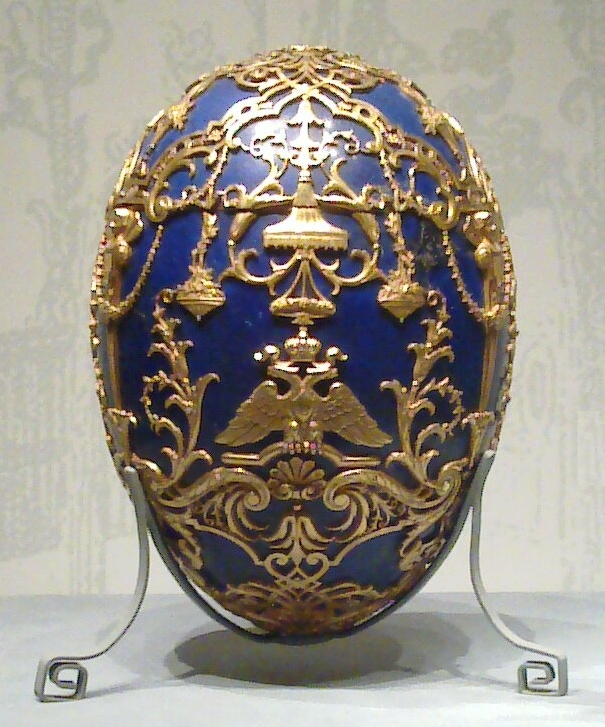
“YALE” is the same phonetically to “JAEL” in the Bible
JAEL [h3278] יָעֵל Yâʻêl, yaw-ale’occurs 6 in 6
- Jael = “mountain goat”
- the wife of Heber the Kenite who killed the general Sisera as he slept by driving a peg through his temples into the ground
- 1st occurrence of “Jael” in the bible is JUDGES4 : 17
BAPHOMET, the sabbatic goat of the
Knights Templar
Baphomet (/ˈbæfoʊmɛt/)
is a term originally used to describe an idol or other deity that the Knights Templar were accused of worshipping and that subsequently was incorporated into disparate occult and mystical traditions. It appeared as a term for a pagan idol in trial transcripts of the Inquisition of the Knights Templar in the early 14th century.
Since 1856, the name Baphomet has been associated with a “Sabbatic Goat” image drawn by Eliphas Levi[3]. Lévi’s depiction of Baphomet is similar to that of The Devil in early Tarot. Lévi, working with correspondences different from those later used by S. L. MacGregor Mathers, “equated the Devil Tarot key with Mercury,” giving “his figure Mercury’s caduceus, rising like a phallus from his groin.“
Lévi believed that the alleged devil worship of the medieval Witches’ Sabbath was a perpetuation of ancient pagan rites. A goat with a candle between its horns appears in medieval witchcraft records,[49] and other pieces of lore are cited in DOGME et RITUEL.
Matthew 25 : The Sheep and the Goats
31When the Son of man shall come in his glory, and all the holy angels with him, then shall he sit on the throne of his glory: 32And before him shall be gathered all nations: and he shall separate them one from another, as a shepherd divides his sheep from the goats: 33And he shall set the sheep on his right hand, but the goats on the left.
THE KNIGHTS TEMPLAr
The Knights Templar is a Catholic military organization that is directly tied to Free-Masonry.
The Knight’s Templar order’s higher echelons in particular acquainted themselves with-and incorporated into their practice-beliefs based on the mystic teachings of the Cabala, the influence of the Bogomils, and Luciferians, thus leaving Christianity behind.
According to the Templars, Jesus was a god ruling in another world, with little or no power in our present one.
Satan was the lord of this material world of ours.
PHILIPPIANS 3
18(For many walk, of whom I have told you often, and now tell you even weeping, that they are the enemies of the cross of Christ:19Whose end is destruction, whose God is their belly, and whose glory is in their shame, who mind earthly things.)
Candidates for the order were indeed required to:
- Deny God, Christ and the Saints
- Commit sacrilegious acts
- Spit and urinate onto the holy Cross
- Be kissed square on the mouth with the “Oscolum Infame” or “The Kiss of Shame” on the navel and buttocks of “Baphomet” by the more senior Knights Templars, during the initiation ceremony.
That they freely practiced homosexuality and other sexual perversions, that the Grand Master wielded total authority over everything, that they practiced rituals of sorcery and used Cabalistic symbolism was clear evidence that the order had had become a sect blasphemous to Christianity.
Their questioning revealed yet another of their unorthodox practices: Without being specific, they had admitted to idolatry, but during their ongoing interrogation, it gradually emerged that without any doubt, they were worshipping Satan.
DUETERONOMY 33 : MOSES BLESSES 12 TRIBES
Dan he said, Dan is a lion’s whelp: he shall leap from Bashan[h1316].
Bashan[h1316] בָּשָׁן Bâshân, baw-shawn’occurs 60 in 53
- “sandy soil”
- Bashan is a name for Mt. Hermon aka Caesaria Philippi, where the fallen angels fell during the days of Jared before the flood
ENOCH : THE FALLEN ANGELS
And it came to pass when the children of men had multiplied that in those days were born unto them beautiful and comely daughters. And the angels, the children of the heaven, saw and lusted after them, and said to one another: ‘Come, let us choose us wives from among the children of men and beget us children.’ And they were in all 200; who descended in the days of Jared on the summit of Mount Hermon[h2768], and they called it Mount Hermon, because they had sworn and bound themselves by mutual imprecations upon it.
Hermon [h2768] חֶרְמוֹן Chermôwn, occurs 13 in 13
- Hermon = “a sanctuary”
- a mountain on the northeastern border of Palestine and Lebanon and overlooking the border city of Dan.
from [h2763]חָרַםchâram, khaw-ram’; occurs 52 in 48
- a primitive root; to seclude;
- to ban, devote, destroy utterly, completely destroy, dedicate for destruction, exterminate
- specifically (by a ban) to devote to religious uses (especially destruction);
- physical and reflexive, to be blunt as to the nose:
- —make accursed, consecrate, (utterly) destroy, devote, forfeit, have a flat nose, utterly (slay, make away).
The water that melts from the snow caps
of Mount Hermon (Bashan) is what forms the JORDAN RIVER
where John The Baptist baptized
Top of Mount Hermon : The United Nations Disengagement Force
located on 33rd° parallel 33 miles East of the Mediterranean
United Nations Logo with 33sections
DEN-VER
at the foothills of the Snow Capped Rocky Mountains
Eagle on Seal of City of Denver
- Founded 11/17/1858
- 17th street is the financial district (wall street of the west)
- 153 square miles (17th triangular #)
- 17.4% population increase since 2010
- 153 square miles (17th triangular #)
- Denver’s position near the mineral-rich Rocky Mountains encouraged mining and energy companies to spring up in the area. In the early days of the city, gold and silver booms and busts played a large role in the city’s economic success. In the 1970s and early 1980s, the energy crisis in America and resulting high oil prices created an energy boom in Denver captured in the soap opera Dynasty.
- Apollo Hall opened soon after the city’s founding in 1859 and staged many plays for eager settlers.
- Denver has many nationally recognized museums, including a new wing for the Denver Art Museum by world-renowned architect Daniel Libeskind, the second largest Performing Arts Center in the nation after Lincoln Center in New York City
Nicknames:
- The Mile High City[1]
- Queen City of the Plains[2]
- Wall Street of the West[3]
Murals at the DEN-VER International Airport
A statue of “BluCifer” (DENVER BRONCOS);
Dan’s BLUE Birthstone on Breastplate of Judgement
Genesis 49 : PROPHECY OF DAN
16Dan shall judge his people, as one of the tribes of Israel. 17Dan shall be a serpent by the way, an adder [H8207] in the path, that bites the horse heels, so that his rider shall fall backward. 18I have waited for your salvation, O LORD
50 foot statue of “Anubis” the Egyptian God of Death
Aerial View of the Airport
OBAMA INAUGURATION IN DENVER
Replica of Altar of Pergamum which Hitler used
Revelation 2 : Message to the Church in Pergamum
12And to the angel of the church in Pergamos write; These things said he which has the sharp sword with two edges; 13I know your works, and where you dwell, even where Satan’s seat is: and you hold fast my name, and have not denied my faith, even in those days wherein Antipas was my faithful martyr, who was slain among you, where Satan dwells.
Druid = “Oak Knower”;
The druids would not meet for ritual if there was not an Oak tree present. Witches often danced beneath the Oak Tree for ritual.
“Hollywood”
is named for the Oak wood
used to make druidic
magic wands
Jack Warner who founded the WARNER BROTHERS was a Mason with the Mount Olive Lodge No. 506, Los Angeles, California.
Louis B. Mayer was a film producer who merged to form Metro-Goldwyn-Mayer (MGM), and was a member of the St. Cecile Lodge No. 568, New York, New York.

Darryl F. Zanuck was the co-founder of 20th CENTURY Productions, and a Mason at the same lodge as Jack Warner at the Mount Olive Lodge No. 506, Los Angeles, California. He played a major part in the Hollywood studio system as one of its longest survivors.
Walt Disney founded WALT DISNEY STUDIOS and was Mason. He was a 33 Degree Freemason of the Scottish Rite.
National Treasure is a Walt Disney Film.
(Plot): Benjamin Franklin Gates is an American historian, cryptologist, and treasure hunter. As a child, his grandfather John told him of a story that Charles Carroll of Carrollton passed on a secret to their ancestor in 1832 of a fabled national treasure hidden in America by the Founding Fathers and Freemasons.
The clue leading to the treasure is the phrase
“The secret lies with Charlotte”.
Thirty years later, Ben leads an expedition with Ian Howe, and his friend, Riley Poole, a computer expert, to find the CHARLOTTE, a ship lost in the Arctic, which holds the first clue to finding the national treasure.
PROVERBS 30:
19 The way of an eagle in the air; the way of a serpent upon a rock; the way of a ship in the midst of the sea; and the way of a man with a maid. 20 Such [is] the way of an adulterous woman; she eateth, and wipeth her mouth, and saith, I have done no wickedness
The way of an
eagle in the air;
the way of a serpent
upon a rock;
the way of a ship in
the midst of the sea
JUDGES 5:17
why did Dan remain in ships?
the way of a man
with a maid
Sons of the Rachel’s
Handmaid
Bilhah
CHARLOTTE
which is a play
on the word
HARLOT
Governor of NC :
Dan Forest
NC is a Coastal State :
Merchants, Traders, Phoenicians.
The first city Dan inherited in Canaan
was Zorahwhich means
“place of the hornet”
Nicknames of Charlotte:
“The Queen City” and “the Hornet’s Nest”
Charlotte’s NBA team is “the hornets”
The Charlotte Region has a major base of energy-oriented organizations
and has become known as
“Charlotte USA – The New Energy Capital.”
Energy is fueled by Bitumen coupled with the knowledge of Alchemy.
Bitumen is what held the walls of the Tower of Babylon together
Charlotte is the 17th most populous US city
17 cities were inherited by the Tribe of Dan upon entering the Promised Land
Charlotte is home to the corporate headquarters of Bank of America and the east coast operations of Wells Fargo, which along with other financial institutions made it the second-largest banking center in the United States from 1995 to 2017
and the third-largest from 2017 to present. Bone chilling murals are in the bank describing the apocalyptic story of humanity’s future in pictures just like the ones in DENver airport
Bank of America headquarters is a
Ziggurat just like the Tower of Babel
This is the clue that gave Ben Gates the idea about the Declaration of Independence. The stem of the pipe revealed a riddle when covered in an iron gall ink rolled out on paper.
“The legend writ, the stain affected, the key in Silence undetected, fifty-five in iron pen, Mr. Matlack can’t offend.”
The 2nd Clue found on the back of the Declarationis the Celtic Pagan Trinity logo
Symbol for DRUIDS
Once the Protestant Reformation happened,
Cathedral building came to a halt so stone masons
didn’t have nearly as much work to do.
So they started to bring in speculative masons.
Operative
Speculative
This symbol is in reference to the
EMERALD TABLET OF HERMES TRISMEGISTUS
wherein it is stated that he knew
the 3 parts of the wisdom of the whole universe.
Dan (Hebrew: דן), is a city mentioned in the Hebrew Bible, described as the northernmost city of the Kingdom of Israel,[1] and belonging to the tribe of Dan. The city is identified with a telllocated in northern Israel known as Tel Dan (תל דן “Mound of Dan”) in Hebrew, or Tell el-Qadi (تل القاضي “Mound of the Judge” in Arabic).
According to the Book of Judges: prior to the Tribe of Dan occupying the land, the town was known as Laysha (Judges 18:7 and Isaiah 10:30, לישה) or Laish (elsewhere Judges 18) – which root the Hebrew poets applied also to the lion (Job 4:11, Proverbs 30:30 and Isaiah 30:5).[8] The Egyptians cursed Laish in the Execration Tablets; later, Tuthmosis III conquered the town “ra-wy-sa” along others.[9] Laish was allied with the Sidonians. This might indicate they were Phoenicians (Sidonians were Phoenicians from the city of Sidon), who may or may not have been Canaanite. The alliance offered little practical benefit due to the remoteness of Laish from Sidon, and the intervening Lebanon mountains. The town was also isolated from the Assyrians and Aram by the Hermon mountains; the Septuagint mentions that the town was unable to have an alliance with the Aramaeans. The masoretic text does not mention the Aramaeans, but instead states that the town had no relationship with any man – textual scholars believe that this is a scribal error, with adham (man) being a mistake for Aram.[10]
According to Judges concerning Micah’s Idol, the Tribe of Dan did not at that point have any territory to their name (Judges 18:1), and so, after scouting out the land, eventually decided to attack Laish, as the land around it was fertile, and the town was demilitarised. Most Biblical scholars[citation needed] now believe that the Tribe of Dan originated as one of the Sea Peoples, hence remaining on their ships in the early Song of Deborah, and not having Israelite land to their name,[11][12] though conservative scholars argue[citation needed] that the Tribe of Dan migrated because they were forced out of their original lands by the Philistines.
The Bible describes the Tribe of Dan brutally defeating the people of Laish and burning the town to the ground, and then building their own town in the same spot. The narrative states that Laish subsequently became known as Dan, after the name of the tribe, and that it housed a sanctuary filled with idols, which remained in use until the time of captivity of the land and the time that the house of God ceased to be in Shiloh. Scholars think that the former refers to the Assyrian conquest of the Kingdom of Israel by Tiglath-pileser III in 733/732 BCE, and that the latter refers to the time of Hezekiah‘s religious reform;[12] an alternative possibility, however, supported by a minority of scholars, is that time of captivity of the land is a typographic error and should read time of captivity of the ark, referring to the battle of Eben-Ezer, and the Philistine capture of the Ark, and that the ceasing of the house of God being in Shiloh refers to this also.[13]
The excavators of Tel Dan uncovered a city gate made of mud bricks on top of megalithic basalt standing stones,[14] estimated to have been built around 1750 BC. Its popular name is Abraham’s Gate, due to the biblical story that Abraham traveled to Dan to rescue his nephew Lot. Genesis 14:14:
“And when Abram heard that his brother was taken captive, he armed his trained servants, born in his own house, three hundred and eighteen, and pursued them unto Dan.”
The gate was restored in the late 2000s, and has become a popular tourist attraction.[15]
The Israelite gate has a raised square platform reached by two steps. Decorated stone sockets in the corners may have been created to hold canopy poles. It may have been the base of the king’s seat, where he would sit in judgment.[16]
Iron Age[edit]
According to 2 Kings 10:29 and 2 Chronicles 13:8, Jeroboam erected two golden calves as gods in Bethel and Dan. Textual scholars believe that this is where the Elohist story of Aaron‘s Golden calf actually originates, due to opposition in some sections of Israelite society (including the Elohist themselves) to the seeming idol-worship of Jeroboam.[17] However, some Biblical scholars believe that Jeroboam was actually trying to outdo the sanctuary at Jerusalem (Solomon’s Temple), by creating a seat for God that spanned the whole kingdom of Israel, rather than just the small space above the Ark of the Covenant in Jerusalem; the seat for God in the Jerusalem sanctuary was represented by a cherubim on either side, and so Jeroboam might have been using the calves to represent the sides of his seat for God – implying his whole kingdom was equal in holiness to the Ark.[17]
In archaeology, a tell, or tel (derived from Arabic: تَل, tall, ‘hill’ or ‘mound’),[1][2] is an artificial mound formed from the accumulated refuse of generations of people living on the same site for hundreds or thousands of years. A classic tell looks like a low, truncated cone with sloping sides[3] and can be up to 30 metres high.[4] A tell is an artificial hill created by many generations of people living and rebuilding on the same spot. Over time, the level rises, forming a mound.[9] The single biggest contributor to the mass of a tell are mud bricks, which disintegrate rapidly. Excavating a tell can reveal buried structures such as government or military buildings, religious shrines, and homes, located at different depthsdepending on their date of use. They often overlap horizontally, vertically, or both. Archaeologists excavate tell sites to interpret architecture, purpose, and date of occupation.
Within the remains of the city wall, close to the entrance of the outer gate, parts of the Tel Dan Stele were found.[18] The basalt stone bears an Aramaic inscription referring to one of the kings of Damascus; the excavators of the site believe that the king it refers to is Hazael (c 840 BCE),[19] though a minority argue that it instead refers to Ben-Hadad(c 802 BCE).[20] A small part of the inscription remains, with text containing the letters ‘ביתדוד’ (BYTDWD), which some archaeologists agree refers to House of David (Beth David in Hebrew.[21][22] In the line directly above, the text reads ‘MLK YSR’L’, i.e. “King of Israel”. Hebrew script from the era is vowel-less), which would make the inscription the first time that the name David has been found at an archaeological site dating before 500 BCE.
Dan suffered in the era of expansion by the Aramaeans, due to being the closest city to them in the kingdom of Israel. The several incursions indicated by the Book of Kings suggest that Dan changed hands at least four times between the Kingdom of Israel and Aramaeans, around the time that Israel was ruled by Ahab and the Aramaeans by Ben Hadad I, and their successors. Around this time, the Tel Dan stele was created by the Aramaeans, during one of the periods of their control of Dan. When the Assyrian empire expanded to the south, the kingdom of Israel initially became a vassal state, but after rebelling, the Assyrians invaded, the town fell to Tiglath-Pileser III in 733/732 BCE.
In 1992, in order to tidy up the site for presentation to visitors, a heap of debris was removed which dated from the time of the Assyrian destruction of the city by Tiglath-Pileser III in 733/2 BCE. A hitherto unknown earlier gateway to the city was uncovered. The entrance complex led to a courtyard paved with stone with a low stone platform. In the 9th century BCE, the podium was enlarged, and major fortifications were built, a city wall with buttresses and a complex gate. The podium was enlarged further in the 8th century BCE by Jeroboam II, then destroyed by Tiglath-Pileser III.[23]
Later periods[edit]
During the Persian, Hellenistic, and Roman periods, remains indicate that cultic activities continued around the podium (also known as “the High Place“).[23]
Tel Dan Nature Reserve[edit]
The Tel Dan Nature Reserve was first declared on 39 hectares surrounding the tel in 1974. 9 hectares were added to the reserve in 1989.[24] The Dan River is one of the three water sources of the Jordan River that meet in the northern part of the Hula Valley.[25]
- The Phoenicians were the first to establish trading posts in Libya.
- Libya has the 10th-largest proven oil reserves of any country in the world.[12]
- The largest city and capital, Tripoli, is located in western Libya and contains over one million of Libya’s six million people.[13] The second-largest city is Benghazi, which is located in eastern Libya.
- Libya was an early centre of Christianity
- Libya is a member of the United Nations (since 1955), the Non-Aligned Movement, the Arab League, the OIC and OPEC. The country’s official religion is Islam, with 96.6% of the Libyan population being Sunni Muslims.
- The First Libyan Civil War, also referred to as the Libyan Revolution[37] or 17 February Revolution,[38] was an armed conflict in 2011 in the North African country of Libya fought between forces loyal to Colonel Muammar Gaddafi and those seeking to oust his government
In Greek mythology, Danaus (/ˈdæniəs/; Ancient Greek: Δαναός Danaós) was the king of Libya. His myth is a foundation legend (or re-foundation legend) of Argos, one of the foremost Mycenaean cities of the Peloponnesus. In Homer’s Iliad, “Danaans” (“tribe of Danaus”) and “Argives” commonly designate the Greek forces opposed to the Trojans.
Danaus, was the son of King Belus of Egypt and the naiad Achiroe, daughter of the river god Nilus. He was the twin brother of Aegyptus, king of Arabia while Euripides adds two others, Cepheus, king of Ethiopia and Phineus, betrothed of Andromeda.
- Belus: the Canaanite Baʿal as a legendary king of Egypt, The wife of Belus has been named as Achiroe, or Side (eponym of the Phoenician city of Sidon). Belus was the son of Poseidon and Libya.
- Belus ruled in Egypt, and Agenor ruled over Sidon and Tyre in Phoenicia.
- According to Pausanias, Belus founded a temple of Heracles in Babylon
- According to Pherecydes,[7] Belus also had a daughter named Damno who married Agenor (Belus’ brother, her uncle) and bore to him Phoenix and two daughters named Isaie, and Melia, these becoming wives respectively to sons of Belus (their cousins) Aegyptus and Danaus.[8] Yet another source says that the daughter of Belus who married Agenor was named Antiope.[9]
- Diodorus Siculus[2] claims that Belus founded a colony on the river Euphrates, and appointed the priests-astrologers whom the Babylonians call Chaldeans who like the priests of Egypt are exempt from taxation and other service to the state.
- Modern writers suppose a possible connection between Belus and one or another god who bore the common northwest Semitic title Ba‘al.[citation needed] According to some sources Belus was the son of Poseidon by Libya, he is associated with Babylon and Assyria, and his name is an echo of the Canaanite god Baal (Redfield, 1989, pp. 28 & 30-31), which are linguistically synonymous with Enlil and Marduk, and also in ancient Levantine/Canaanite mythology, a fertility god, whose attributes are lightning, rainstorms and the forces of nature.
Danaus had fifty daughters, the Danaides, 12 of whom were born to the naiad Polyxo; six to Pieria; two to Elephantis; four to queen Europe; 10 to the hamadryad nymphs Atlanteia and Phoebe; seven to an Ethiopian woman; three to Memphis; two to Herse and lastly four to Crino.[1] According to Hippostratus, Danaus had all these progeny begotten by Europa, he daughter of Nilus.[2] In some accounts, Danaus married Melia while Aegyptus consorted with Isaie[3], these two women were daughters of their uncle Agenor, king of Tyre, and their possible sister, Damno who was described as the daughter of Belus.[4]
Flight from Aegyptus[edit]
After Aegyptus commanded that his fifty sons should marry the Danaides, Danaus elected to flee instead, and to that purpose, he built a ship, the first ship that ever was.[5] In it, he fled to Argos, to which he was connected by his descent from Io, a priestess of Hera at Argos, who was wooed by Zeus and turned into a heifer and pursued by Hera until she found asylum in Egypt. Argos at the time was ruled by King Pelasgus, the eponym of all autochthonous inhabitants who had lived in Greece since the beginning, also called Gelanor (“he who laughs”). The Danaides asked Pelasgus for protection when they arrived, the event portrayed in The Suppliants by Aeschylus. Protection was granted after a vote by the Argives.
When Pausanias visited Argos in the 2nd century CE, he related the succession of Danaus to the throne, judged by the Argives, who “from the earliest times … have loved freedom and self-government, and they limited to the utmost the authority of their kings”:
- “On coming to Argos he claimed the kingdom against Gelanor, the son of Sthenelas. Many plausible arguments were brought forward by both parties, and those of Sthenelas were considered as fair as those of his opponent; so the people, who were sitting in judgment, put off, they say, the decision to the following day. At dawn a wolf fell upon a herd of oxen that was pasturing before the wall, and attacked and fought with the bull that was the leader of the herd. It occurred to the Argives that Gelanor was like the bull and Danaus like the wolf, for as the wolf will not live with men, so Danaus up to that time had not lived with them. It was because the wolf overcame the bull that Danaus won the kingdom. Accordingly, believing that Apollo had brought the wolf on the herd, he founded a sanctuary of Apollo Lycius.”[6]
Murdered bridegrooms[edit]
The sanctuary of Apollo Lykeios (“wolf-Apollo”, but also Apollo of the twilight) was still the most prominent feature of Argos in Pausanias’ time: in the sanctuary the tourist might see the throne of Danaus himself, an eternal flame, called the fire of Phoronius.
When Aegyptus and his fifty sons arrived to take the Danaides, Danaus gave them, to spare the Argives the pain of a battle. However, he instructed his daughters to kill their husbands on their wedding night. Forty-nine followed through, and subsequently buried the heads of their bridegrooms in Lerna;[7] but one, Hypermnestra, refused because her husband, Lynceus, honored her wish to remain a virgin. Danaus was angry with his disobedient daughter and threw her to the Argive courts. Aphrodite intervened and saved her. Lynceus and Hypermnestra then began a dynasty of Argive kings (the Danaid Dynasty).[8][9][10] Some sources relate that Amymone, the “blameless” Danaid,[11] and/or Bryce (Bebryce)[12] also spared their husbands.
Aftermath[edit]
Aegyptus, after the death of his sons, escaped to Aroe in Greece and died there. His monument was shown in the temple of Serapis at Patrae.[13]
In some versions, Lynceus later killed Danaus as revenge for the death of his brothers.
The remaining forty-nine Danaides had their grooms chosen by a common mythic competition: A foot-race was held and the order in which the potential Argive grooms finished decided their brides (compare the myth of Atalanta). Two of the grooms were Archander and Architeles, sons of Achaeus: They married Scaea and Automate respectively.[14][15]
In later accounts, the Danaides were punished in Tartarus by being forced to carry water in a jug to fill a bath without bottom (or with a leak) and thereby wash off their sins, but the bath was never filled because the water was always leaking out.[16][17][18]
Danaus in Rhodes[edit]
Another account of the travels of Danaus gave him three daughters, Ialysos, Kamiros and Lindos, who were worshipped in the cities that took their names in the island of Rhodes, Ialysos, Kamiros and Lindos (but see also Cercaphus). According to Rhodian mythographers who informed Diodorus Siculus,[19] Danaus would have stopped and founded a sanctuary to Athena Lindia on the way from Egypt to Greece. Herodotus heard that the temple at Lindos was founded by Danaus’ daughters.[20] Ken Dowden observes[21] that once the idea is dismissed that myth is directly narrating the movements of historical persons, that the loci of Danaian institutions at Lindos in Rhodes as well as at Argos suggests a Mycenaean colony sent to Rhodes from the Argolid, a tradition, in fact, that Strabo reports.
Other feats[edit]
Danaus was credited as the inventor of wells and said to have migrated from Egypt about 1485 B.C. into that part of Greece which had been previously known as Argos Dipsion. Notes in Pliny the Elder’s, Natural History also added that:
- “He [i.e Danaus] may have introduced wells into Greece, but they had, long before his time, been employed in Egypt and in other countries. The term “Dipsion,” “thirsting,” which it appears had been applied to the district of Argos, may seem to render it probable, that, before the arrival of Danaus, the inhabitants had not adopted any artificial means of supplying themselves with water. But this country, we are told, is naturally well supplied with water.”[22]
The epic Danais[23] was written by one of the cyclic poets; the name of the author and the narration of these events does not survive,[24] but the Danaid tetralogy of Aeschylus undoubtedly draws upon its material. It is represented in the table of epics in the received canon on the very fragmentary “Borgia table“[25] as “Danaides”. The Danais[edit]
A U.S. federal judge used the version of the legend in which the Danaides are forced to perform an impossible task as a simile for the judge’s task of determining whether a case “arises under” the Constitution, laws or treaties of the United States.[26]
According to Greek mythology, Aegyptus or Ægyptus (/ɪˈdʒɪptəs/; Ancient Greek: Αἴγυπτος, Aigyptos means “burnt-face”) is a descendant of the heifer maiden, Io, and the river-god Nilus, and was a king in Egypt.[1]
Aegyptos was the son of King Belus[2] of Egypt and Achiroe, a naiad daughter of Nile. He was the twin brother of Danaus, king of Libya while Euripides adds two others, Cepheus, king of Ethiopia and Phineus, betrothed of Andromeda.
Aegyptus fathered 50 sons by different women: six of whom by a woman of royal blood called Argyphia; 10 by an Arabian woman; seven by a Phoenician woman; three by Tyria; 12 by the naiad Caliadne; six by Gorgo and lastly another six by Hephaestine.[3] According to Hippostratus, Aegyptus had these progeny by a single woman called Eurryroe, daughter of Nilus.[4] In some accounts, Aegyptus consorted with Isaie while Danaus married Melia, these two women were daughters of their uncle Agenor, king of Tyre, and of their possible sister, Damno who was described as the daughter of Belus.[5]
Aegyptus ruled Arabia and conquered nearby country ruled by people called Melampodes and called it by his name, Egypt. Aegyptus fathered fifty sons, who were all but one murdered by forty nine of the fifty daughters of Aegyptus’ twin brother, Danaus, eponym of the Danaids.
A scholium on a line in Euripides, Hecuba 886, reverses these origins, placing the twin brothers at first in Argolis, whence Aegyptus was expelled and fled to the land that was named after him. In the more common version,[6] Aegyptus commanded that his fifty sons marry the fifty Danaides, and Danaus with his daughters fled to Argos, ruled by Pelasgus[7] or by Gelanor, whom Danaus replaced. When Aegyptus and his sons arrived to take the Danaides, Danaus relinquished them, to spare the Argives the pain of a battle; however, he instructed his daughters to kill their husbands on their wedding night. Forty-nine followed through, but one, Hypermnestra (“greatly wooed”), refused, because her husband, Lynceus the “lynx-man”, honored her wish to remain a virgin. Danaus was angry with his disobedient daughter and threw her to the Argive courts. Aphrodite intervened and saved her. Lynceus and Hypermnestra founded the lineage of Argive kings, a Danaid Dynasty.
In some versions, Lynceus later slew Danaus as revenge for the death of his brothers, and the Danaides were punished in the underworld by being forced to carry water through a jug with holes, or a sieve, so that the water always leaked out.
The story of Danaus and his daughters, and the reason for their flight from marriage, provided the theme of Aeschylus‘ The Suppliants.
The Achaeans (/əˈkiːənz/; Ancient Greek: Ἀχαιοί Akhaioí, “the Achaeans” or “of Achaea”) constitute one of the collective names for the Greeks in Homer‘s Iliad(used 598 times) and Odyssey. The other common names are Danaans (/ˈdæneɪ.ənz/; Δαναοί Danaoi; used 138 times in the Iliad) and Argives (/ˈɑːrɡaɪvz/; Ἀργεῖοι Argeioi; used 182 times in the Iliad) while Panhellenes (Πανέλληνες Panhellenes, “All of the Greeks”) and Hellenes (/ˈhɛliːnz/;[1] Ἕλληνες Hellenes) both appear only once;[2] all of the aforementioned terms were used synonymously to denote a common Greek civilizational identity.[3][4] In the historical period, the Achaeans were the inhabitants of the region of Achaea, a region in the north-central part of the Peloponnese. The city-states of this region later formed a confederation known as the Achaean League, which was influential during the 3rd and 2nd centuries BC.
The Homeric “long-haired Achaeans” would have been a part of the Mycenaean civilization that dominated Greece from circa 1600 BC until 1100 BC. Later, by the Archaic and Classical periods, the term “Achaeans” referred to inhabitants of the much smaller region of Achaea. Herodotus identified the Achaeans of the northern Peloponnese as descendants of the earlier, Homeric Achaeans. According to Pausanias, writing in the 2nd century CE, the term “Achaean” was originally given to those Greeks inhabiting the Argolis and Laconia.[5]
Pausanias and Herodotus both recount the legend that the Achaeans were forced from their homelands by the Dorians, during the legendary Dorian invasion of the Peloponnese. They then moved into the region later called Achaea.
A scholarly consensus has not yet been reached on the origin of the historic Achaeans relative to the Homeric Achaeans and is still hotly debated. Former emphasis on presumed race, such as John A. Scott’s article about the blond locks of the Achaeans as compared to the dark locks of “Mediterranean” Poseidon,[6]on the basis of hints in Homer, has been rejected by some. The contrasting belief that “Achaeans”, as understood through Homer, is “a name without a country”, an ethnos created in the Epic tradition,[7] has modern supporters among those who conclude that “Achaeans” were redefined in the 5th century BC, as contemporary speakers of Aeolic Greek.
Karl Beloch suggested there was no Dorian invasion, but rather that the Peloponnesian Dorians were the Achaeans.[8] Eduard Meyer, disagreeing with Beloch, instead put forth the suggestion that the real-life Achaeans were mainland pre-Dorian Greeks.[9] His conclusion is based on his research on the similarity between the languages of the Achaeans and pre-historic Arcadians. William Prentice disagreed with both, noting archeological evidence suggests the Achaeans instead migrated from “southern Asia Minor to Greece, probably settling first in lower Thessaly” probably prior to 2000 BC.[10]
Hittite documents[edit]
Emil Forrer, a Swiss Hittitologist who worked on the Boghazköy tablets in Berlin, said the Achaeans of pre-Homeric Greece were directly associated with the term “Land of Ahhiyawa” mentioned in the Hittite texts.[11] His conclusions at the time were challenged by other Hittitologists (i.e. Johannes Friedrich in 1927 and Albrecht Götze in 1930), as well as by Ferdinand Sommer, who published his Die Ahhijava-Urkunden (“The Ahhiyawa Documents”) in 1932.[11]
Some Hittite texts mention a nation lying to the west called Ahhiyawa.[12] In the earliest reference to this land, a letter outlining the treaty violations of the Hittite vassal Madduwatta,[13] it is called Ahhiya. Another important example is the Tawagalawa Letter written by an unnamed Hittite king (most probably Hattusili III) of the empire period (14th–13th century BC) to the king of Ahhiyawa, treating him as an equal and implying Miletus (Millawanda) was under his control.[14] It also refers to an earlier “Wilusa episode” involving hostility on the part of Ahhiyawa. Ahhiya(wa) has been identified with the Achaeans of the Trojan Warand the city of Wilusa with the legendary city of Troy (note the similarity with early Greek Ϝίλιον Wilion, later Ἴλιον Ilion, the name of the acropolis of Troy). The exact relationship of the term Ahhiyawa to the Achaeans beyond a similarity in pronunciation was hotly debated by scholars, even following the discovery that Mycenaean Linear B is an early form of Greek; the earlier debate was summed up in 1984 by Hans G. Güterbock of the Oriental Institute.[15] More recent research based on new readings and interpretations of the Hittite texts, as well as of the material evidence for Mycenaean contacts with the Anatolian mainland, came to the conclusion that Ahhiyawa referred to the Mycenaean world, or at least to a part of it.[16]
Egyptian sources[edit]
It has been proposed that Ekwesh of the Egyptian records may relate to Achaea (compared to Hittite Ahhiyawa), whereas Denyen and Tanaju may relate to Classical Greek Danaoi.[17] The earliest textual reference to the Mycenaean world is in the Annals of Thutmosis III (ca. 1479–1425 BC), which refers to messengers from the king of the Tanaju, circa 1437 BC, offering greeting gifts to the Egyptian king, in order to initiate diplomatic relations, when the latter campaigned in Syria.[17] Tanaju is also listed in an inscription at the Mortuary Temple of Amenhotep III. The latter ruled Egypt in circa 1382–1344 BC. Moreover, a list of the cities and regions of the Tanaju is also mentioned in this inscription; among the cities listed are Mycenae, Nauplion, Kythera, Messenia and the Thebaid (region of Thebes).[17]During the 5th year of Pharaoh Merneptah, a confederation of Libyan and northern peoples is supposed to have attacked the western delta. Included amongst the ethnic names of the repulsed invaders is the Ekwesh or Eqwesh, whom some have seen as Achaeans, although Egyptian texts specifically mention these Ekwesh to be circumcised(which does not seem to have been a general practice in the Aegean at the time). Homer mentions an Achaean attack upon the delta, and Menelaus speaks of the same in Book IV of the Odyssey to Telemachus when he recounts his own return home from the Trojan War. Later Greek myths also say Helen had spent the time of the Trojan War in Egypt, and not at Troy, and that after Troy the Greeks went there to recover her.
Greek mythology[edit]
In Greek mythology, the perceived cultural divisions among the Hellenes were represented as legendary lines of descent that identified kinship groups, with each line being derived from an eponymous ancestor. Each of the Greek ethne were said to be named in honor of their respective ancestors: Achaeus of the Achaeans, Danaus of the Danaans, Cadmus of the Cadmeans (the Thebans), Hellen of the Hellenes (not to be confused with Helen of Troy), Aeolus of the Aeolians, Ion of the Ionians, and Dorus of the Dorians.
Cadmus from Phoenicia, Danaus from Egypt, and Pelops from Anatolia each gained a foothold in mainland Greece and were assimilated and Hellenized. Hellen, Graikos, Magnes, and Macedon were sons of Deucalion and Pyrrha, the only people who survived the Great Flood;[18] the ethne were said to have originally been named Graikoi after the elder son but later renamed Hellenes after Hellen who was proved to be the strongest.[19] Sons of Hellen and the nymph Orseis were Dorus, Xuthos, and Aeolus.[20] Sons of Xuthos and Kreousa, daughter of Erechthea, were Ion and Achaeus.[20]
According to Hyginus, 22 Achaeans killed 362 Trojans during their ten years at Troy.[21][22]
Mycenaean Greece (or the Mycenaean civilization) was the last phase of the Bronze Age in Ancient Greece, spanning the period from approximately 1600–1100 BCE. It represents the first advanced civilization in mainland Greece, with its palatial states, urban organization, works of art, and writing system.[1] Among the centers of power that emerged, the most notable were those of Pylos, Tiryns, Midea in the Peloponnese, Orchomenos, Thebes, Athens in Central Greeceand Iolcos in Thessaly. The most prominent site was Mycenae, in the Argolid, after which the culture of this era is named. Mycenaean and Mycenaean-influenced settlements also appeared in Epirus,[2][3] Macedonia,[4][5] on islands in the Aegean Sea, on the coast of Asia Minor, the Levant,[6] Cyprus[7] and Italy.[8]
The Mycenaean Greeks introduced several innovations in the fields of engineering, architecture and military infrastructure, while trade over vast areas of the Mediterranean was essential for the Mycenaean economy. Their syllabic script, the Linear B, offers the first written records of the Greek language and their religion already included several deities that can also be found in the Olympic Pantheon. Mycenaean Greece was dominated by a warrior elite society and consisted of a network of palace states that developed rigid hierarchical, political, social and economic systems. At the head of this society was the king, known as wanax.
Mycenaean Greece perished with the collapse of Bronze Age culture in the eastern Mediterranean, to be followed by the so-called Greek Dark Ages, a recordless transitional period leading to Archaic Greece where significant shifts occurred from palace-centralized to de-centralized forms of socio-economic organization (including the extensive use of iron).[9] Various theories have been proposed for the end of this civilization, among them the Dorian invasion or activities connected to the “Sea Peoples“. Additional theories such as natural disasters and climatic changes have been also suggested. The Mycenaean period became the historical setting of much ancient Greek literature and mythology, including the Trojan Epic Cycle.[10]
Egyptian records mention a T(D)-n-j or Danaya (Tanaju) land for the first time in circa 1437 BC, during the reign of Pharaoh Thutmoses III (r. 1479–1425 BC). This land is geographically defined in an inscription from the reign of Amenhotep III (r. circa 1390–1352 BC), where a number of Danaya cities are mentioned, which cover the largest part of southern mainland Greece.[16] Among them, cities such as Mycenae, Nauplion and Thebes have been identified with certainty. Danaya has been equated with the ethnonym Danaoi (Greek: Δαναοί), the name of the mythical dynasty that ruled in the region of Argos, also used as an ethnonym for the Greek people by Homer.[16][17]
In the official records of another Bronze Age empire, that of the Hittites in Anatolia, various references from c. 1400 BC to 1220 BC mention a country named Ahhiyawa.[18][19] Recent scholarship, based on textual evidence, new interpretations of the Hittite inscriptions, as well as on recent surveys of archaeological evidence about Mycenaean-Anatolian contacts during this period, concludes that the term Ahhiyawa must have been used in reference to the Mycenaean world (land of the Achaeans), or at least to a part of it.[20][21] This term may have also had broader connotations in some texts, possibly referring to all regions settled by Mycenaeans or regions under direct Mycenaean political control.[18] Another similar ethnonym Ekwesh in twelfth century BC Egyptian inscriptions, has been commonly identified with the Ahhiyawans. These Ekwesh were mentioned as a group of the Sea People.[22]
In the 8th century BC, after the end of the so-called Greek Dark Ages, Greece emerged with a network of myths and legends, the greatest of all being that of the Trojan Epic Cycle.[188] In general, the Greeks of classical antiquity idealized the Mycenaean period as a glorious period of heroes, closeness of the gods and material wealth.[189] The legends of Homer’s Epics were especially and generally accepted as part of the Greek past and it was not until the 19th century that scholars began to question Homer’s historicity.[188] At this time, German archaeologist Heinrich Schliemann undertook the first modern archaeological excavations in Greece at the site of Mycenae in 1876.[190] Thus, Schliemann set out to prove the historical accuracy of the Iliad by identifying the places described by Homer.[188]
As part of the Mycenaean heritage that survived, the names of the gods and goddesses of Mycenaean Greece became major figures of the Olympian Pantheon of later antiquity.[191] Moreover, the language of the Mycenaeans offers the first written evidence of Greek,[192] while a significant part of the Mycenaean vocabulary can also be found in modern English.[193]
The Mycenaean Greeks were also pioneers in the field of engineering, launching large-scale projects unmatched in Europe until the Roman period, such as fortifications, bridges, culverts, aqueducts, dams and roads suitable for wheeled traffic. They also made several architectural innovations, such as the relieving triangle.[194] They were also responsible for transmitting a wide range of arts and crafts, especially of Minoan origin. The Mycenaean civilization was in general more advanced compared to the Late Bronze Age cultures of the rest of Europe.[195] Several Mycenaean attributes and achievements were borrowed or held in high regard in later periods; so, it would be no exaggeration to consider Mycenaean Greece as a cradle of civilization.[194]
Cyclopean is the term normally applied to the masonry characteristics of Mycenaean fortification systems and describes walls built of large, unworked boulders more than 8 m (26 ft) thick and weighing several metric tonnes.[140] They were roughly fitted together without the use of mortar or clay to bind them, though smaller hunks of limestone fill the interstices. Their placement formed a polygonal pattern giving the curtain wall an irregular but imposing appearance.[141] At the top it would have been wide enough for a walkway with a narrow protective parapet on the outer edge and with hoop-like crenellations.[141] The term Cyclopean was derived by the latter Greeks of the Classical era who believed that only the mythical giants, the Cyclopes, could have constructed such megalithic structures.[139] On the other hand, cut stone masonry is used only in and around gateways.[141] Another typical feature of Mycenaean megalithic construction was the use of a relieving triangle above a lintel block—an opening, often triangular, designed to reduce the weight over the lintel. The space was filled with some lighter stone.[141]
Cyclopean fortifications were typical of Mycenaean walls, especially at the citadels of Mycenae, Tiryns, Argos, Crisa and Athens, while smaller boulders are found in Midea and large limestone slabs are found at Gla.[141] In the Mycenaean settlements found in Epirus and Cyprus, Cyclopean-style walls are also present,[142][143] as well as in western Anatolia.[144] Besides the citadels, isolated forts were also erected on various strategic locations. The fortification systems also incorporated technical refinements such as secret cisterns, galleries, sally ports and projecting bastions for the protection of gateways.[139] On the other hand, the palace of Pylos, although a major center of power, paradoxically appears to have been left without any defensive walls
The mythological kings of Argos are (in order): Inachus, Phoroneus, Apis, Argus, Criasus, Phorbas, Triopas, Iasus, Agenor, Crotopus, Sthenelus, Gelanor AKA Pelasgus, Danaus, Lynceus, Abas, Proetus, Acrisius, Perseus, Megapenthes, Argeus and Anaxagoras.[citation needed] An alternative version supplied by Tatian of the original 17 consecutive kings of Argos includes Apis, Argios, Kriasos and Phorbas between Argus and Triopas, explaining the apparent unrelation of Triopas to Argus.[19]
The city of Argos was believed to be the birthplace of the mythological character Perseus, the son of the god Zeus and Danaë, who was the daughter of the king of Argos, Acrisius.
After the original 17 kings of Argos, there were three kings ruling Argos at the same time (see Anaxagoras),[citation needed] one descended from Bias, one from Melampus, and one from Anaxagoras. Melampus was succeeded by his son Mantius, then Oicles, and Amphiaraus, and his house of Melampus lasted down to the brothers Alcmaeon and Amphilochus.
Anaxagoras was succeeded by his son Alector, and then Iphis. Iphis left his kingdom to his nephew Sthenelus, the son of his brother Capaneus.
Bias was succeeded by his son Talaus, and then by his son Adrastus who, with Amphiaraus, commanded the disastrous Seven Against Thebes. Adrastus bequeathed the kingdom to his son, Aegialeus, who was subsequently killed in the war of the Epigoni. Diomedes, grandson of Adrastus through his son-in-law Tydeus and daughter Deipyle, replaced Aegialeus and was King of Argos during the Trojan war. This house lasted longer than those of Anaxagoras and Melampus, and eventually the kingdom was reunited under its last member, Cyanippus, son of Aegialeus, soon after the exile of Diomedes.[citation needed]
The Denyen is purported to be one of the groups constituting the Sea Peoples.
They are mentioned in the Amarna letters from the 14th century BC as possibly being related to the “Land of the Danuna” near Ugarit.[1]
The Egyptians described them as Sea Peoples.[2]
Hittite Empire[edit]
The Denyen have been identified with the people of Adana, in Cilicia who existed in late Hittite Empire times. They are also believed to have settled in Cyprus. A Hittite report[3] speaks of a Muksus, who also appears in an eighth-century bilingual inscription from Karatepe stele in Cilicia. The kings of Adana are traced from the “house of Mopsos,” given in hieroglyphic Luwian as Moxos and in Phoenician as Mopsos, in the form mps. They were called the Dananiyim.[4] The area also reports a Mopsukrene (“Mopsus’ fountain” in Greek) and a Mopsuhestia (“Mopsus’ hearth” in Greek), also in Cilicia.
Egyptian raids and settlement[edit]
They were raiders associated with the Eastern Mediterranean Dark Ages who attacked Egypt in 1207 BC in alliance with the Libyans and other Sea Peoples, as well as during the reign of Rameses III.[2] The 20th Egyptian Dynasty allowed them to settle in Canaan, which was largely controlled by the Sea Peoples into the 11th century BC.[2]
Aegean Sea[edit]
These areas also show evidence of close ties with the Aegean as a result of the Late Helladic IIIC 1b pottery found in these areas. Some scholars argue for a connection with the Greek Danaoi (Δαναοί)—alternate names for the Achaeans familiar from Homer. Greek myth refers to Danaos who with his daughters came from Egypt and settled in Argos. Through Danaë‘s son, Perseus, the Danaans are said to have built Mycenae.
Ancient Boeotian bell-krater showing Zeus impregnating Danaë in the form of a shower of gold, circa 450-425 BC
In Greek mythology, Danaë (/ˈdæneɪ.i,
–ii/,[1] as personal name also /dəˈnaɪ/; Ancient Greek: Δανάη, Ancient Greek: [daˈna.ɛː], Modern: [ðaˈna.i]) was an Argive princess and mother of the hero Perseus by Zeus. She was credited with founding the city of Ardea in Latium during the Bronze Age.
Family[edit]
Danae was the daughter and only child of King Acrisius of Argos by his wife Queen Eurydice[2] or Aganippe[3][4]. In some accounts, she had a sister Evarete, wife of King Oenomaus of Pisa and mother of Hippodamia.[5]
Mythology[edit]
Disappointed by his lack of male heirs, King Acrisius asked the oracle of Delphi if this would change. The oracle announced to him that he would never have a son, but his daughter would, and that he would be killed by his daughter’s son. At the time, Danae was childless and, meaning to keep her so, King Acrisius shut her up in a bronze chamber to be constructed under the court of his palace (other versions say she was imprisoned in a tall brass tower with a single richly adorned chamber, but with no doors or windows, just a sky-light as the source of light and air). She was buried in this tomb, never to see the light again. However, Zeus, the king of the gods, desired her, and came to her in the form of golden rain which streamed in through the roof of the subterranean chamber and down into her womb. Soon after, their child Perseus was born.
Unwilling to provoke the wrath of the gods or the Furies by killing his offspring and grandchild, King Acrisius cast Danaë and Perseus into the sea in a wooden chest. The sea was calmed by Poseidon and, at the request of Zeus, the pair survived. They were washed ashore on the island of Seriphos, where they were taken in by Dictys – the brother of King Polydectes – who raised Perseus to manhood. The King was charmed by Danaë, but she had no interest in him. Consequently, he agreed not to marry her only if her son would bring him the head of the Gorgon Medusa. Using Athena‘s shield, Hermes‘s winged sandals and Hades‘ helmet of invisibility, Perseus was able to evade Medusa’s gaze and decapitate her.
Later, after Perseus brought back Medusa’s head and rescued Andromeda, the oracle’s prophecy came true. He started for Argos, but learning of the prophecy, instead went to Larissa, where athletic games were being held. By chance, an aging Acrisius was there and Perseus accidentally struck him on the head with his javelin (or discus), fulfilling the prophecy.
This famous scene from the north wall of Medinet Habu is often used to illustrate the Egyptian campaign against the Sea Peoples in what has come to be known as the Battle of the Delta. Whilst accompanying hieroglyphs do not name Egypt’s enemies, describing them simply as being from “northern countries”, early scholars noted the similarities between the hairstyles and accessories worn by the combatants and other reliefs in which such groups are named.
The Sea Peoples are a purported seafaring confederation that attacked ancient Egypt and other regions of the East Mediterranean prior to and during the Late Bronze Age collapse (1200–900 BC).[1][2] Following the creation of the concept in the nineteenth century, it became one of the most famous chapters of Egyptian history, given its connection with, in the words of Wilhelm Max Müller: “the most important questions of ethnography and the primitive history of classic nations”.[3][4]Their origins uncertain, the various Sea Peoples have been proposed to have originated from places that include western Asia Minor, the Aegean, the Mediterranean islands, and Southern Europe.[5] Although the archaeological inscriptions do not include reference to a migration,[2] the Sea Peoples are conjectured to have sailed around the eastern Mediterranean and invaded Anatolia, Syria, Phoenicia, Canaan, Cyprus, and Egypt toward the end of the Bronze Age.[6]
French Egyptologist Emmanuel de Rougé first used the term peuples de la mer (literally “peoples of the sea”) in 1855 in a description of reliefs on the Second Pylon at Medinet Habu documenting Year 8 of Ramesses III.[7][8] Gaston Maspero, de Rougé’s successor at the Collège de France, subsequently popularized the term “Sea Peoples”—and an associated migration-theory—in the late 19th century.[9] Since the early 1990s, the theory has been brought into question by a number of scholars.[1][2][10][11]
The Sea Peoples remain unidentified in the eyes of most modern scholars, and hypotheses regarding the origin of the various groups are the source of much speculation.[12][13] Existing theories variously propose equating them with several Aegean tribes, raiders from Central Europe, scattered soldiers who turned to piracy or who had become refugees, and links with natural disasters such as earthquakes or climatic shifts.[2][14]
